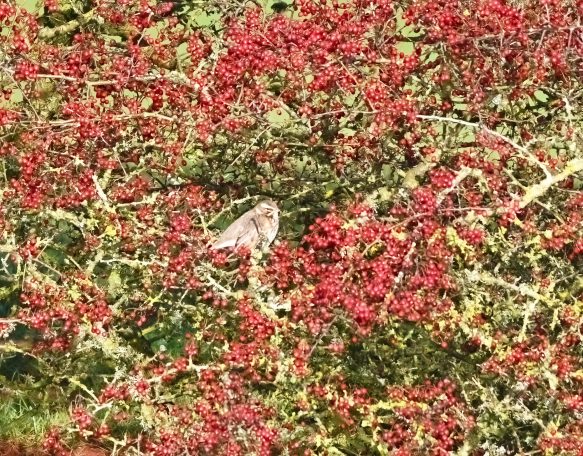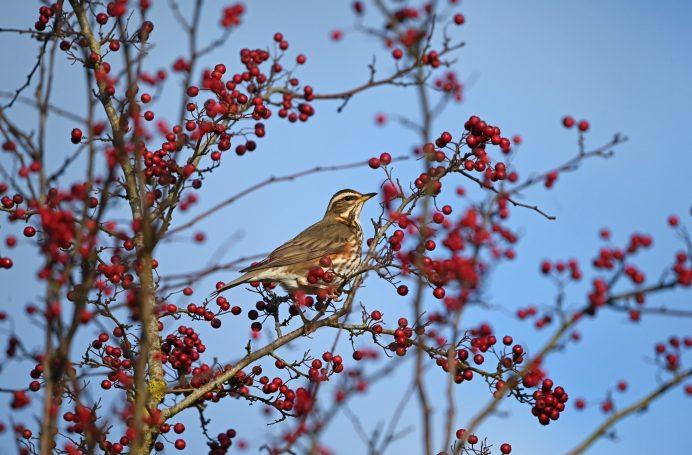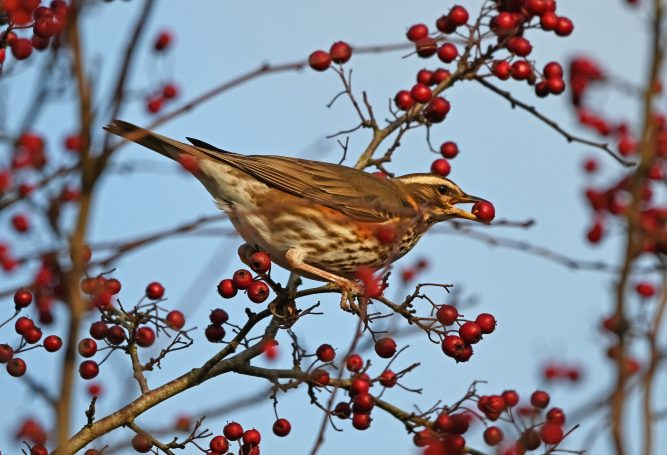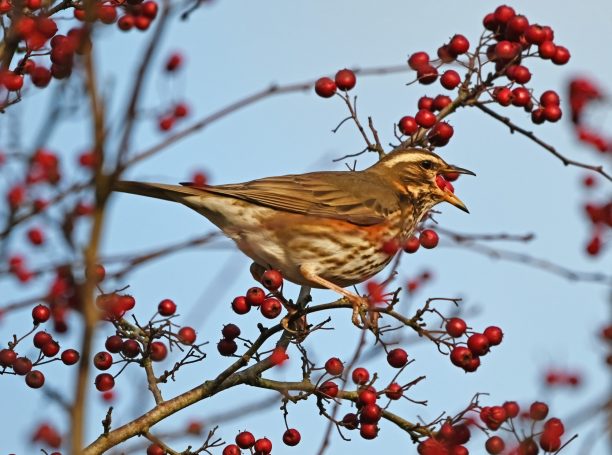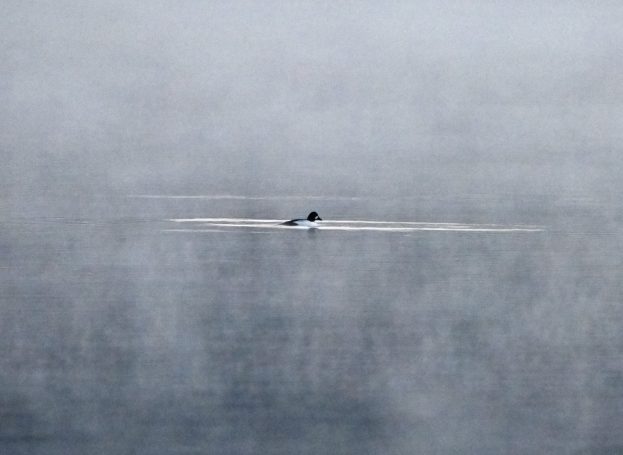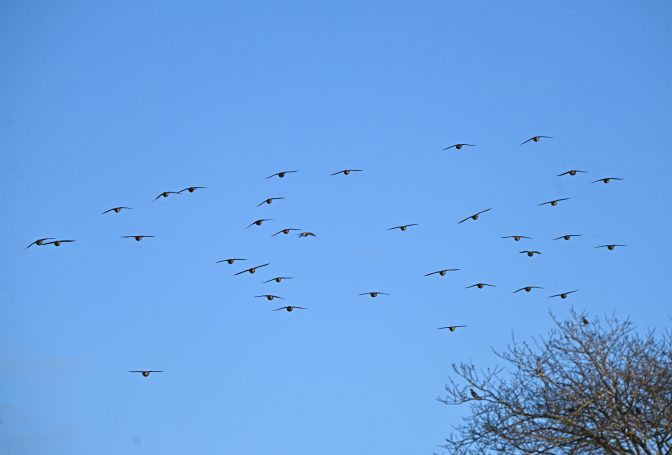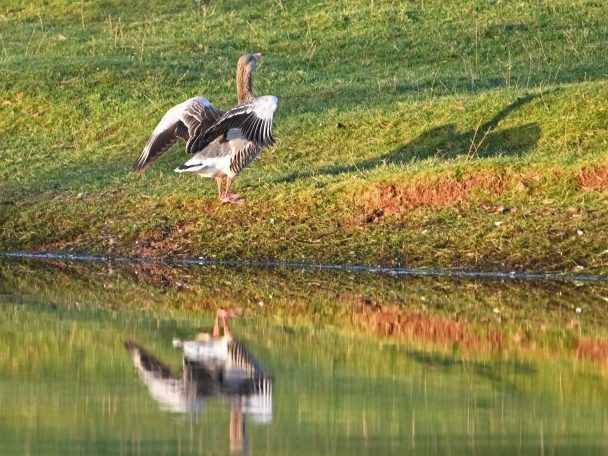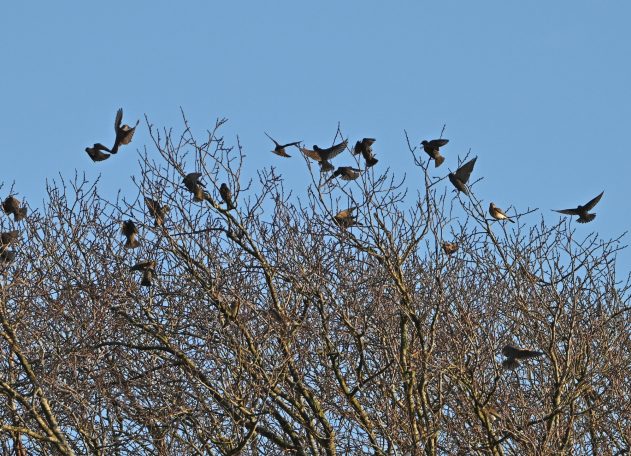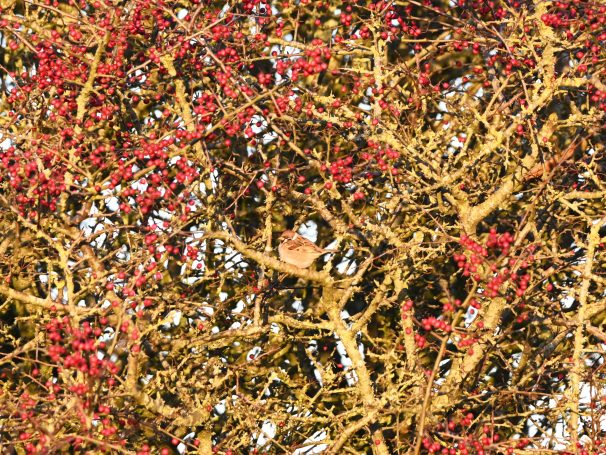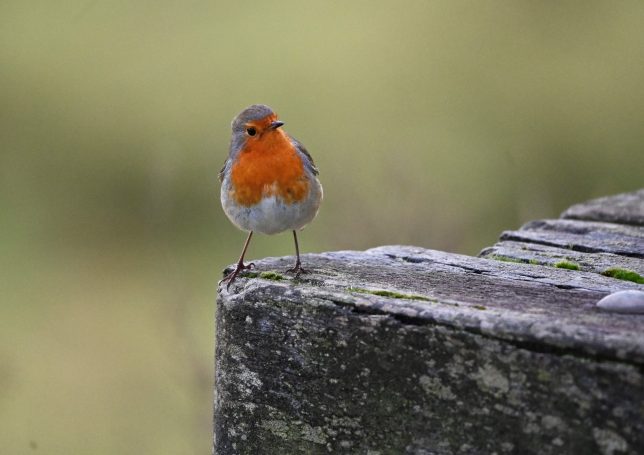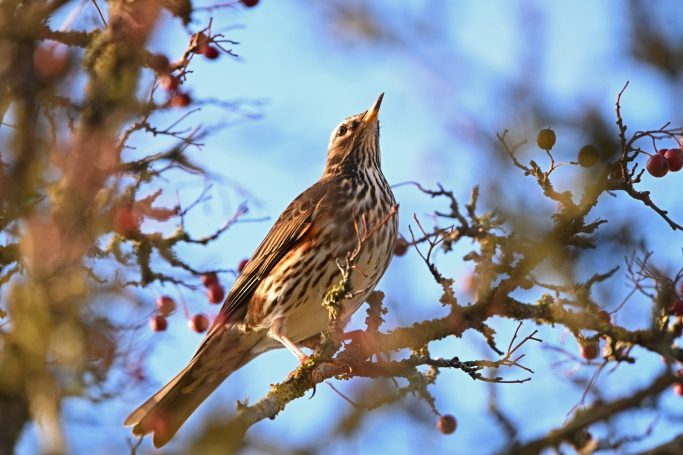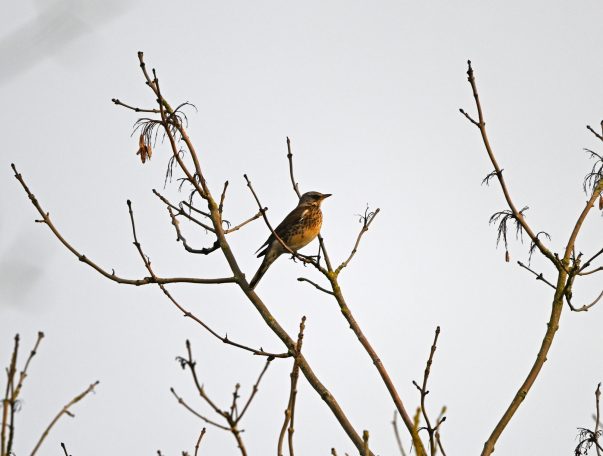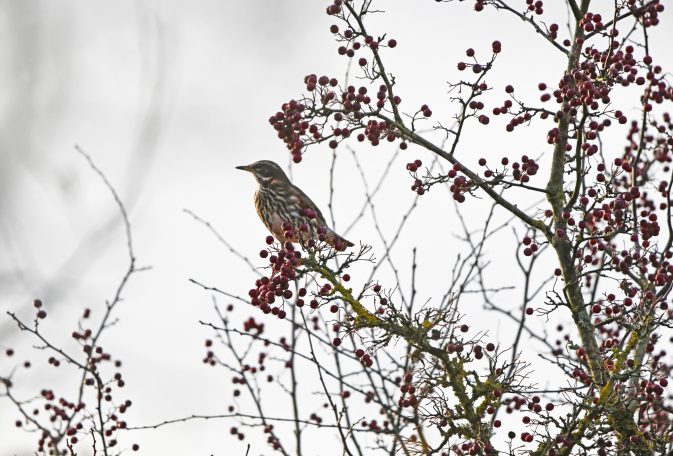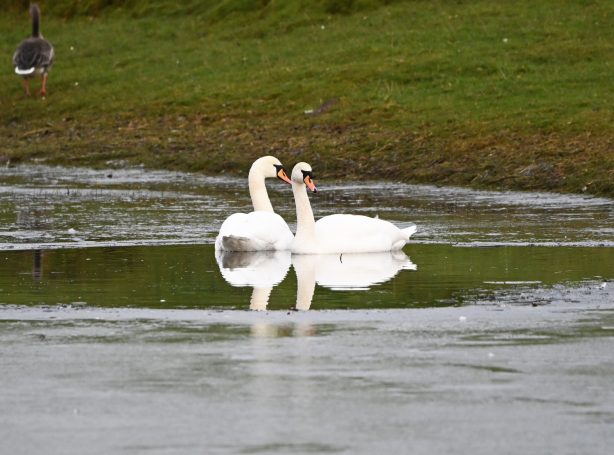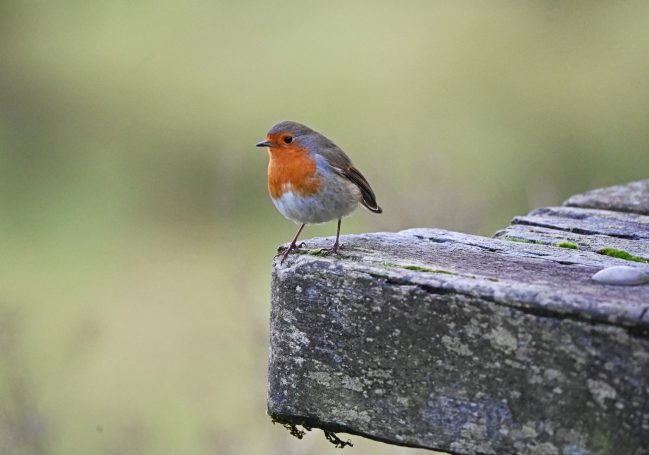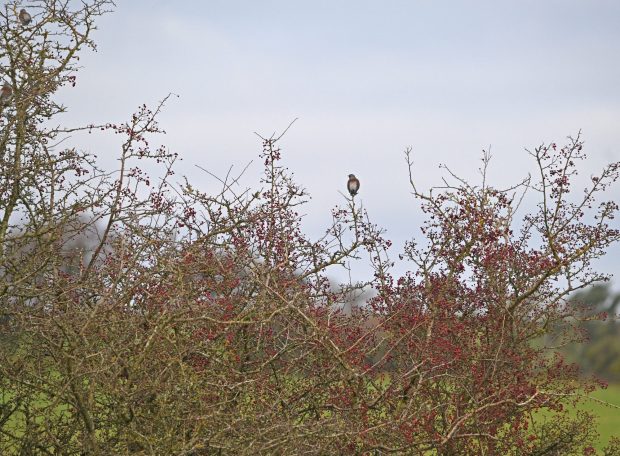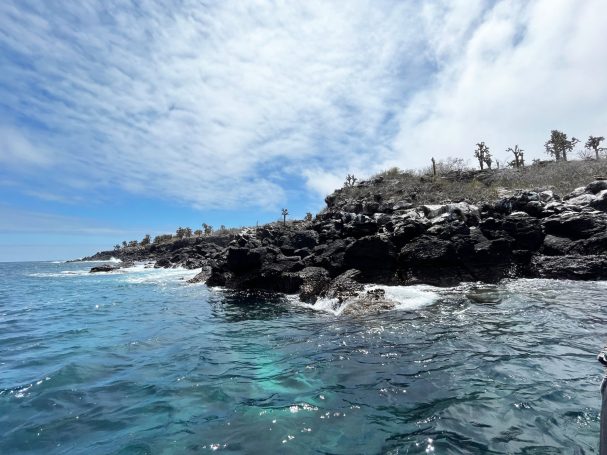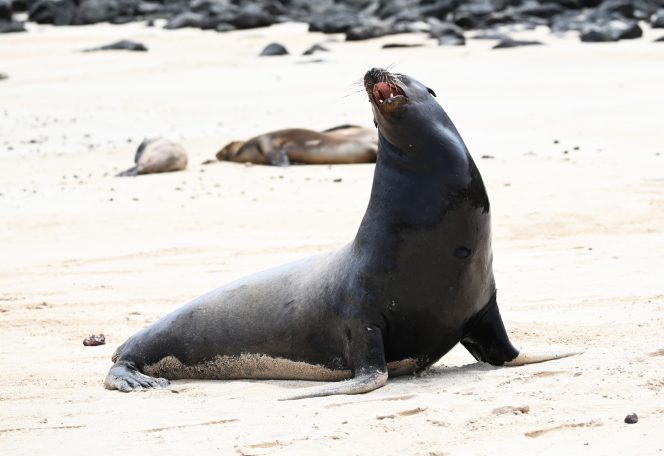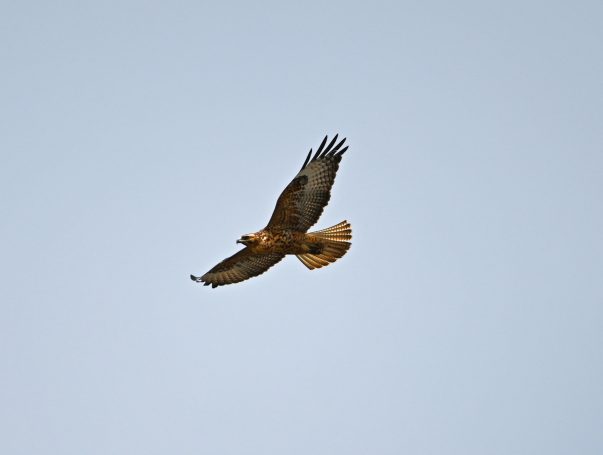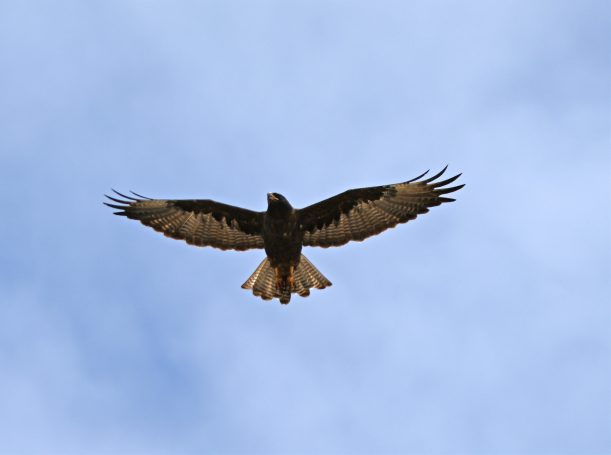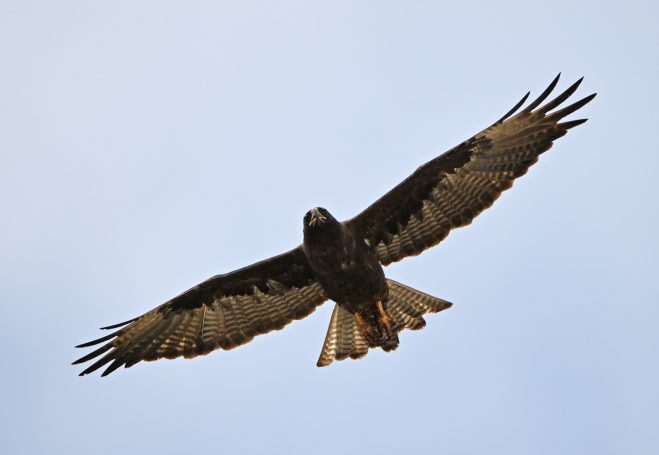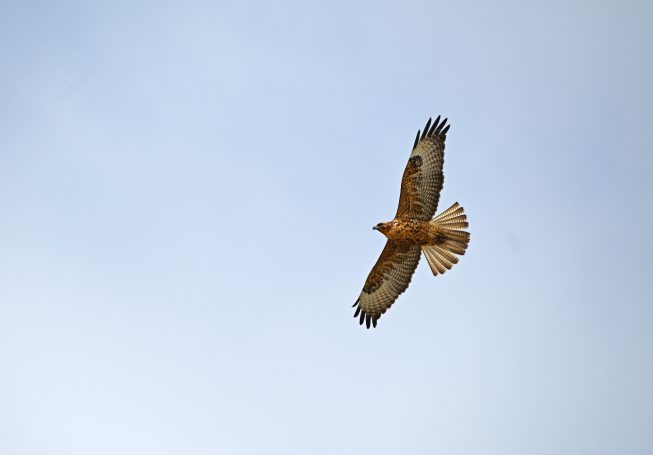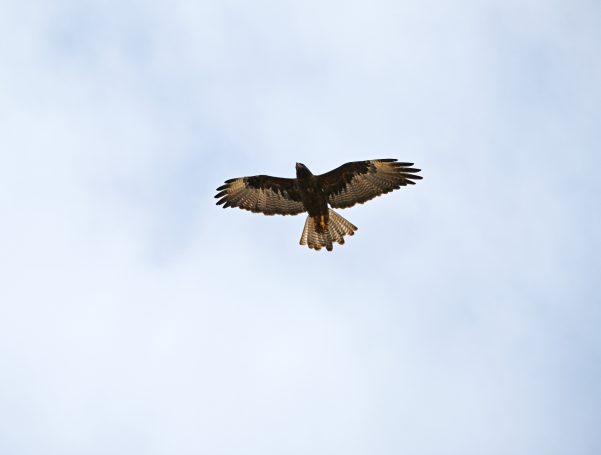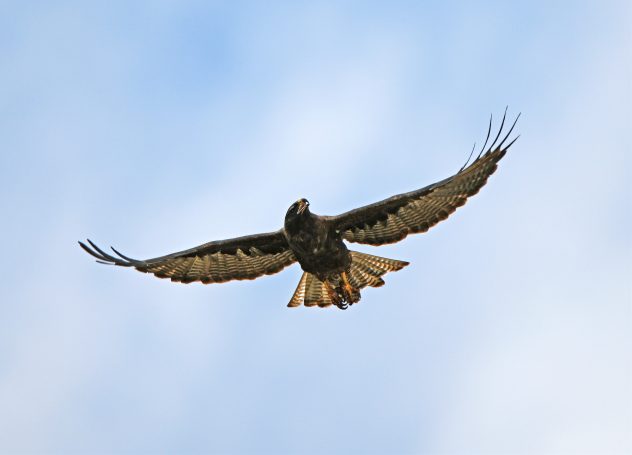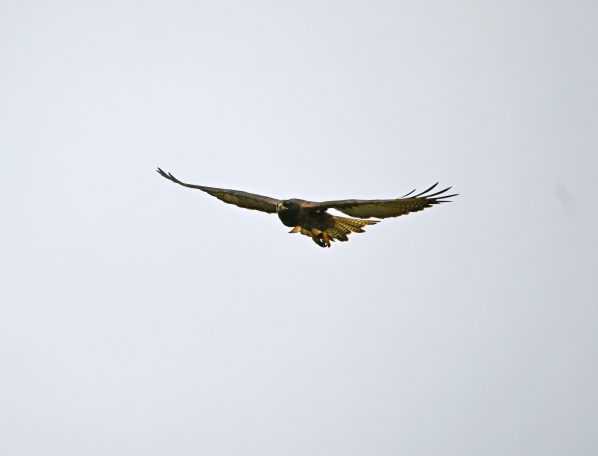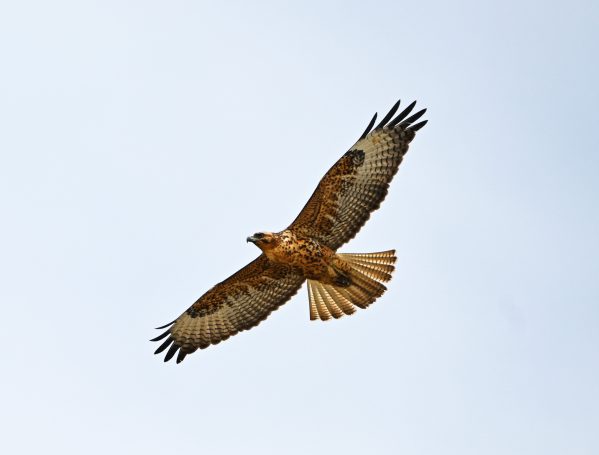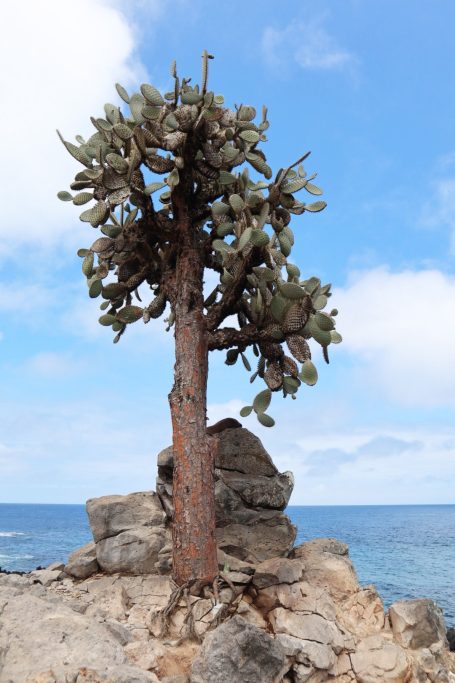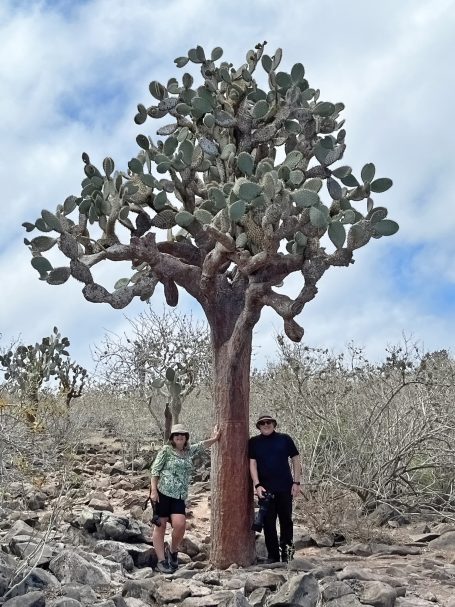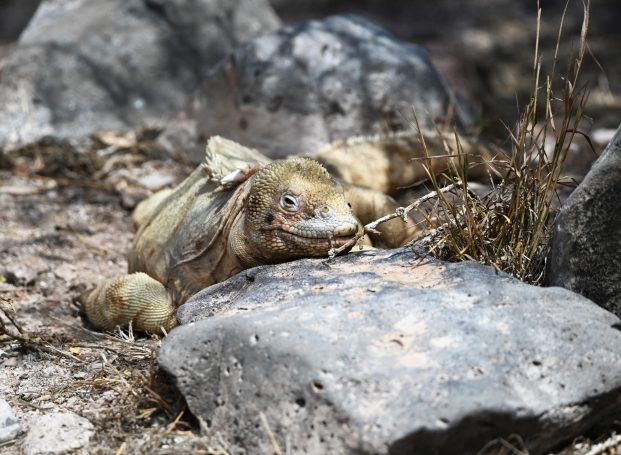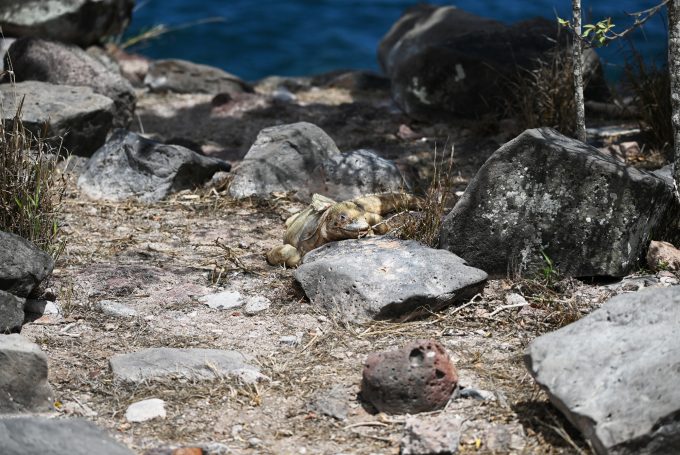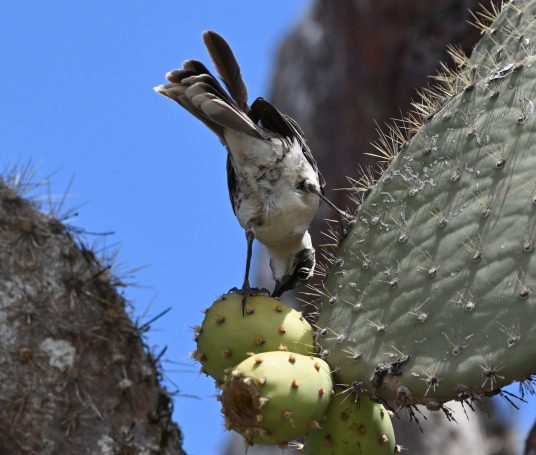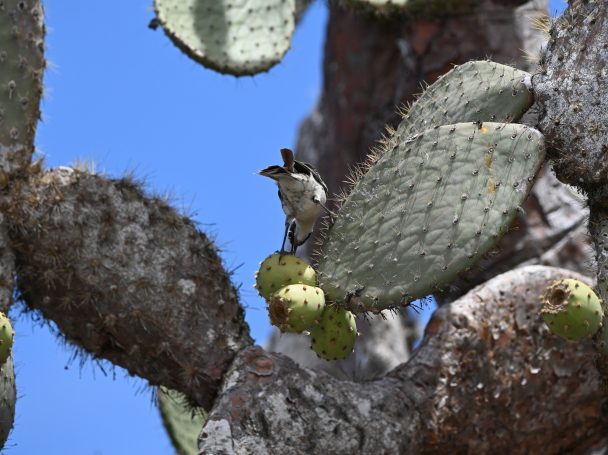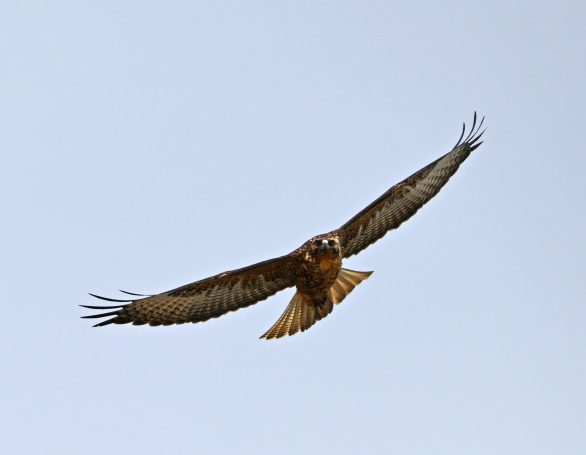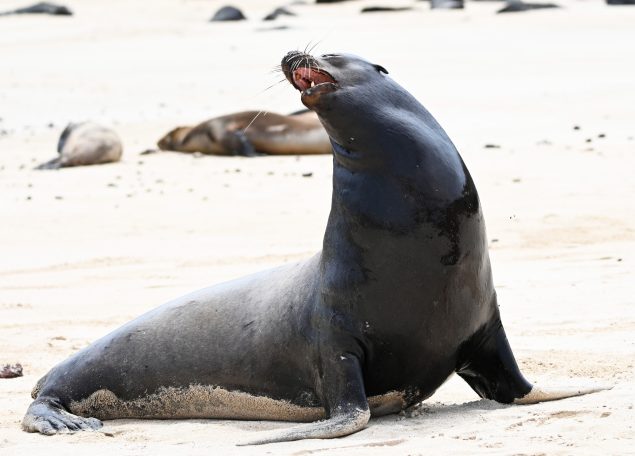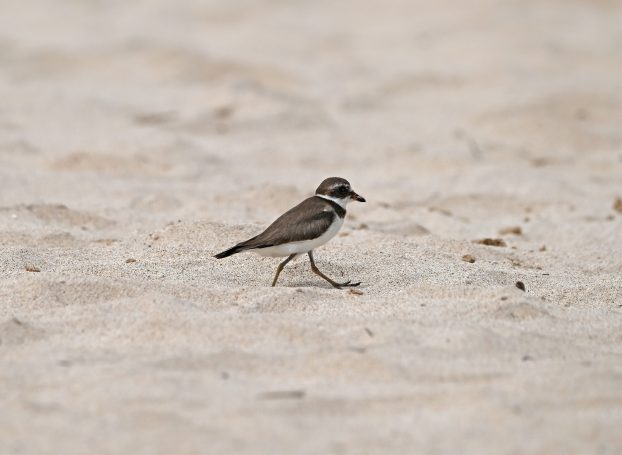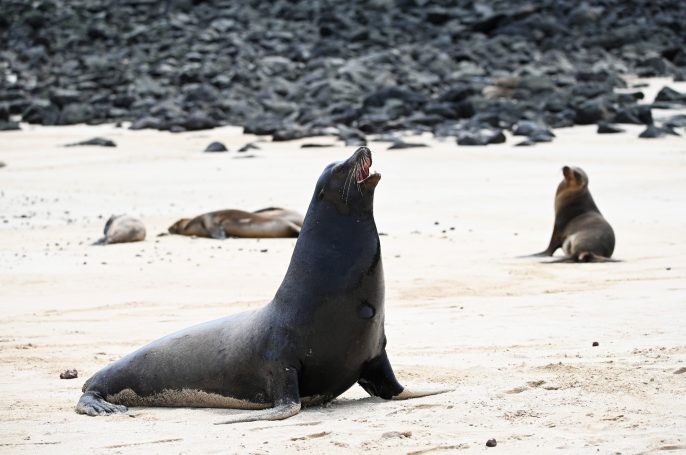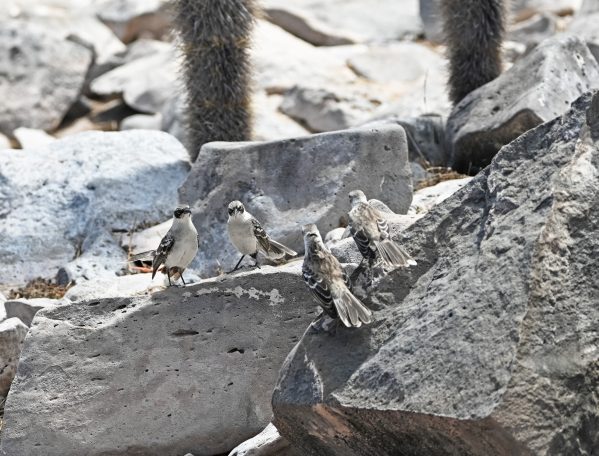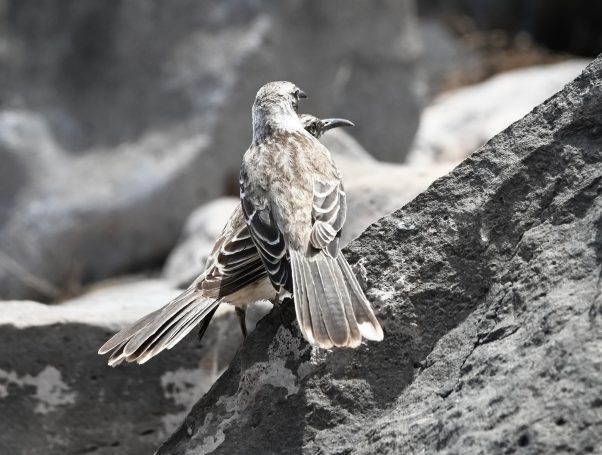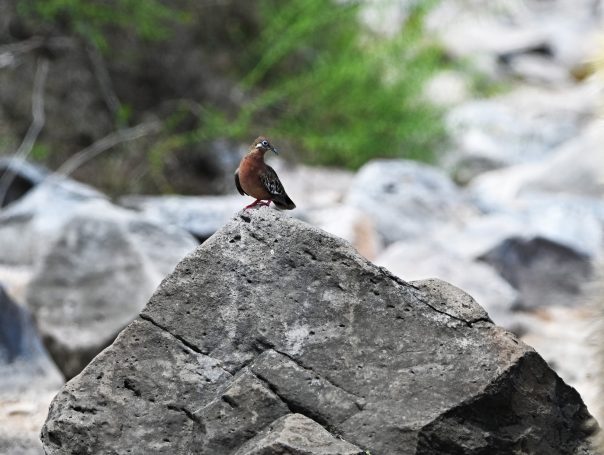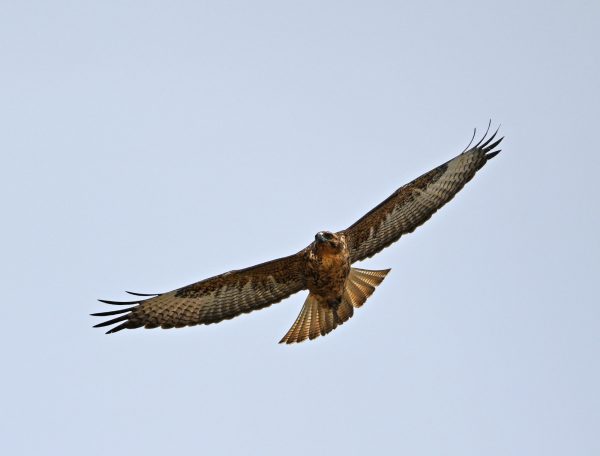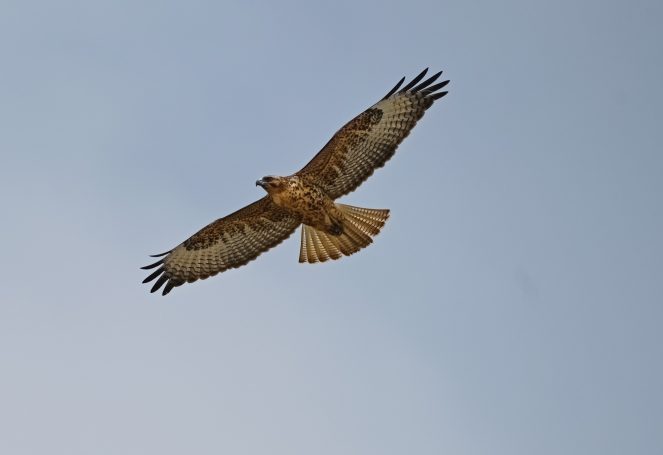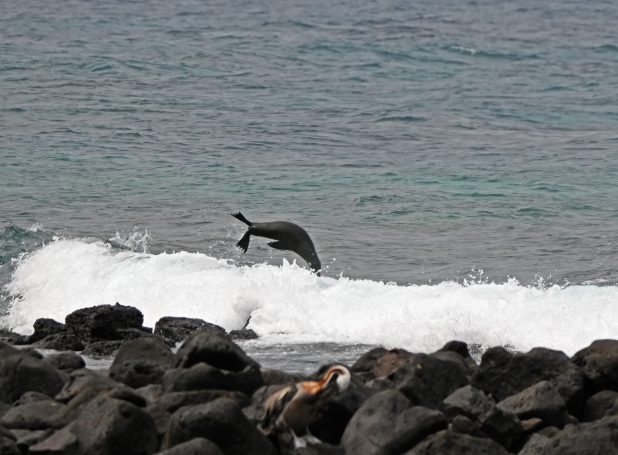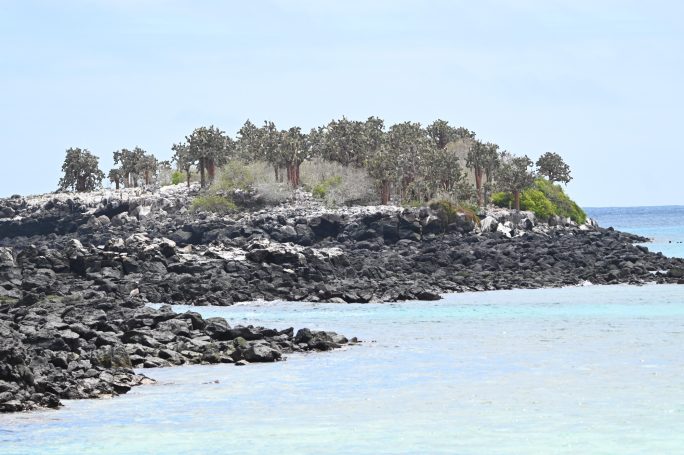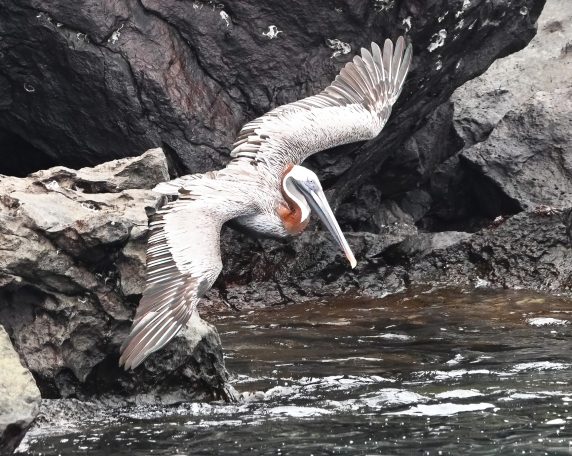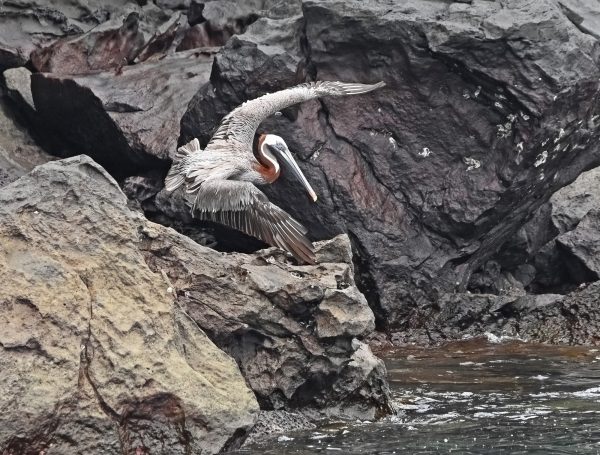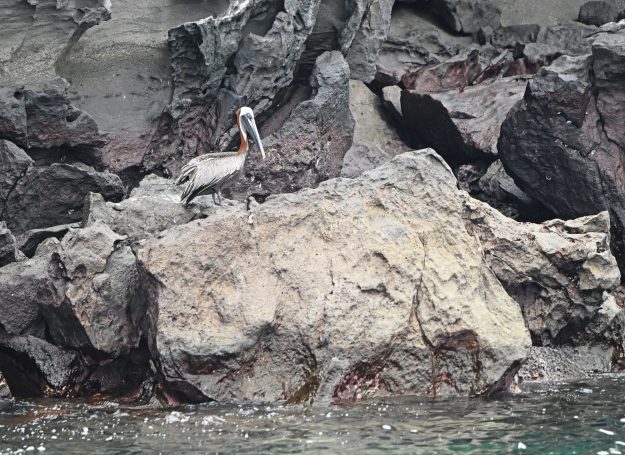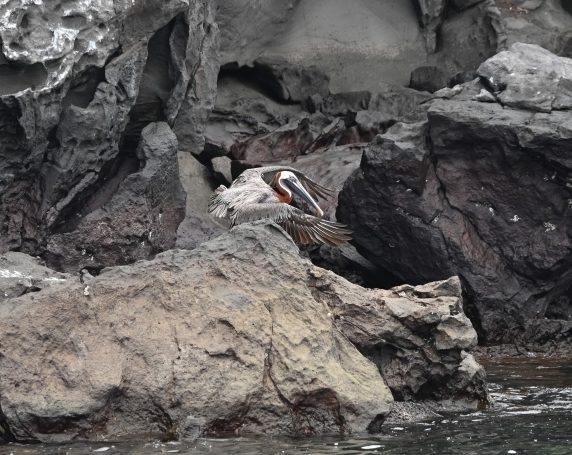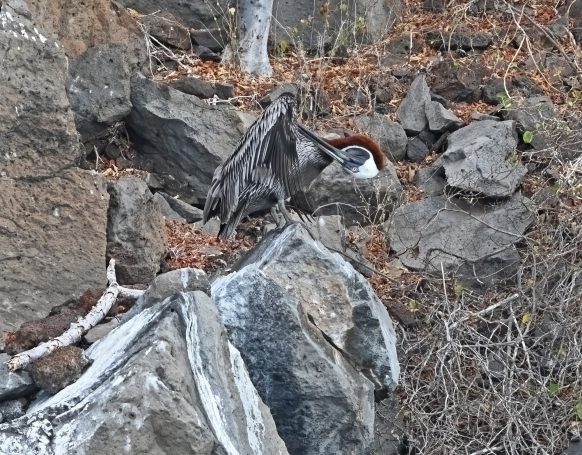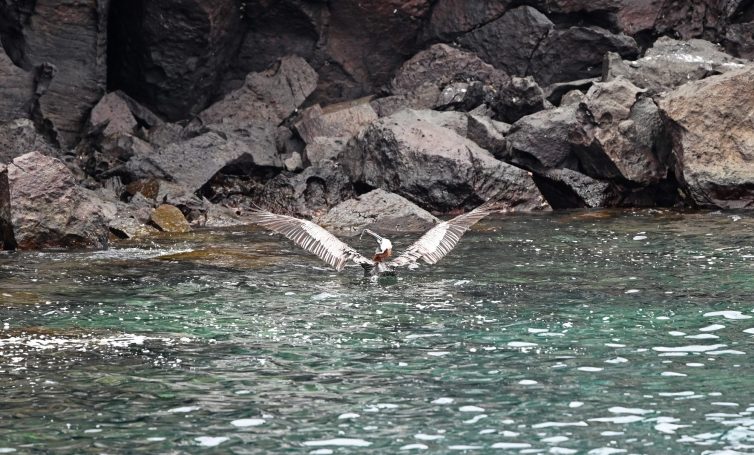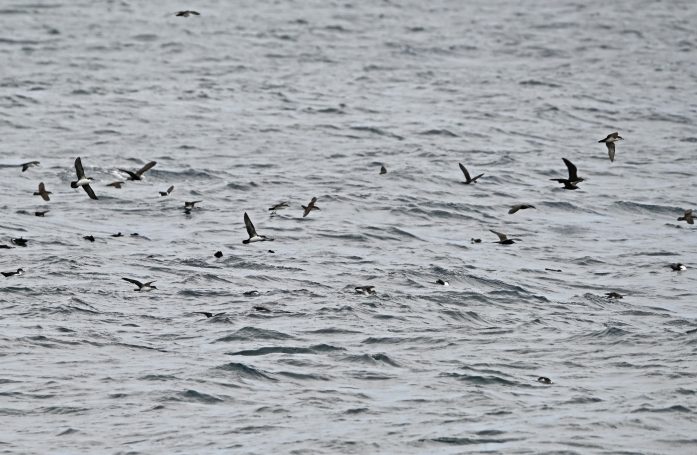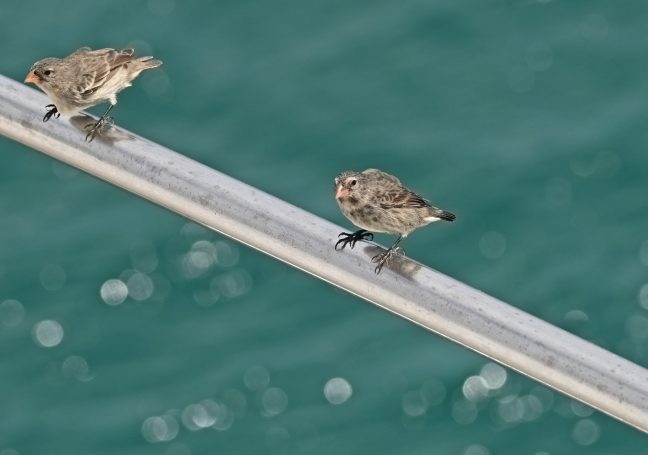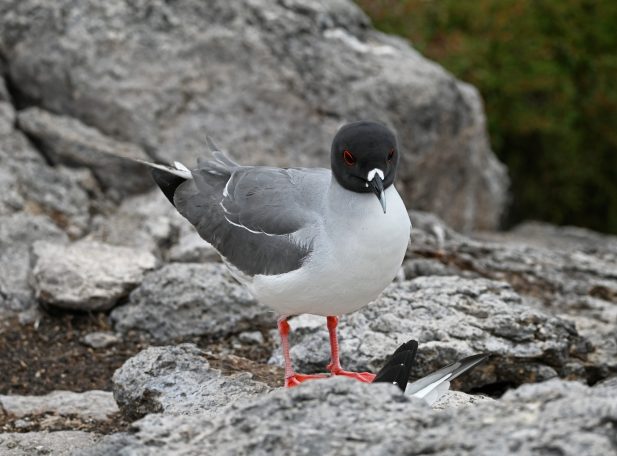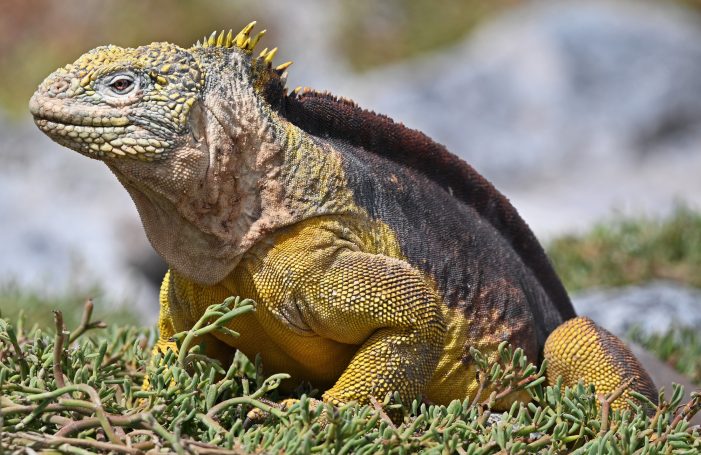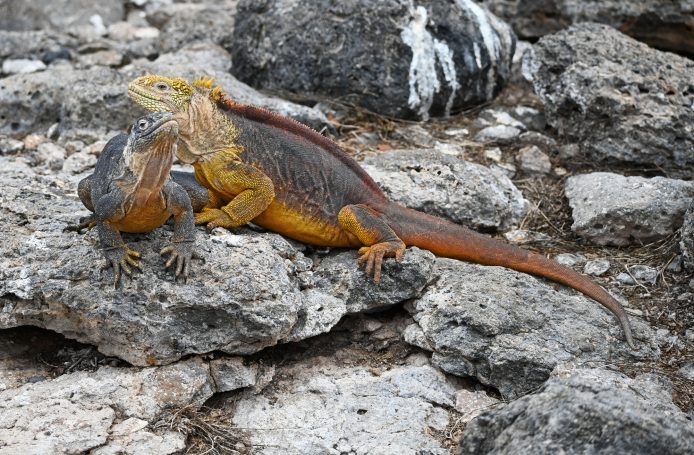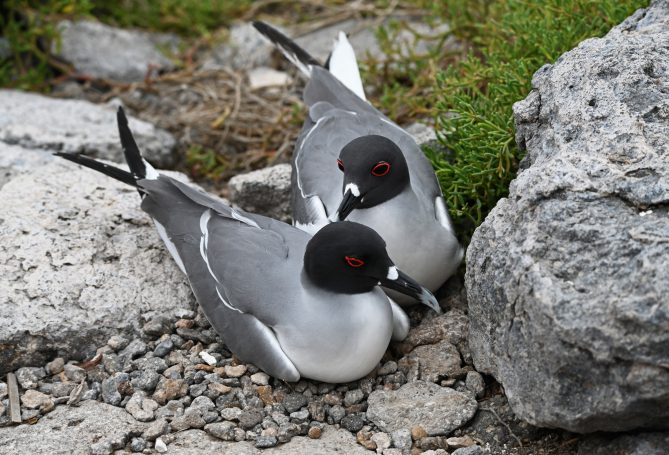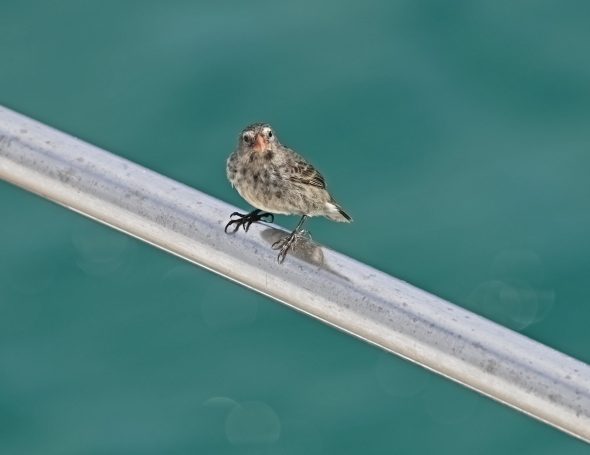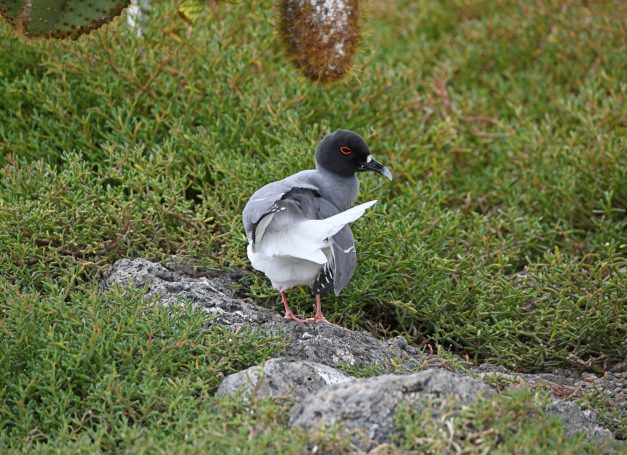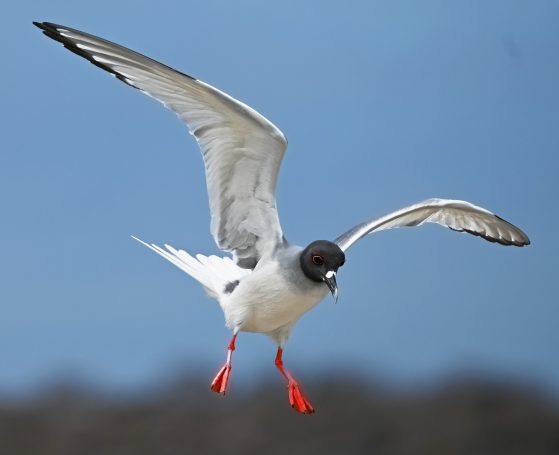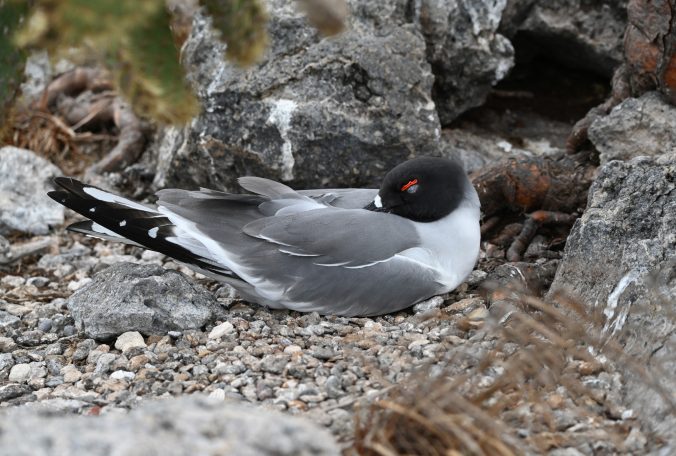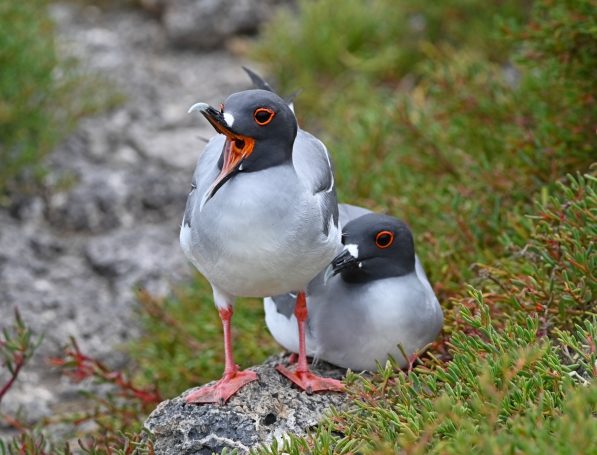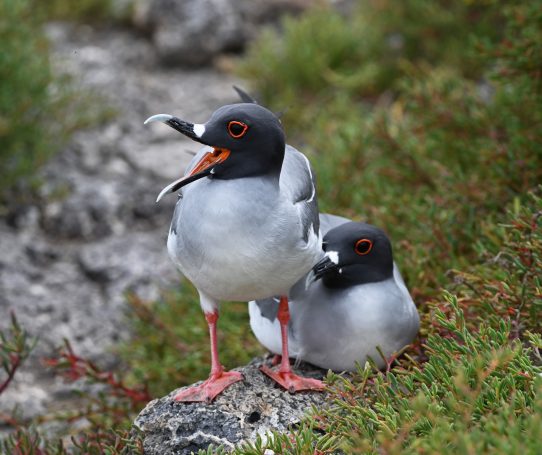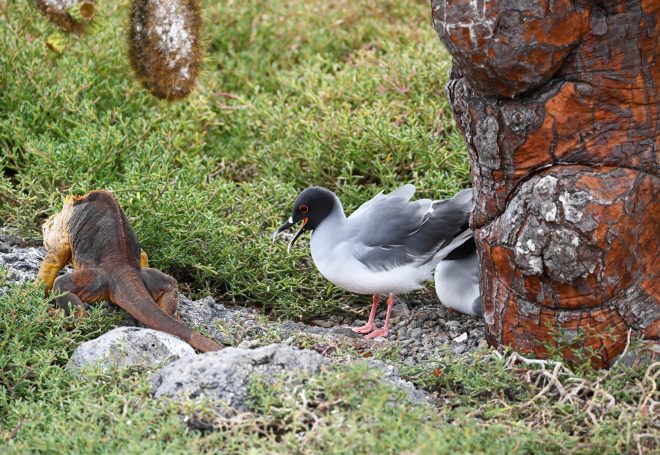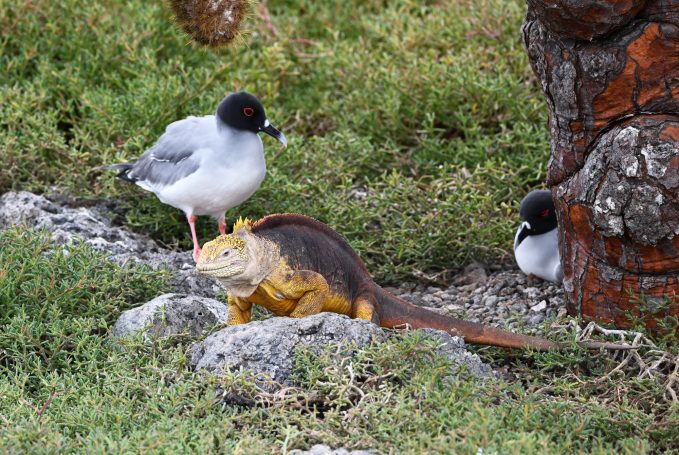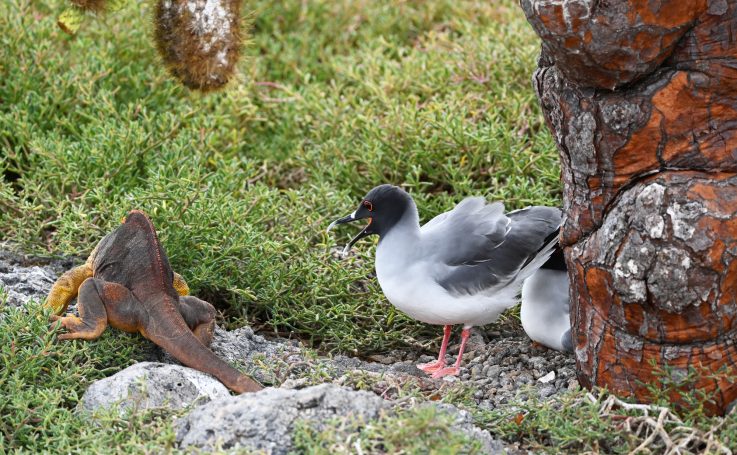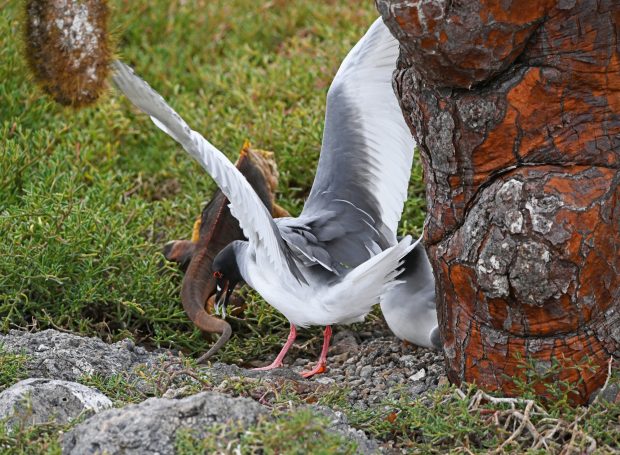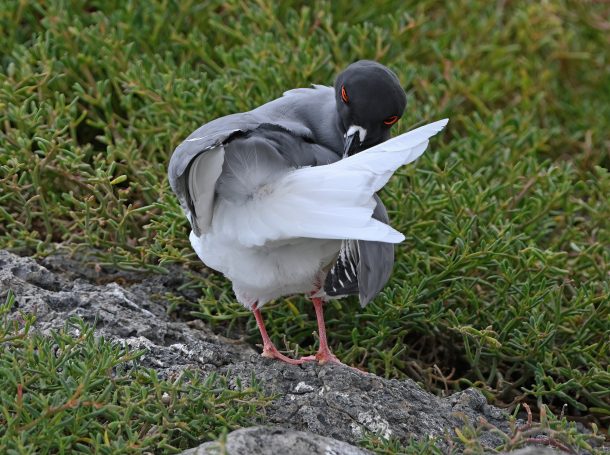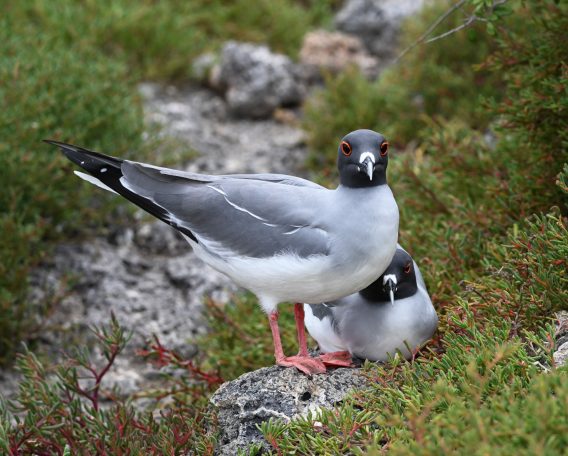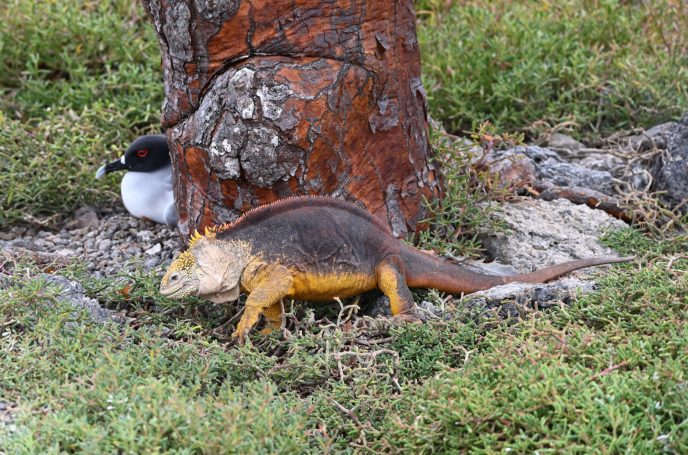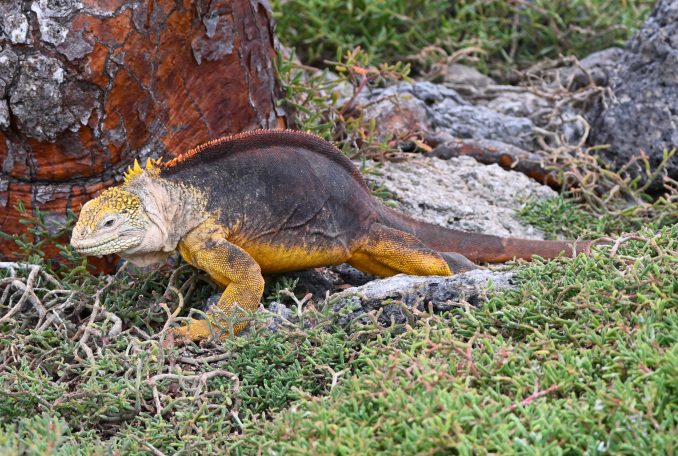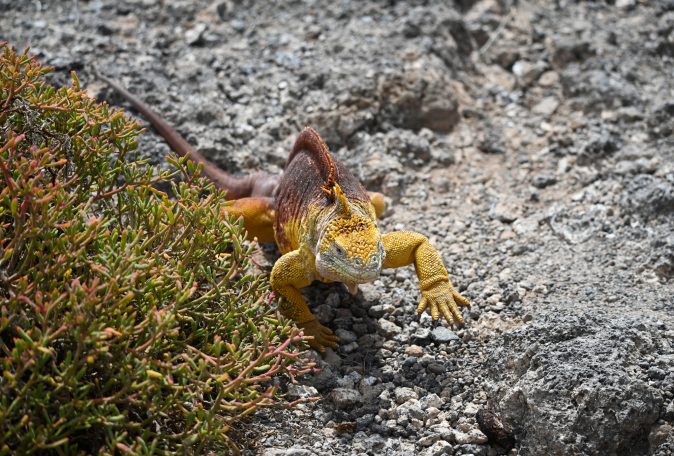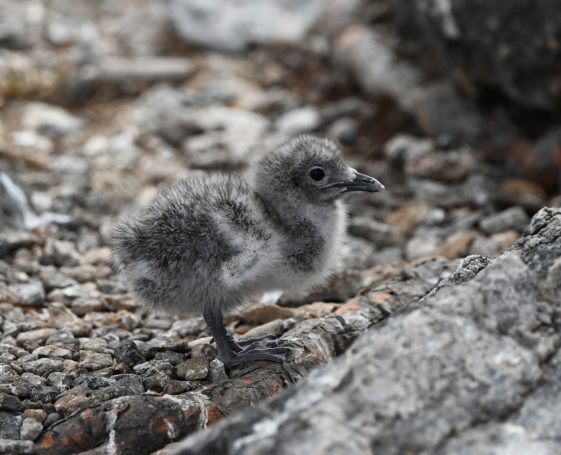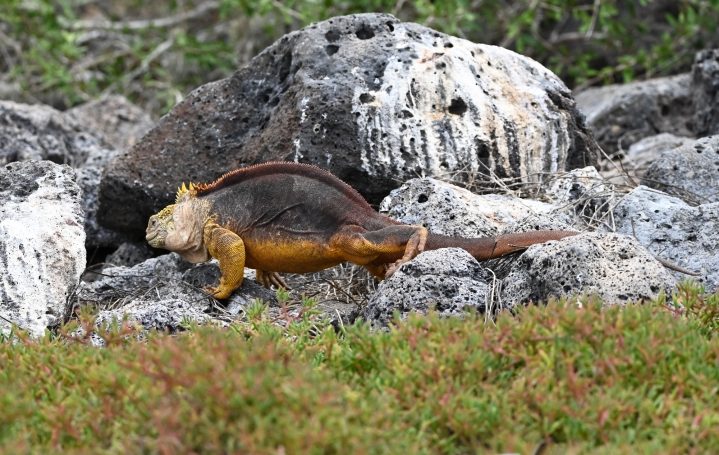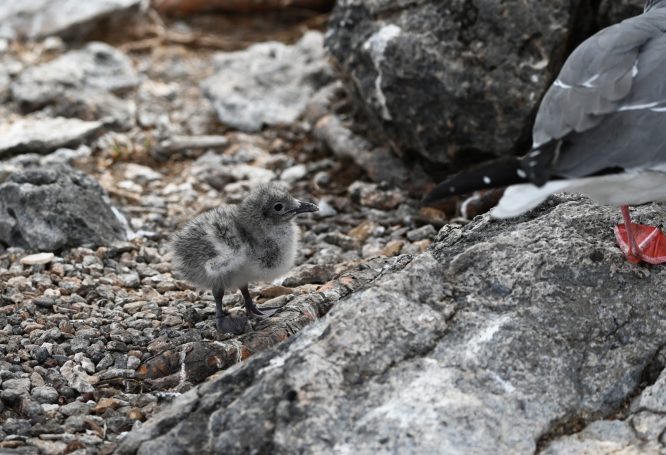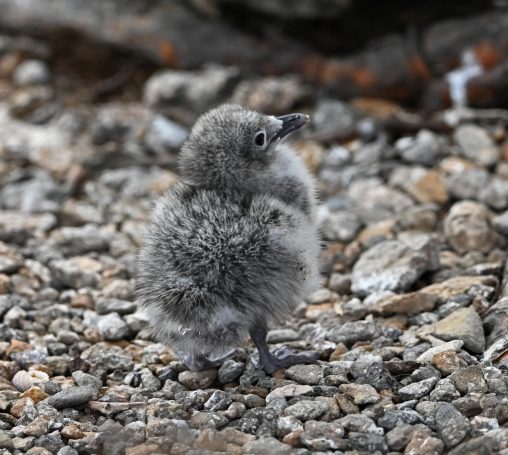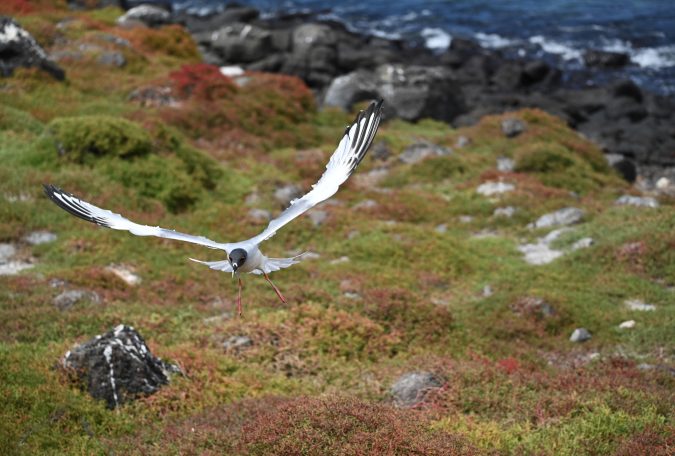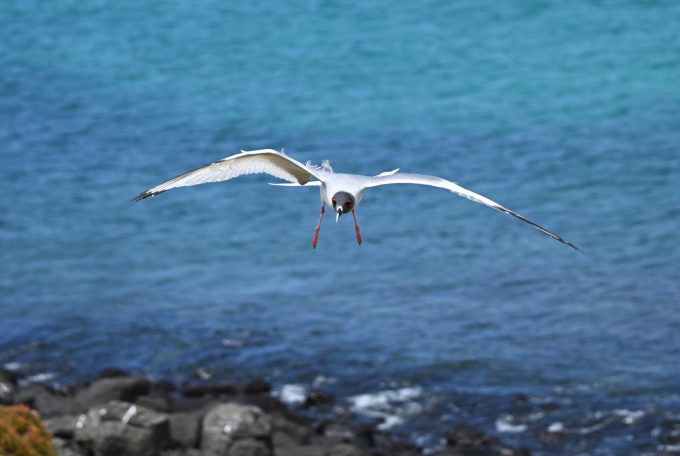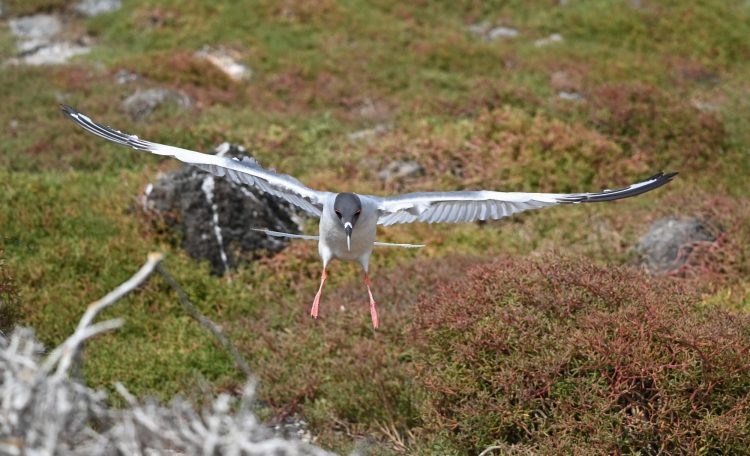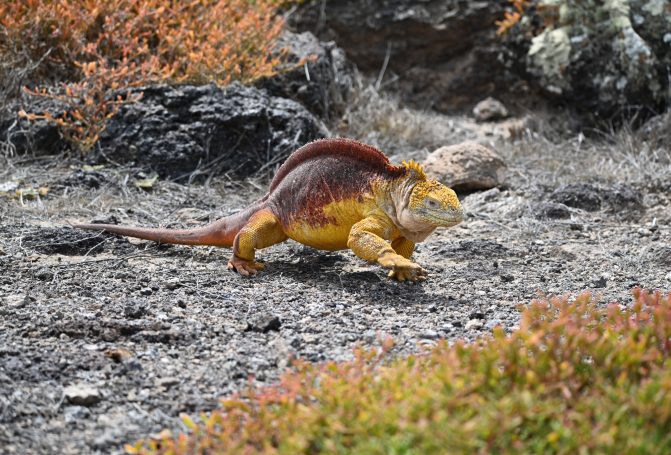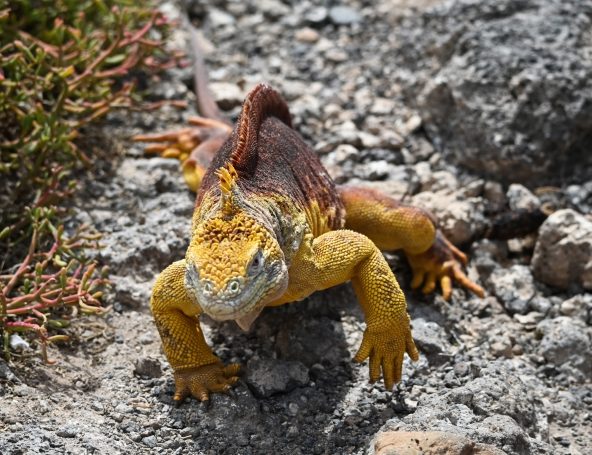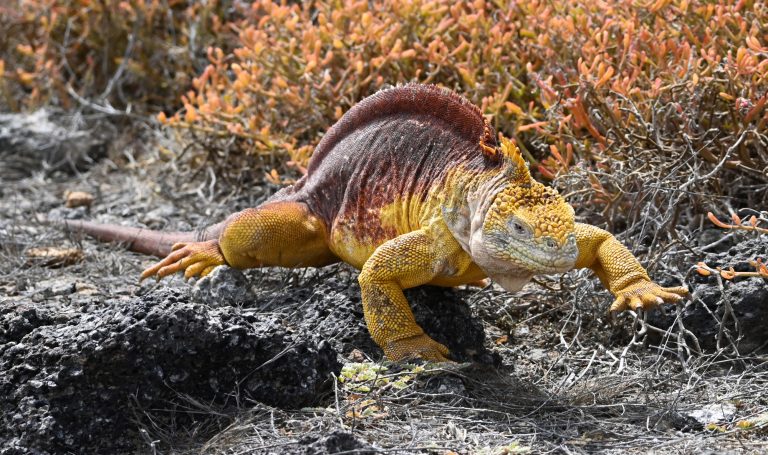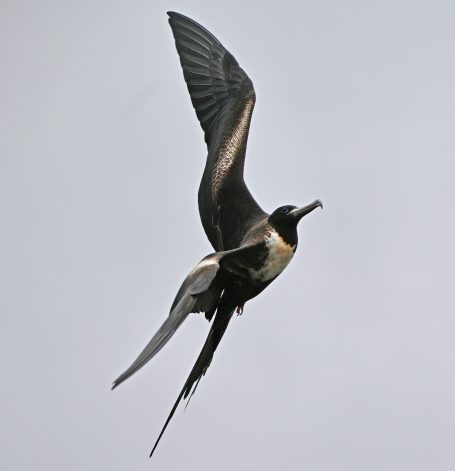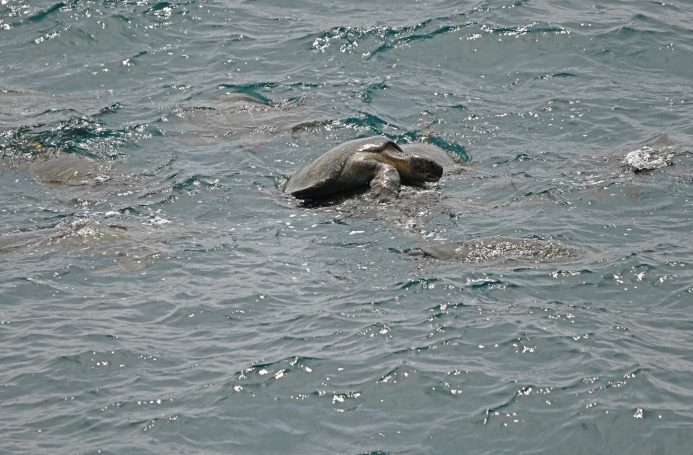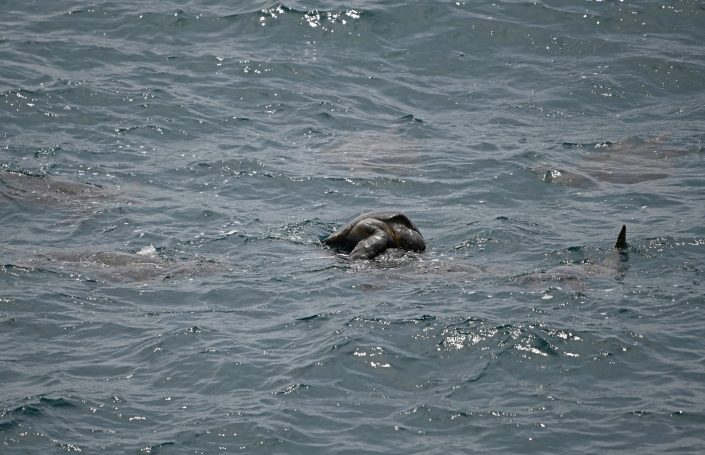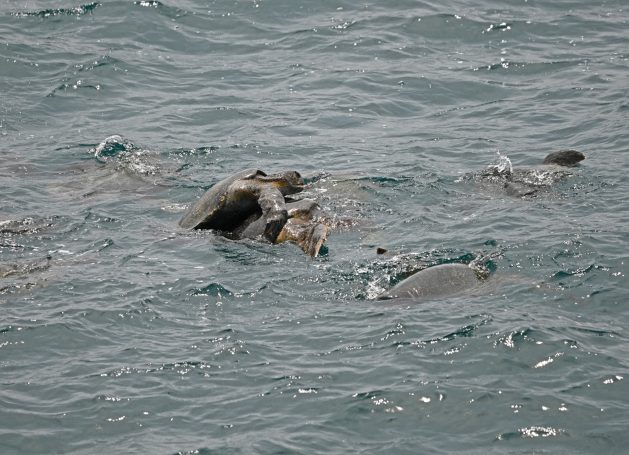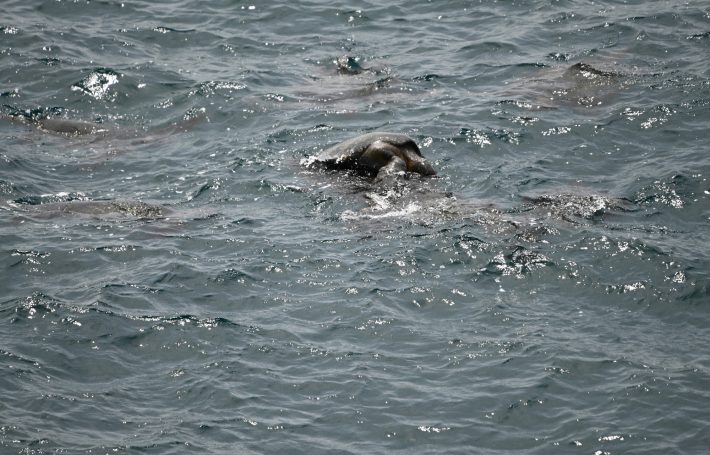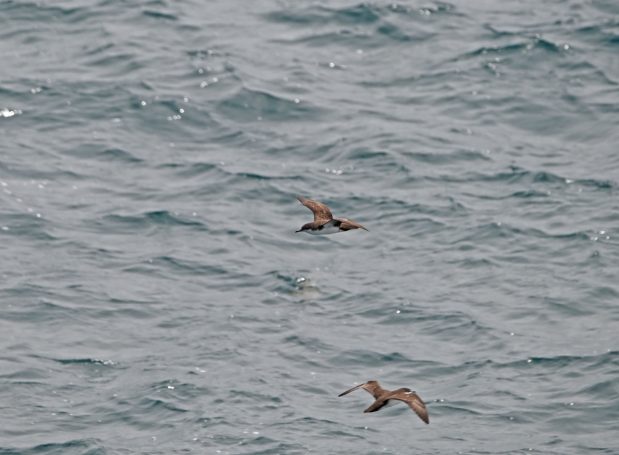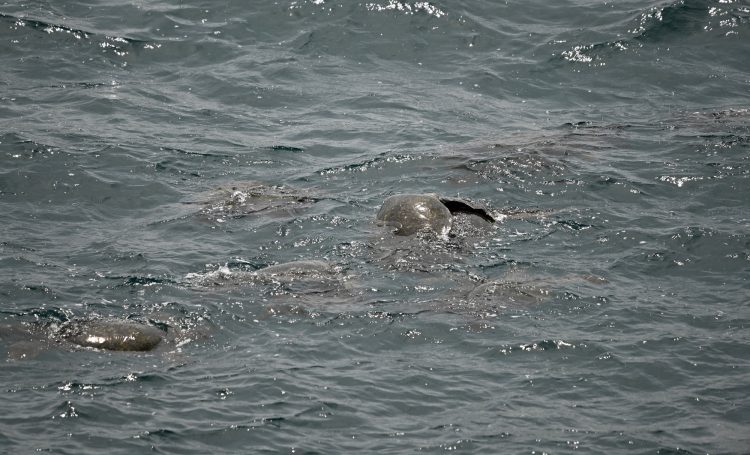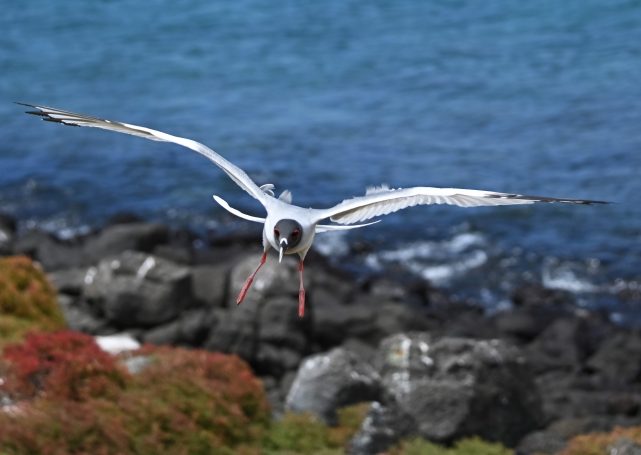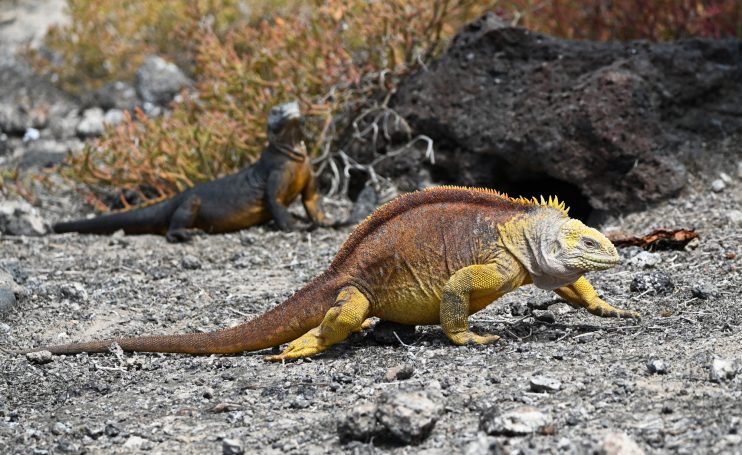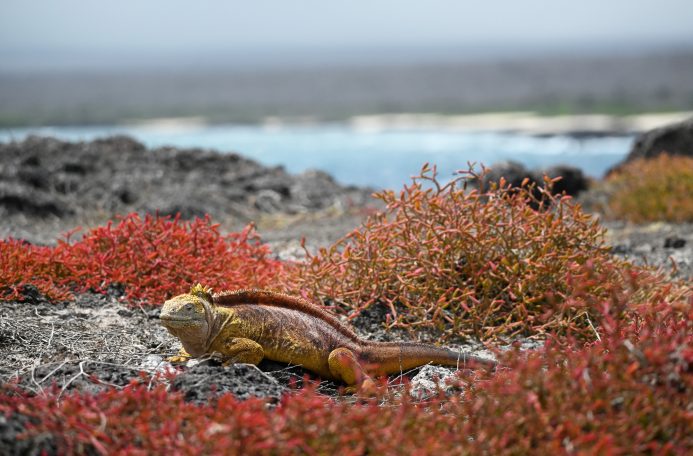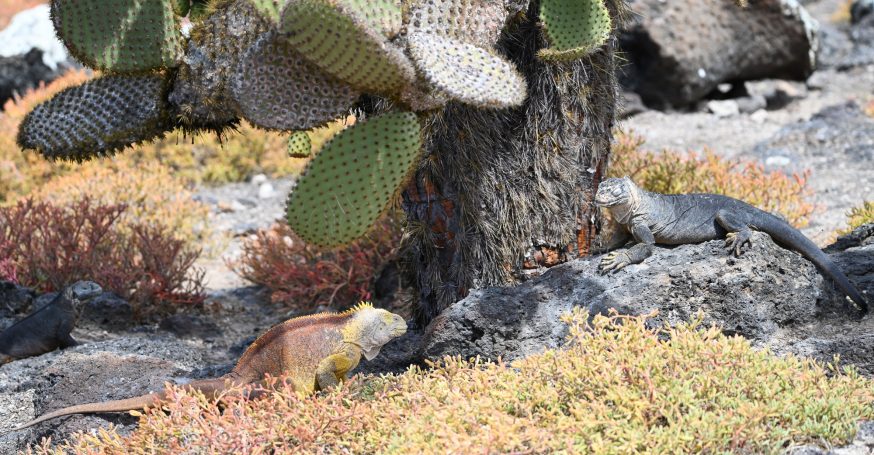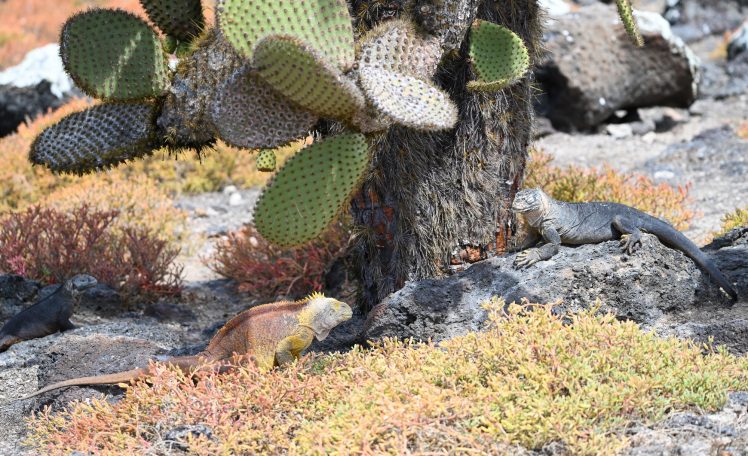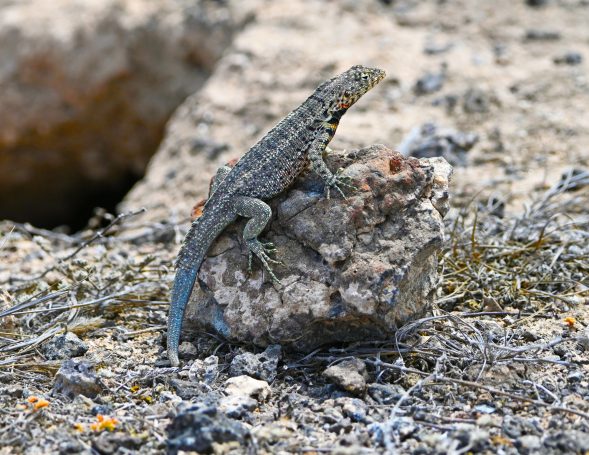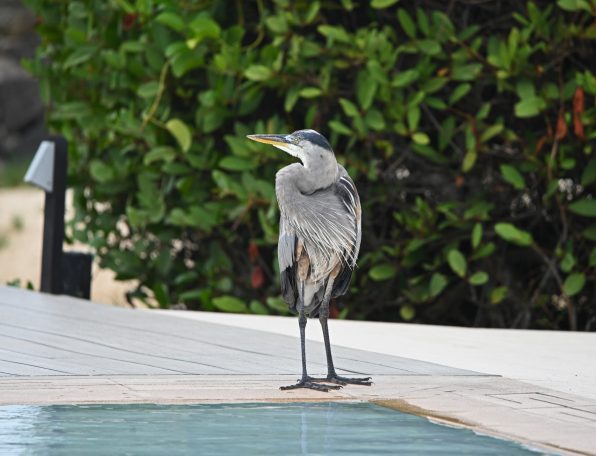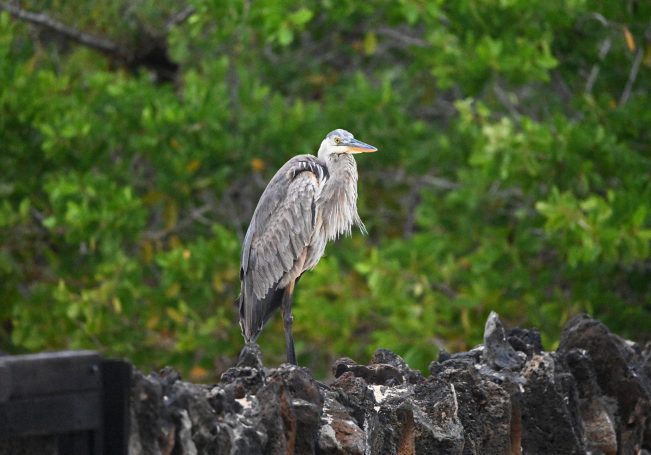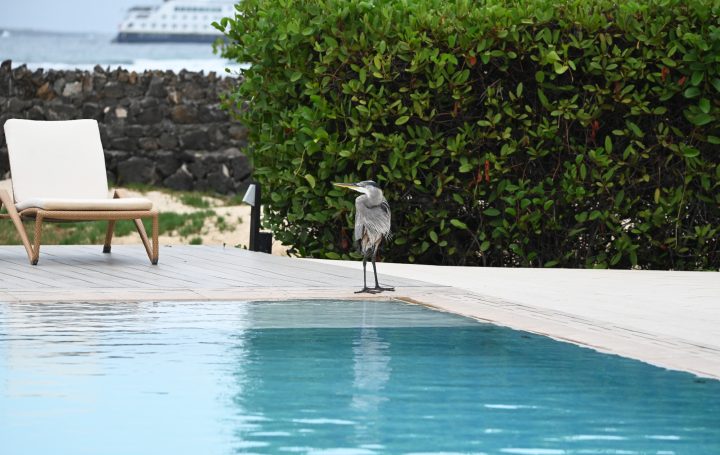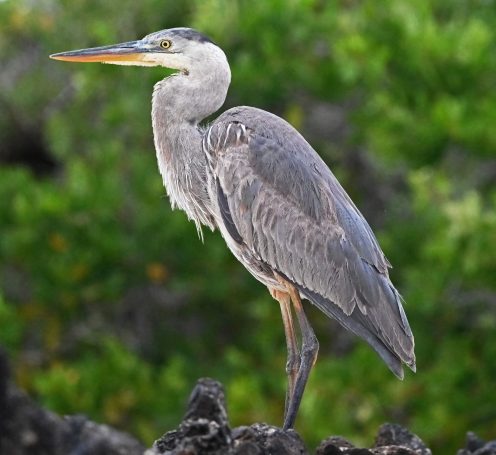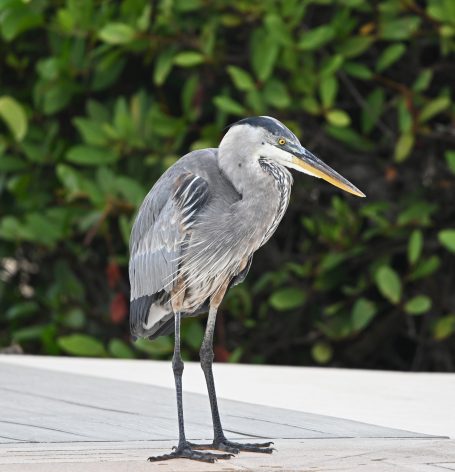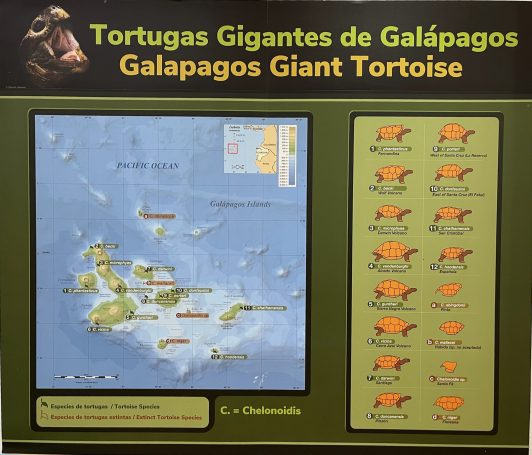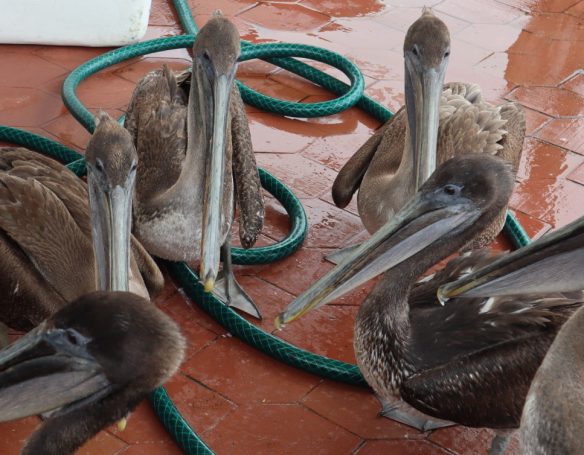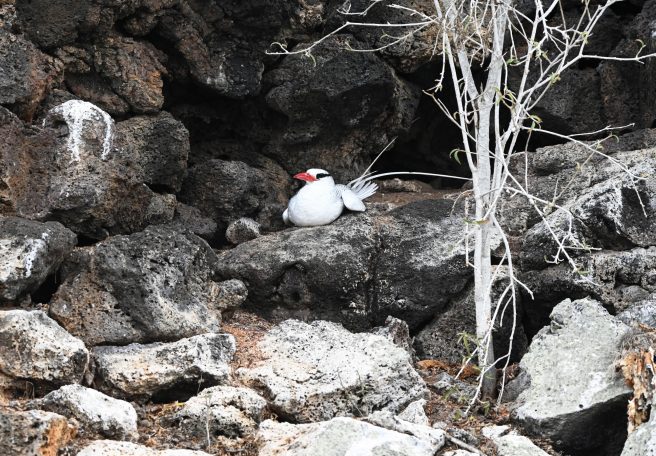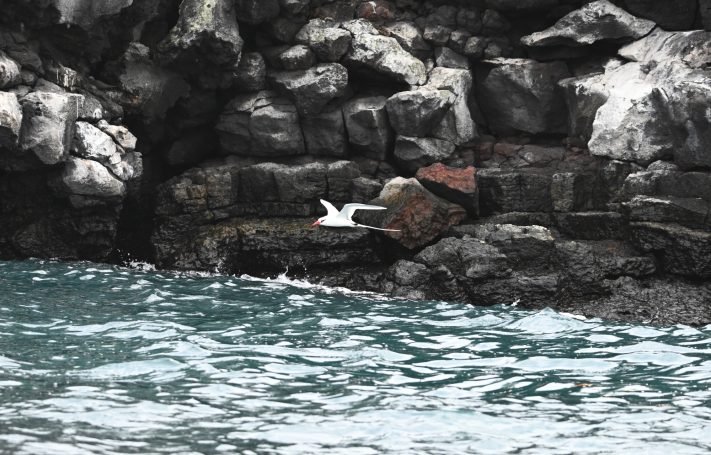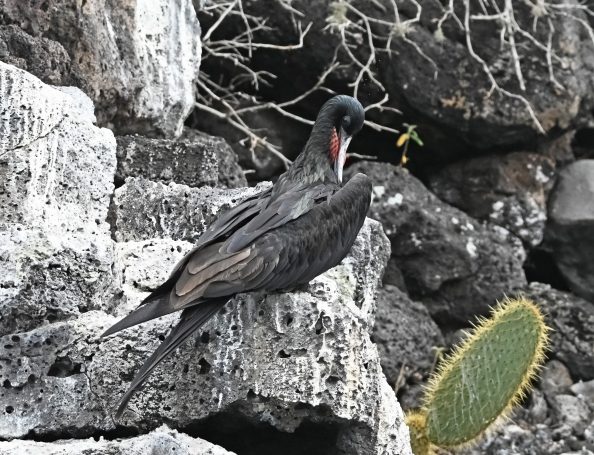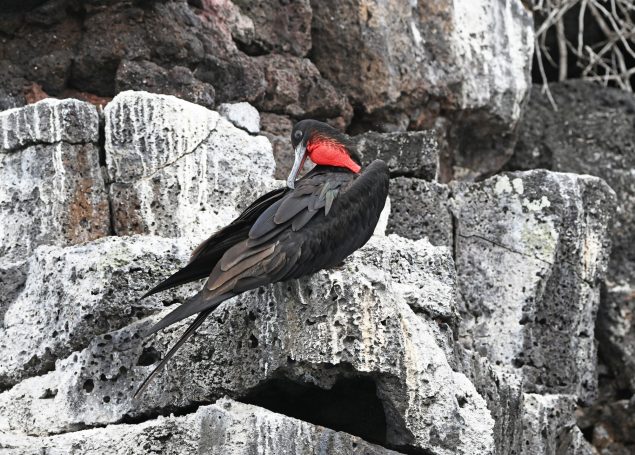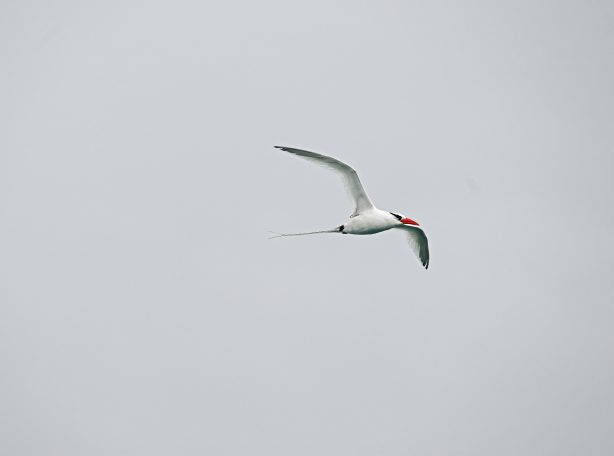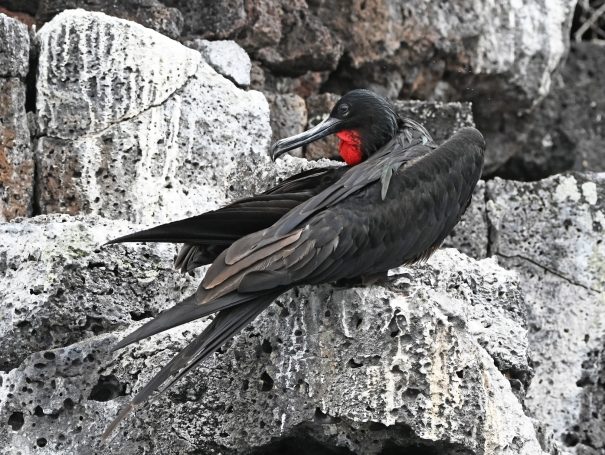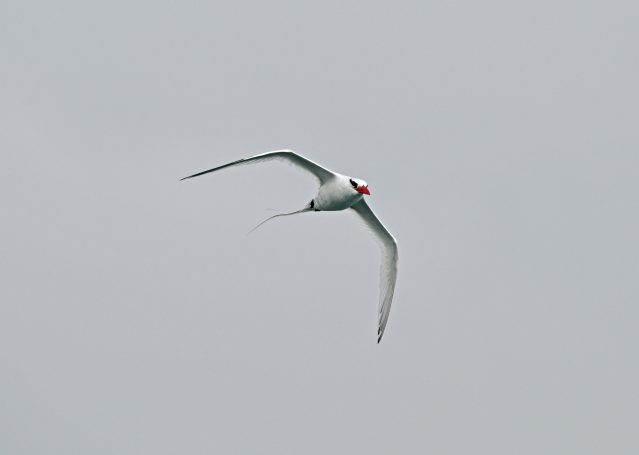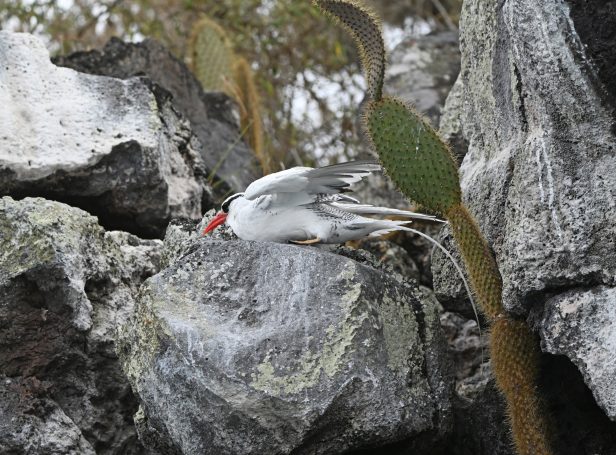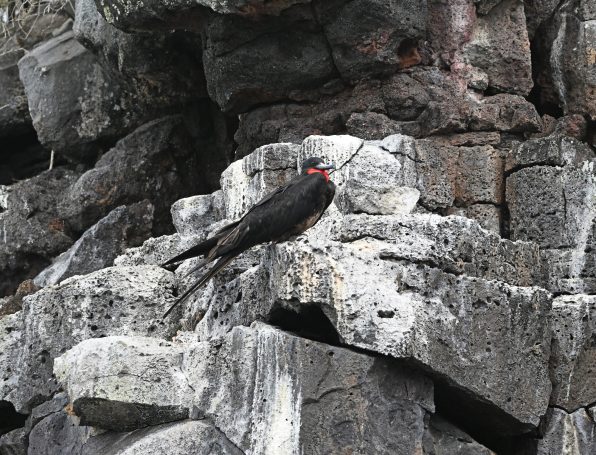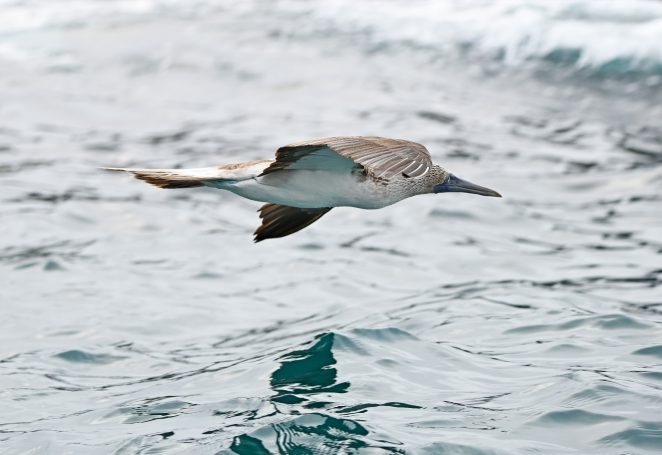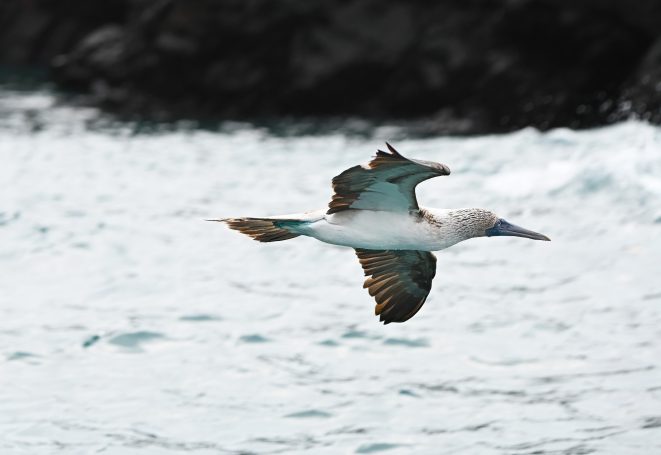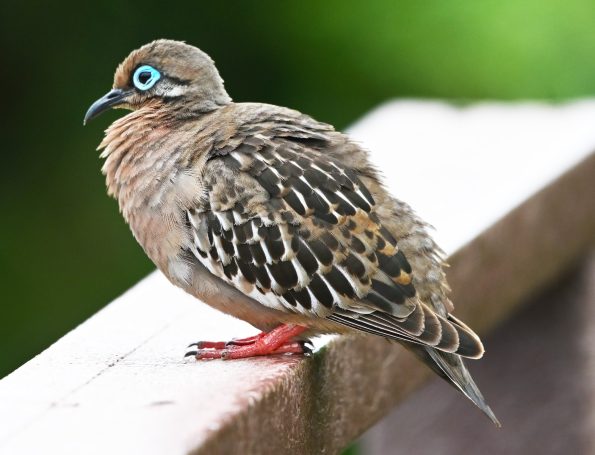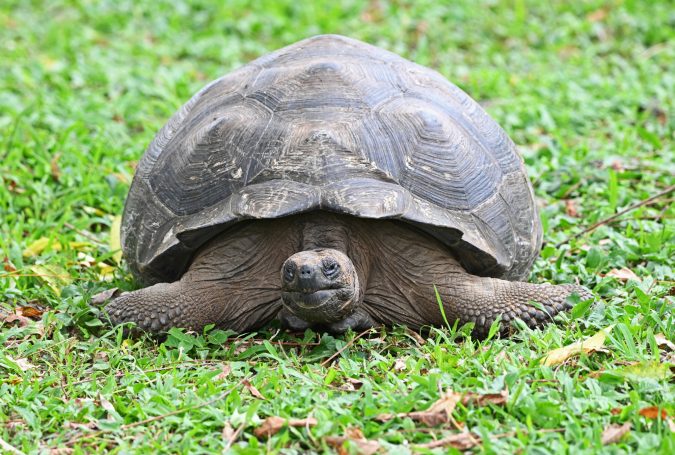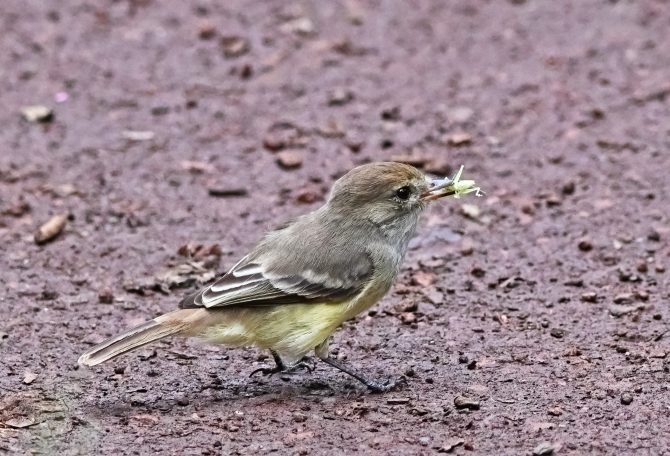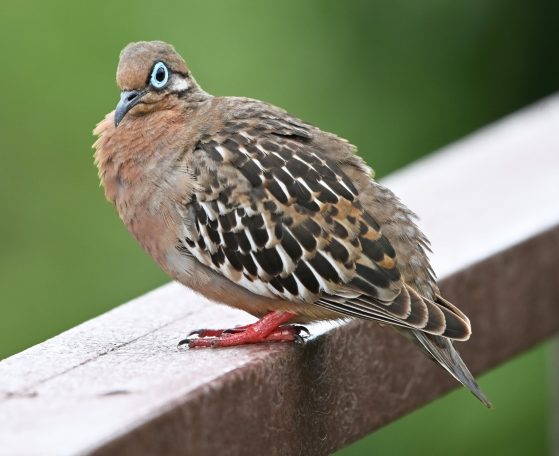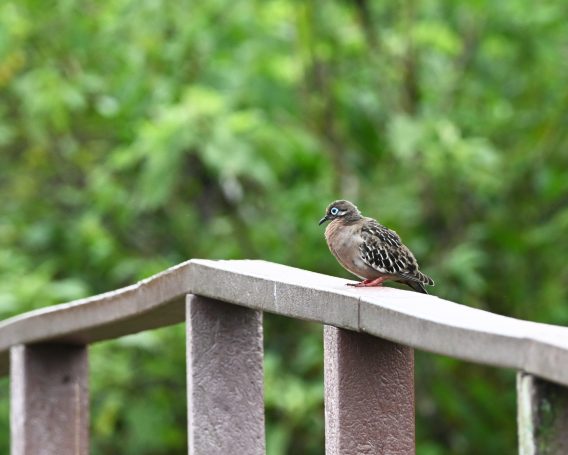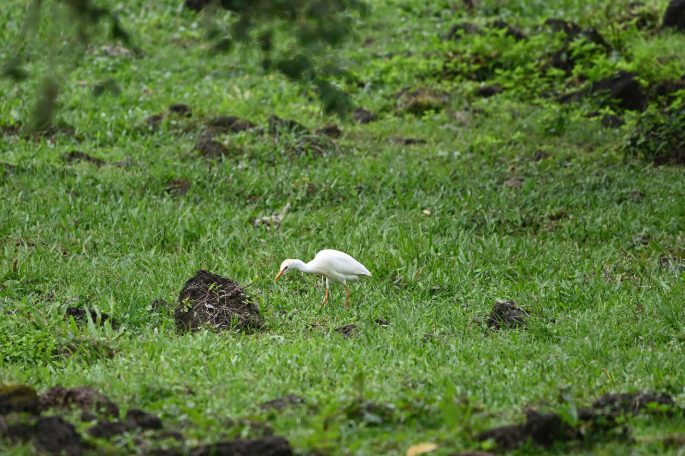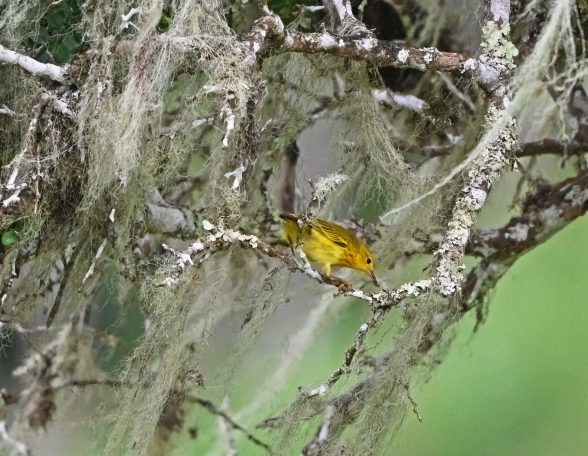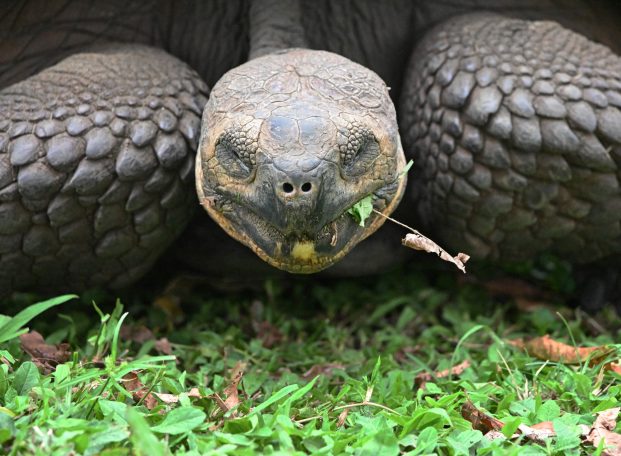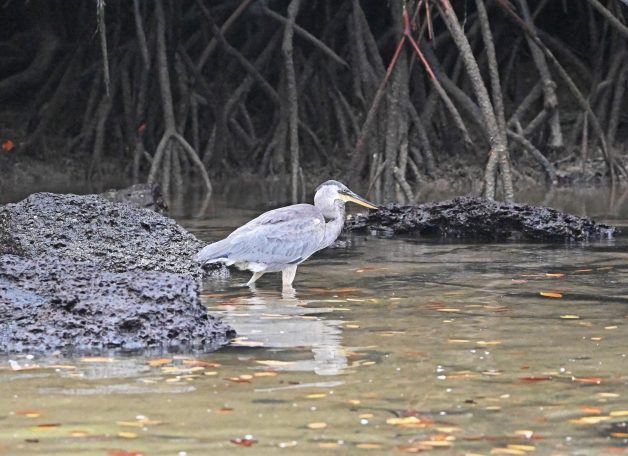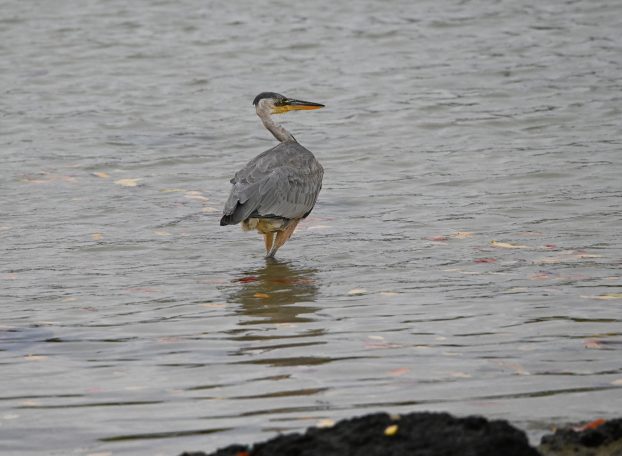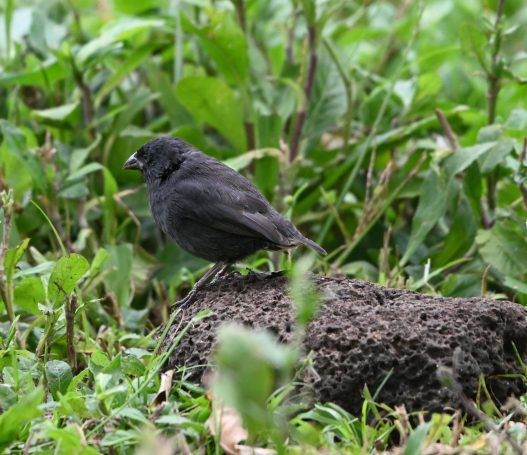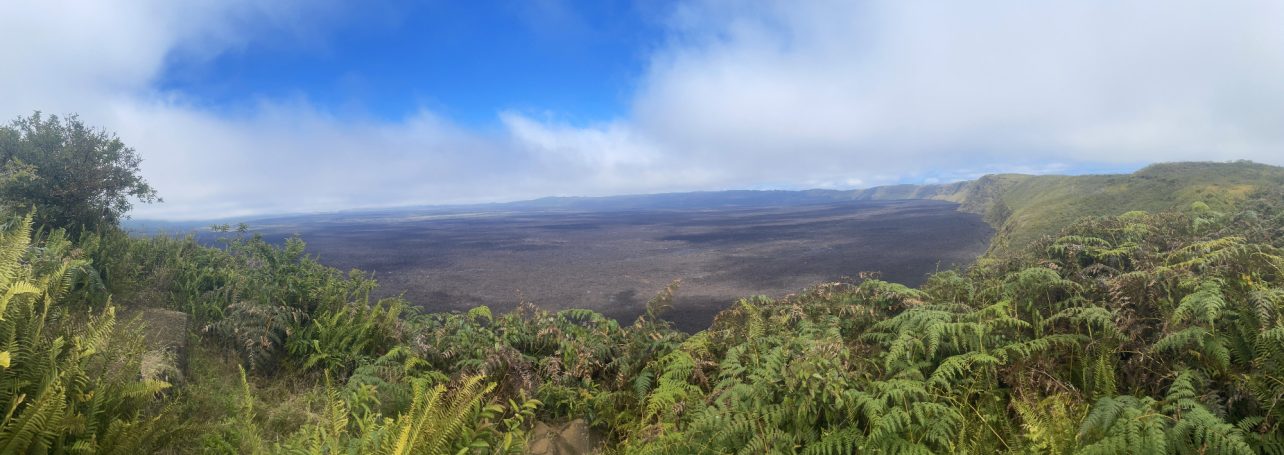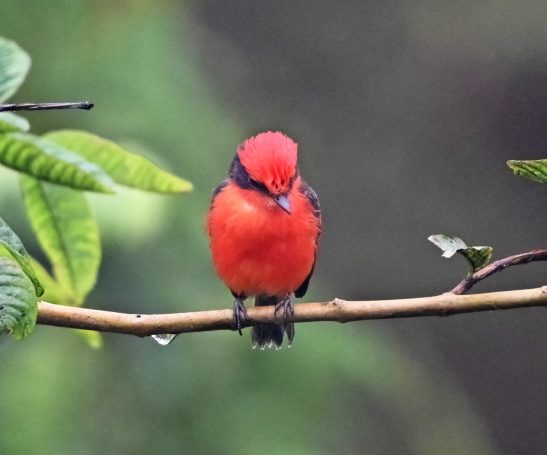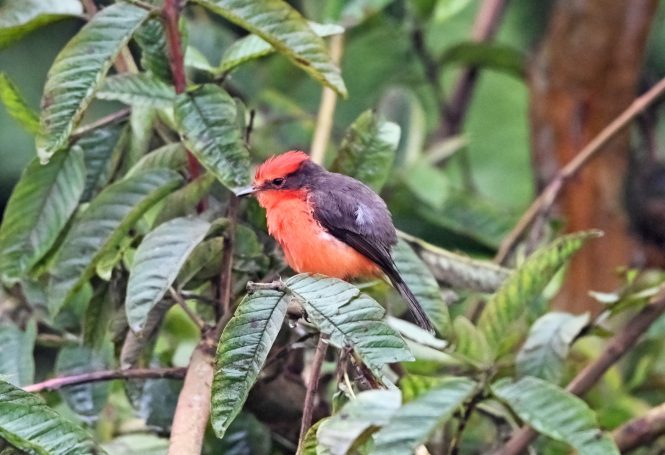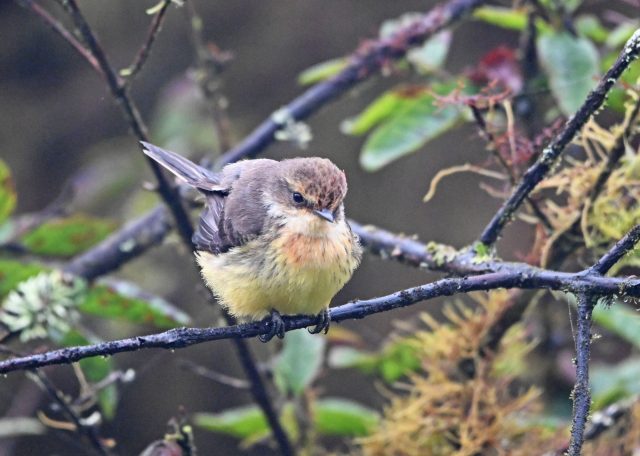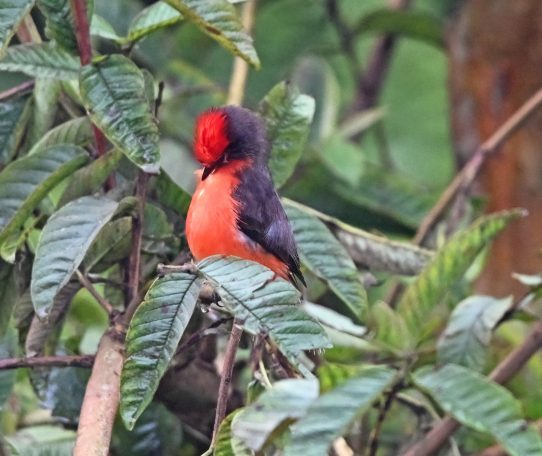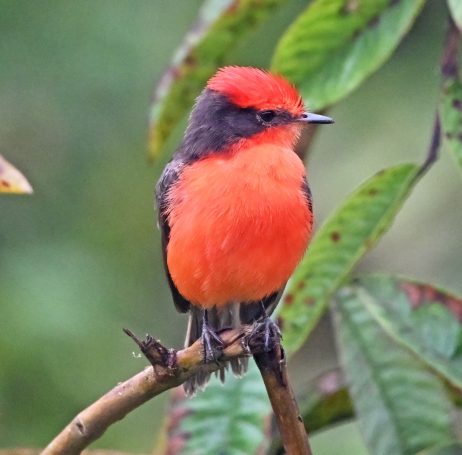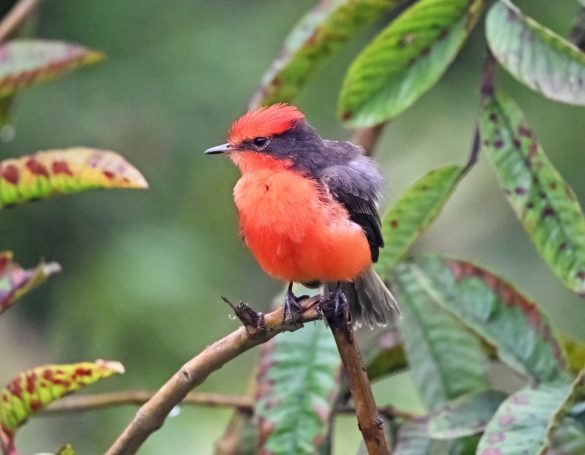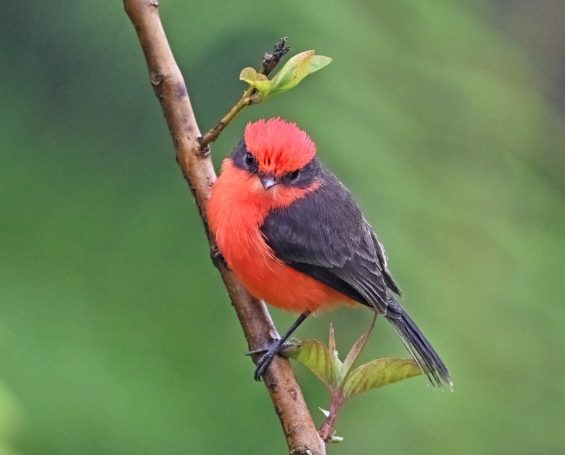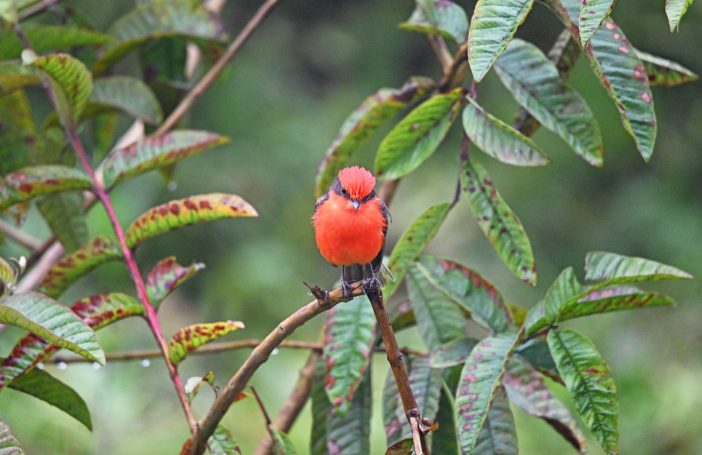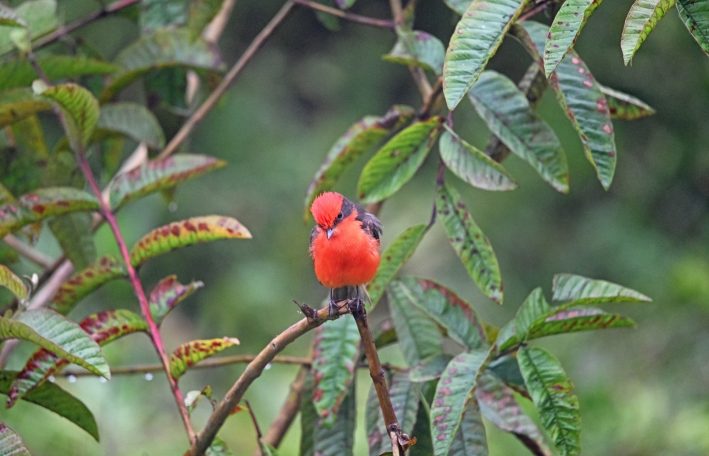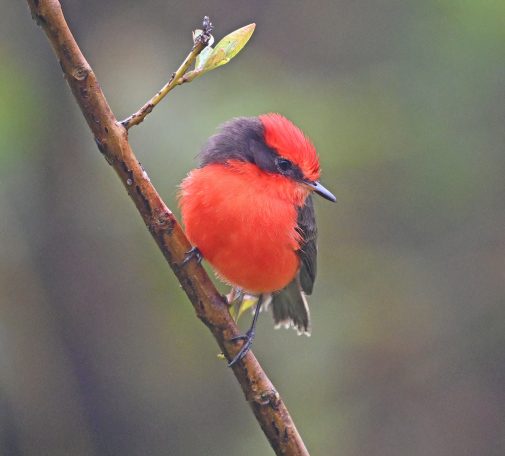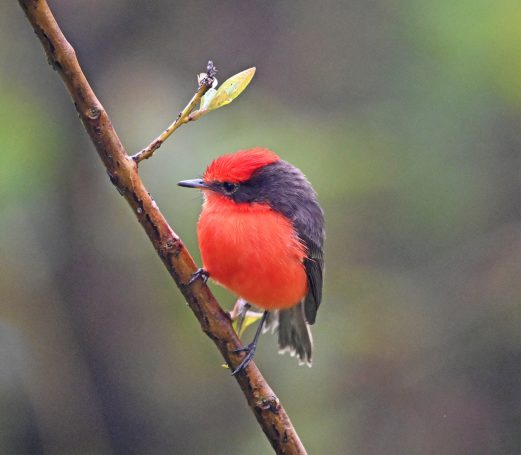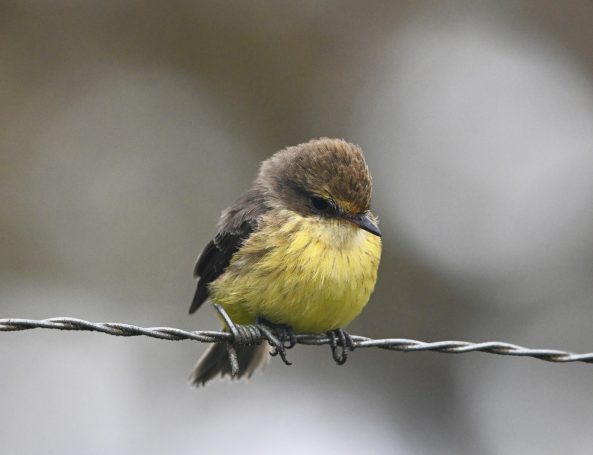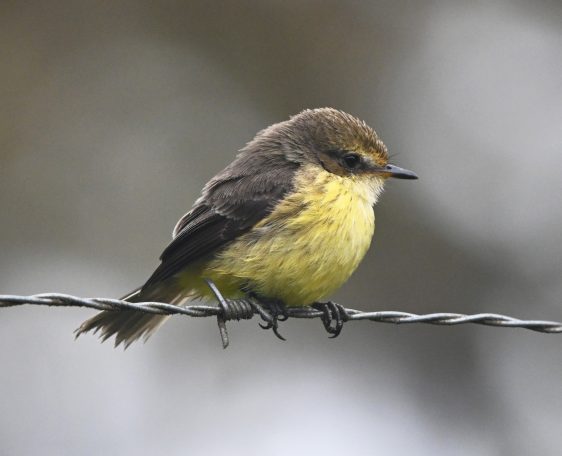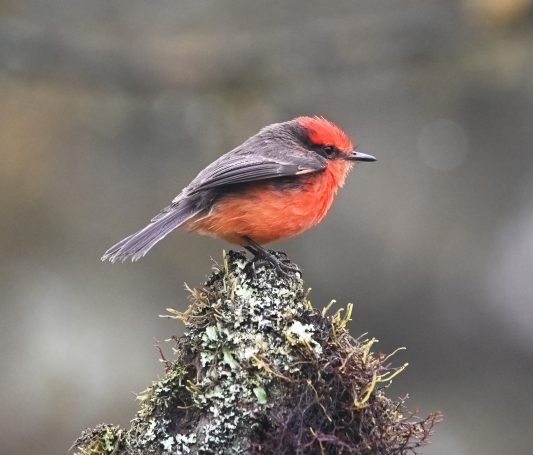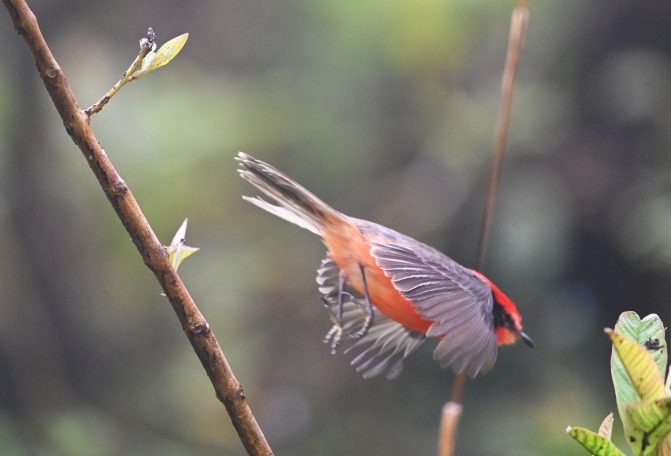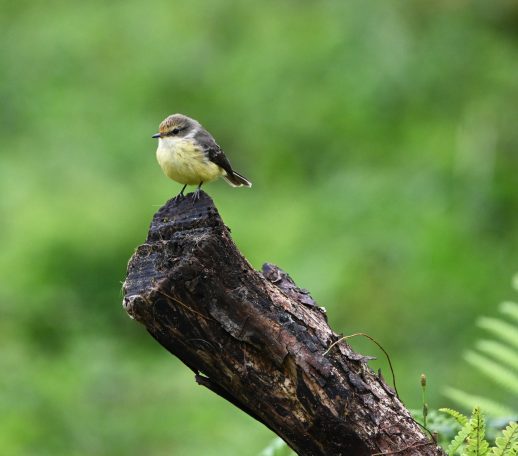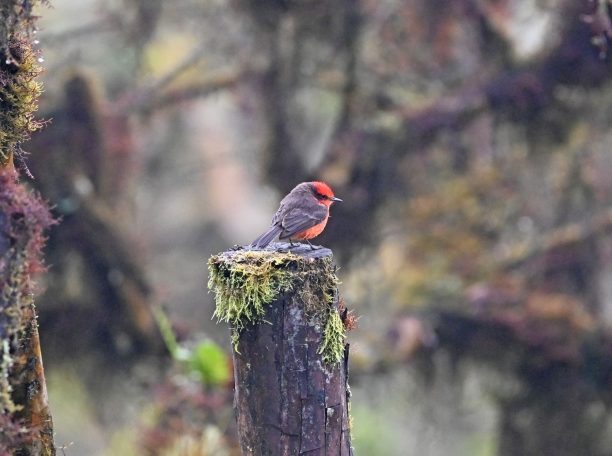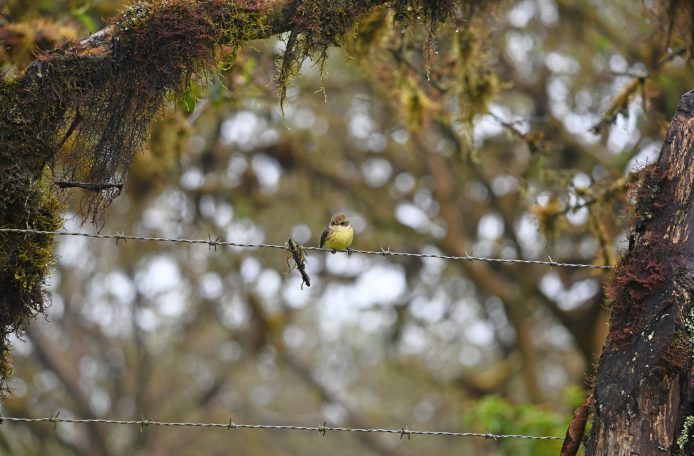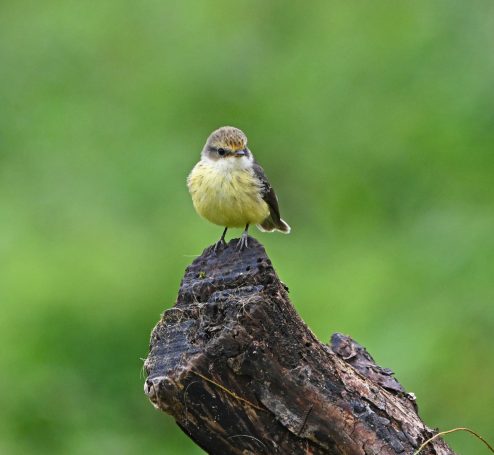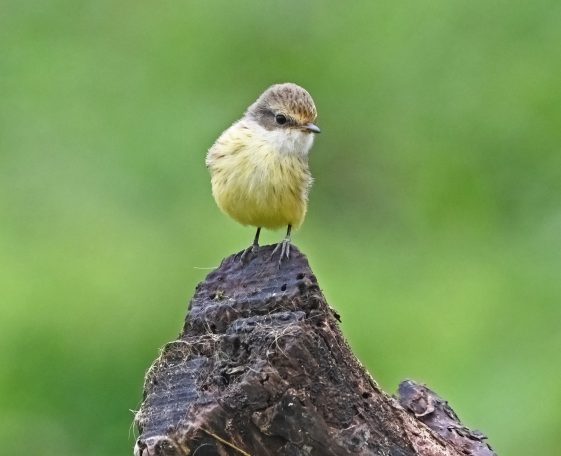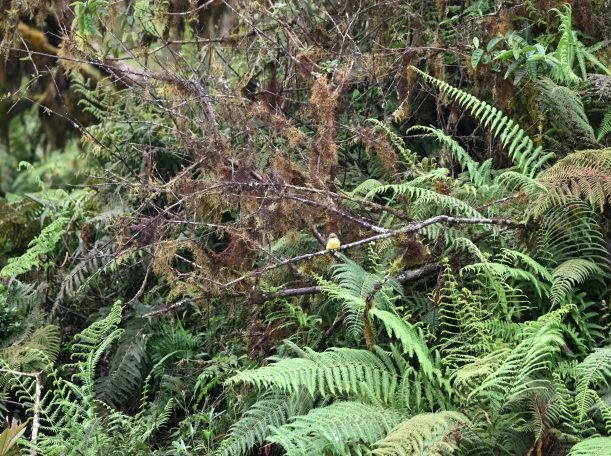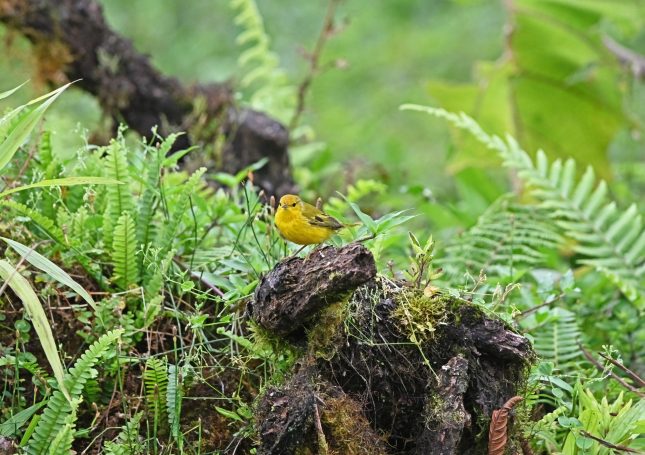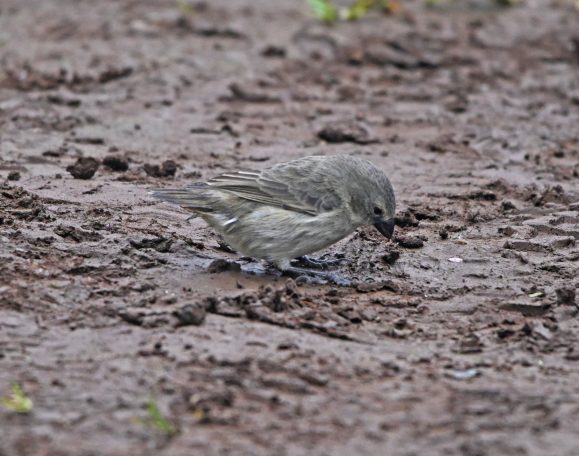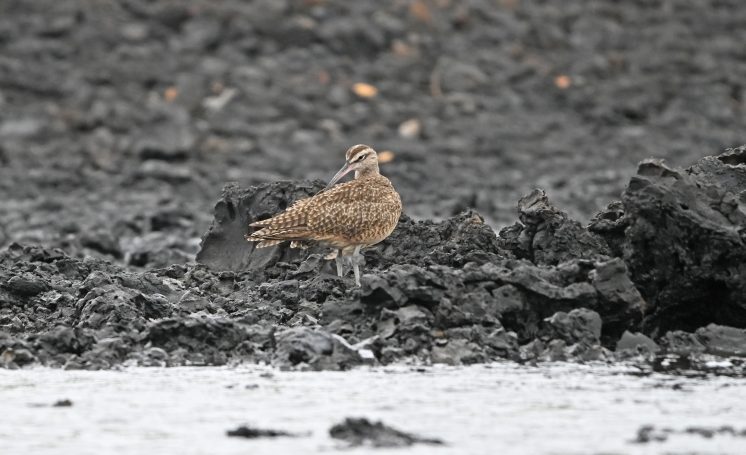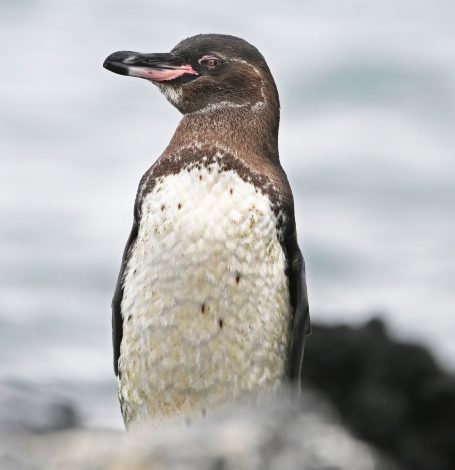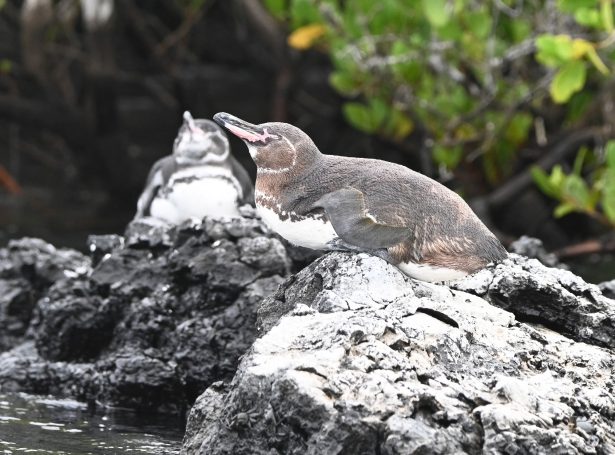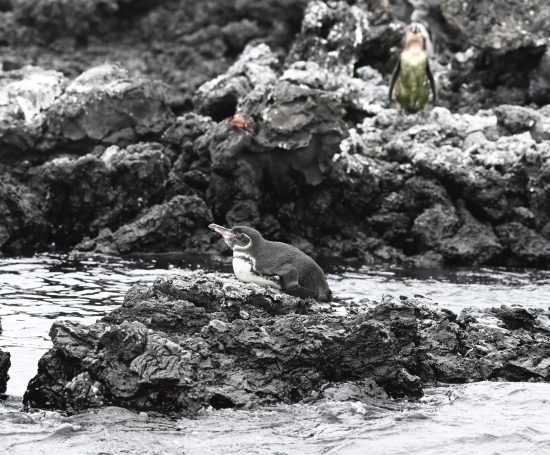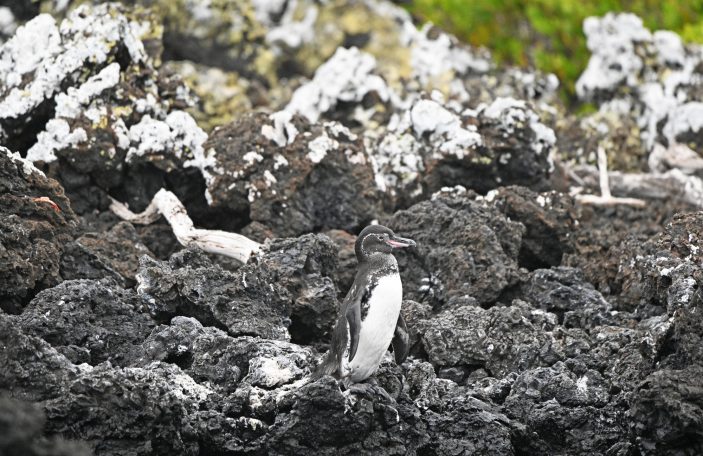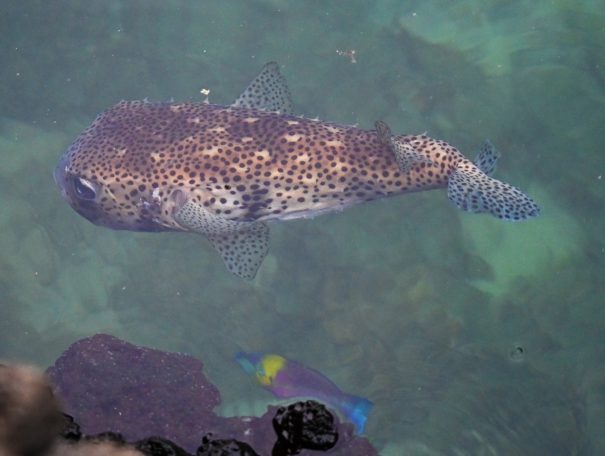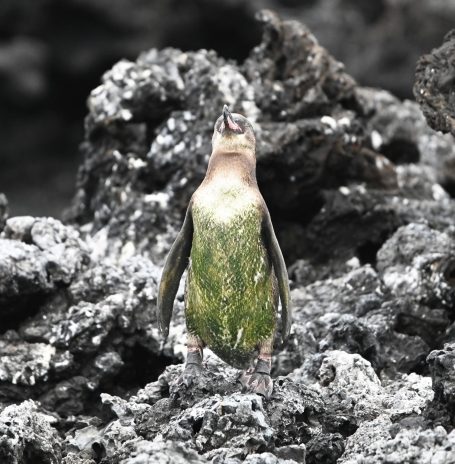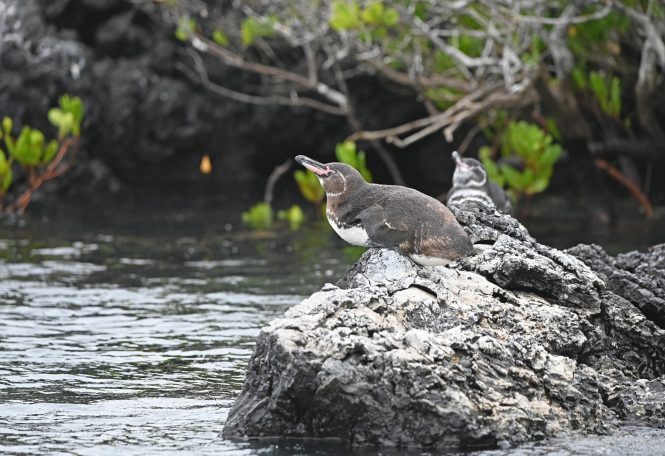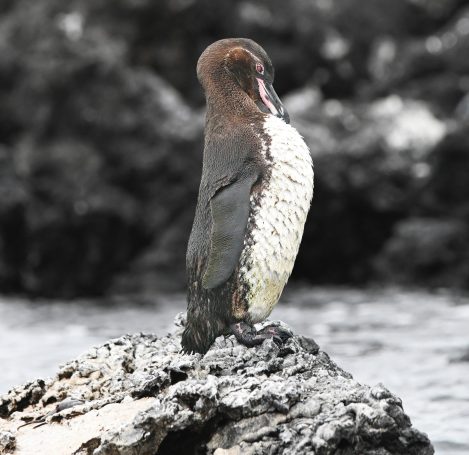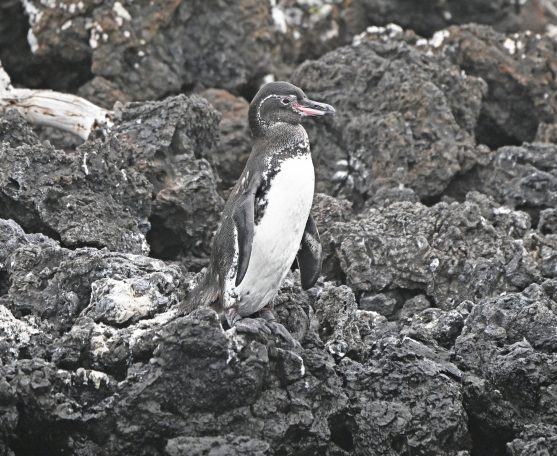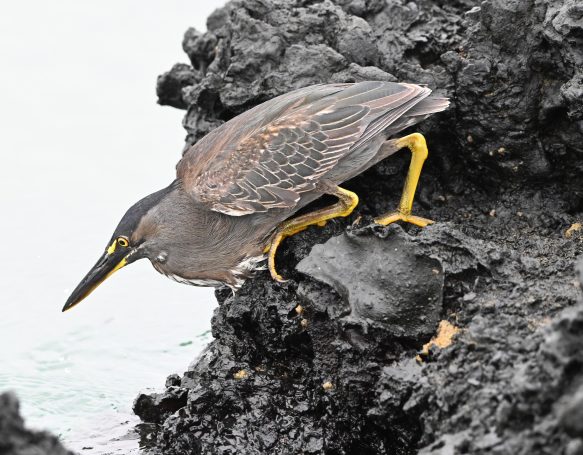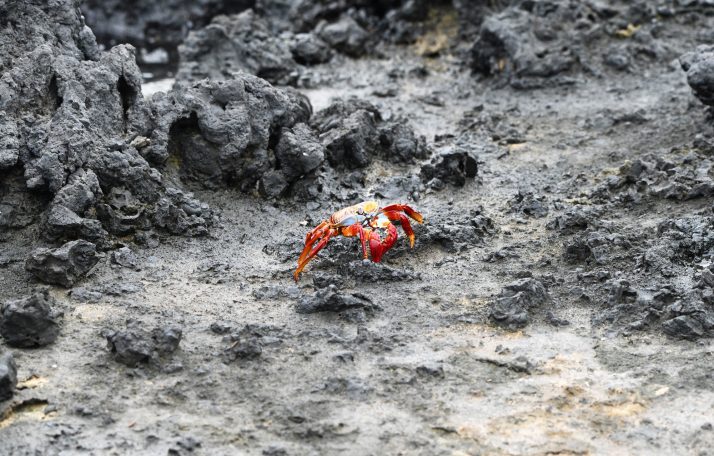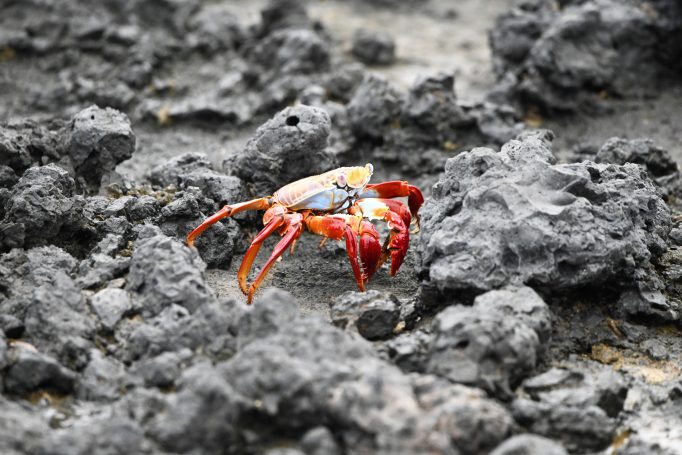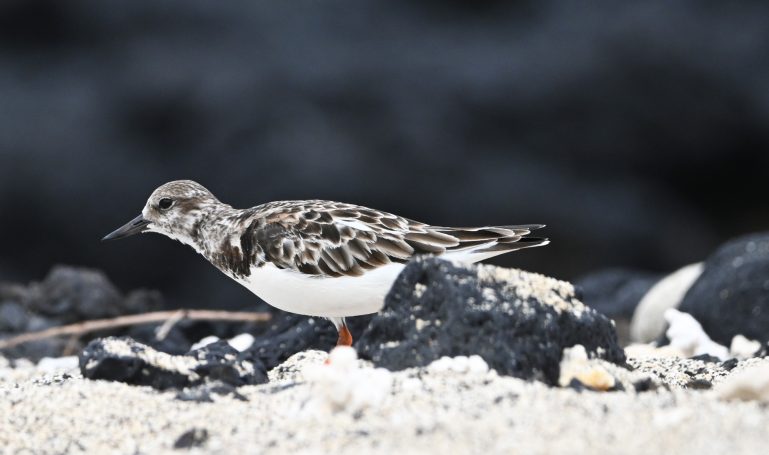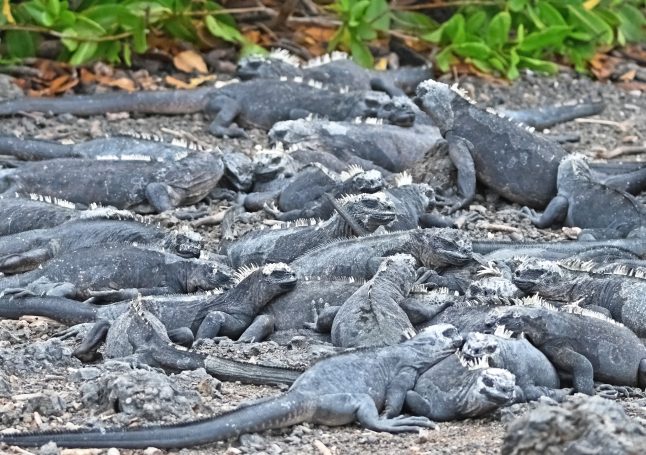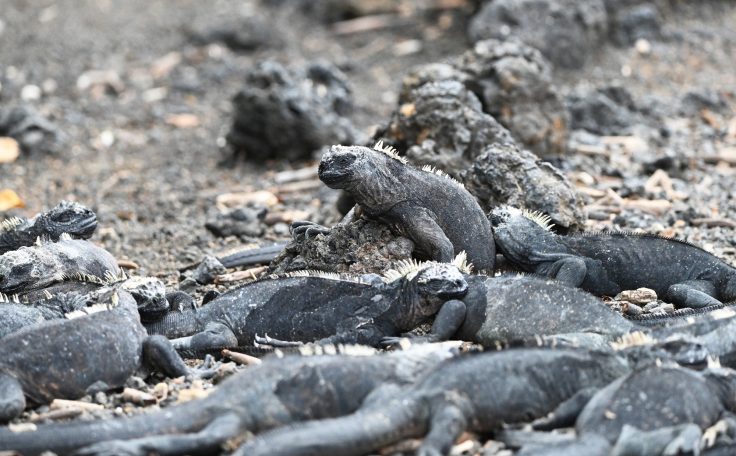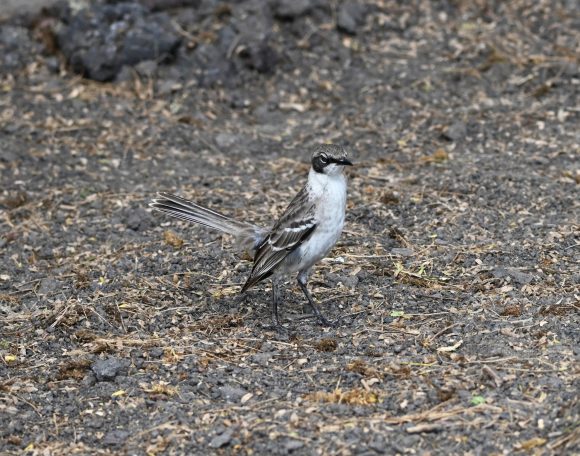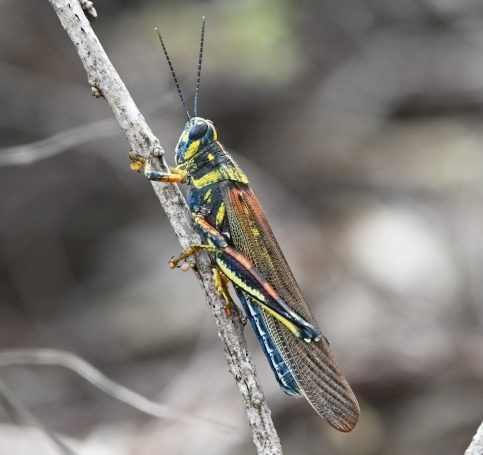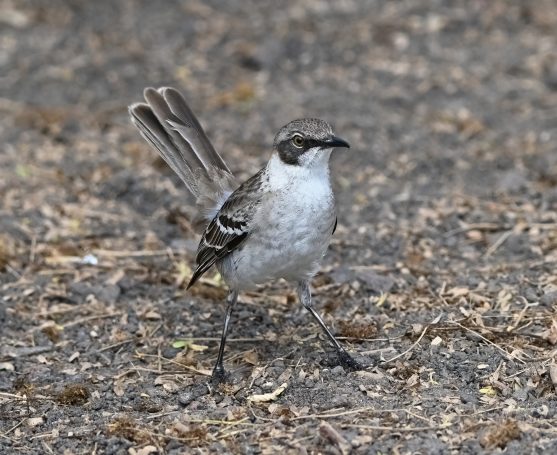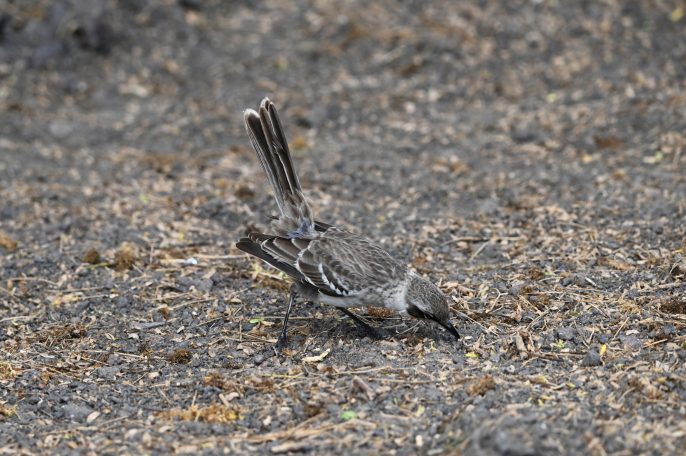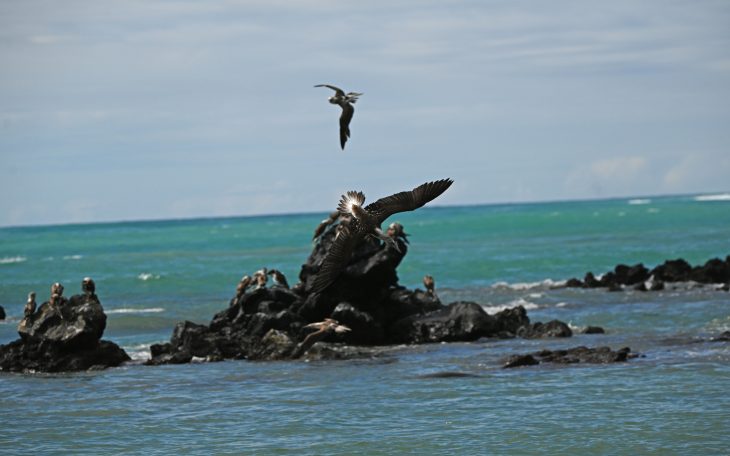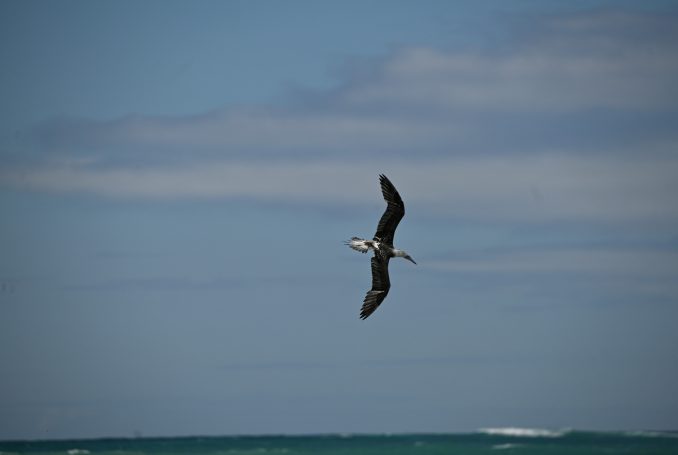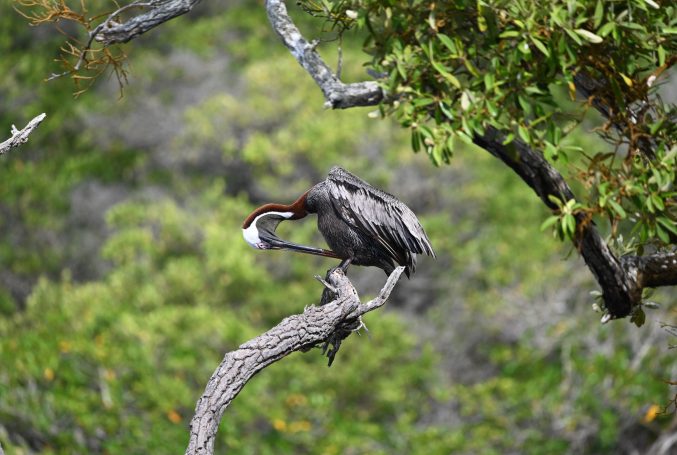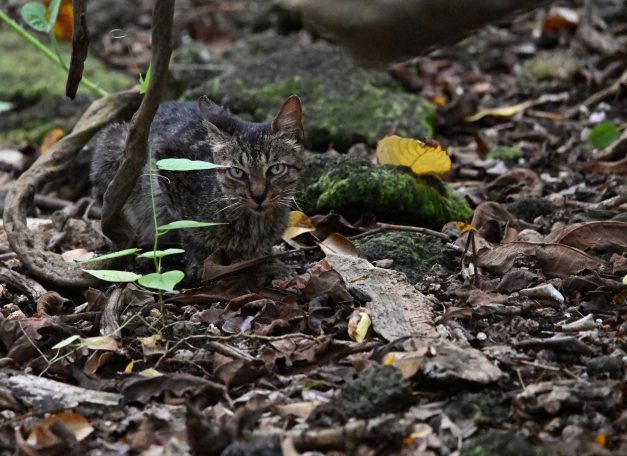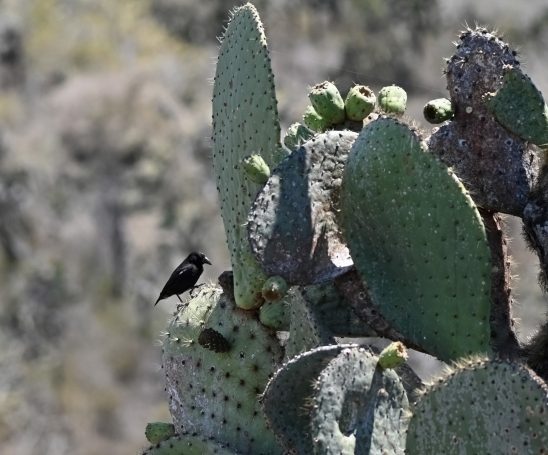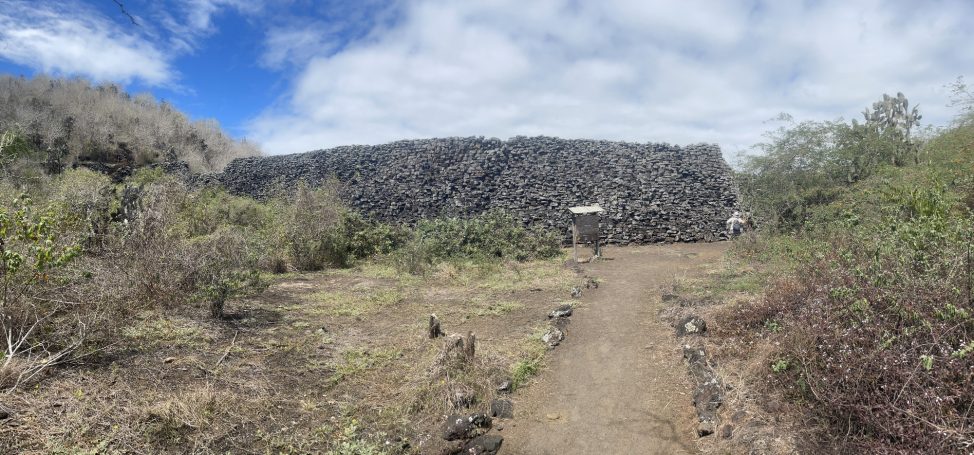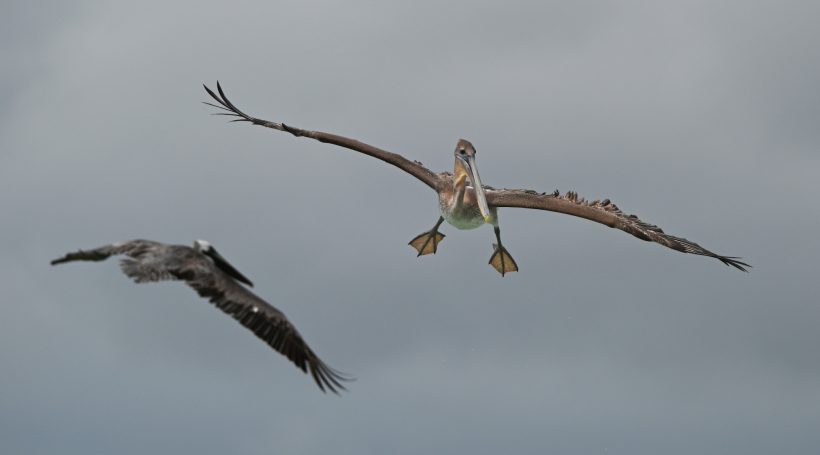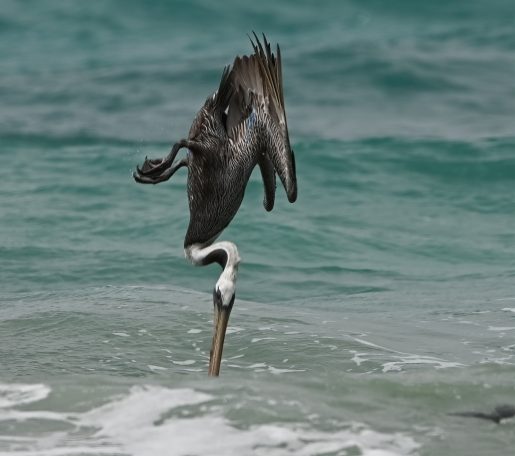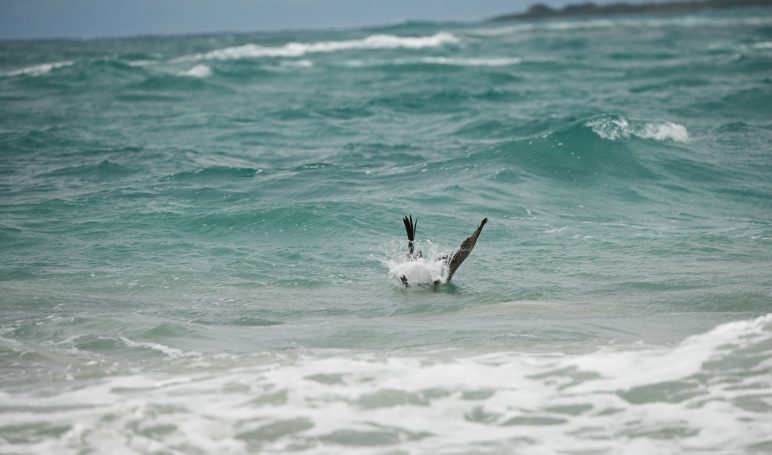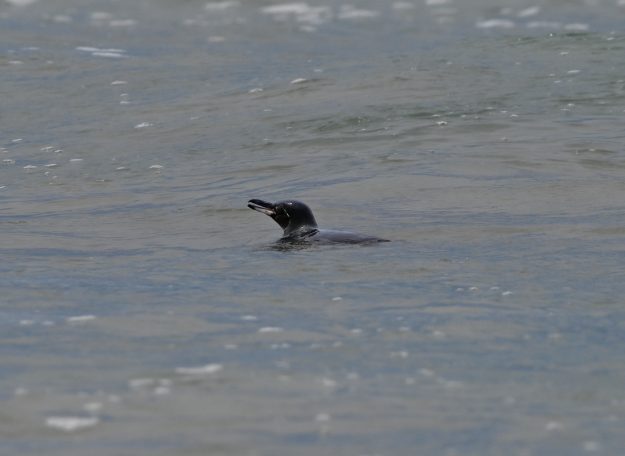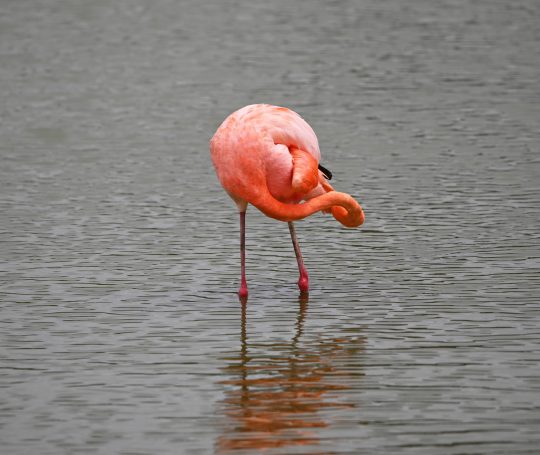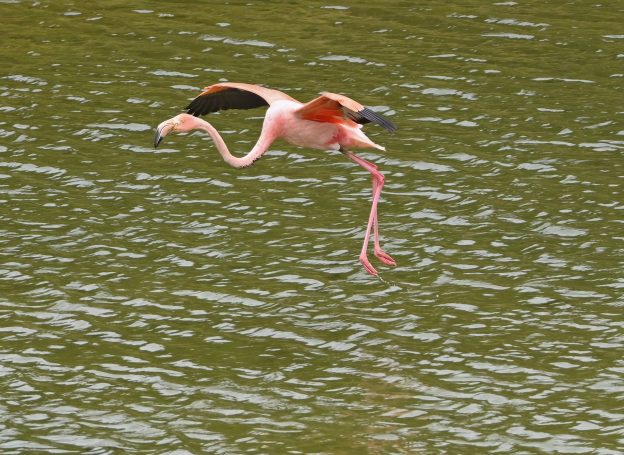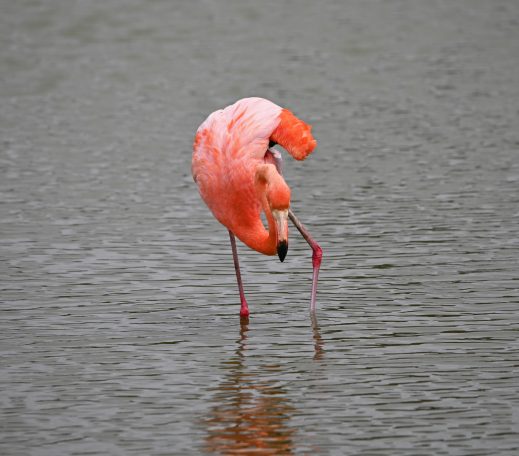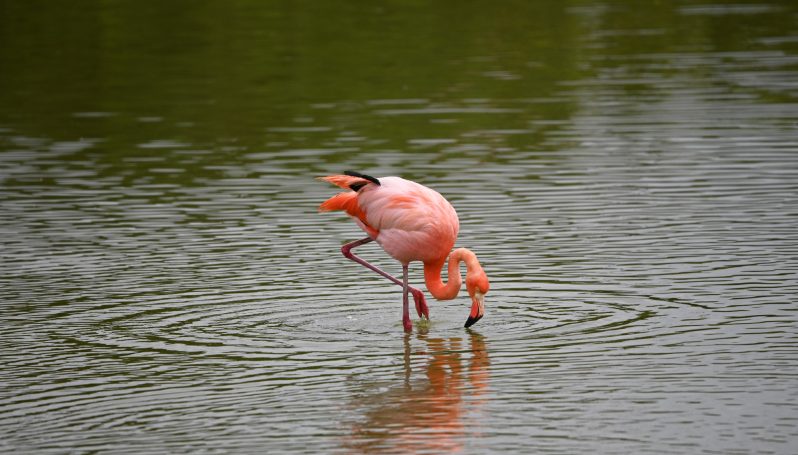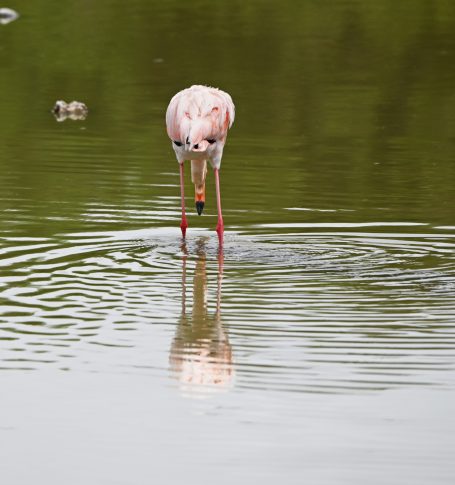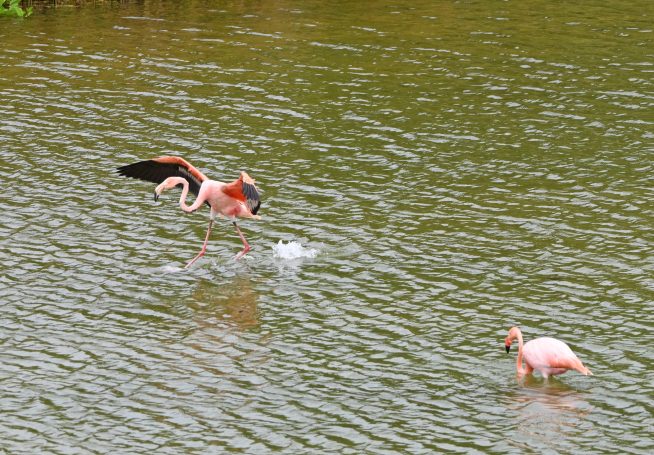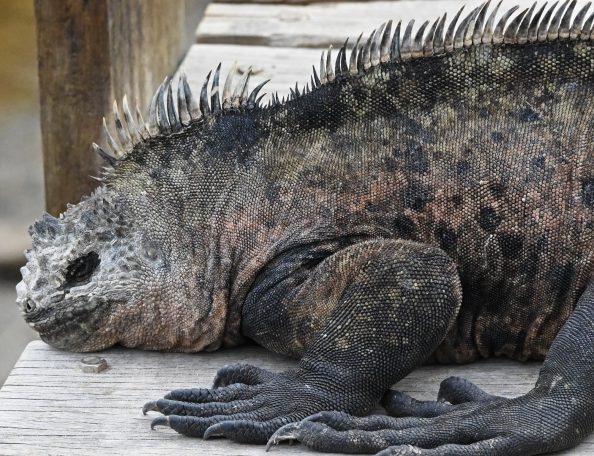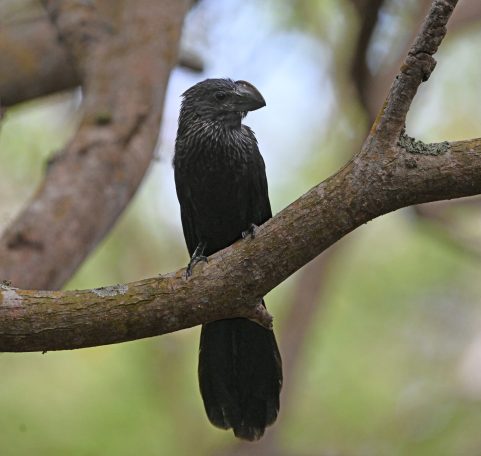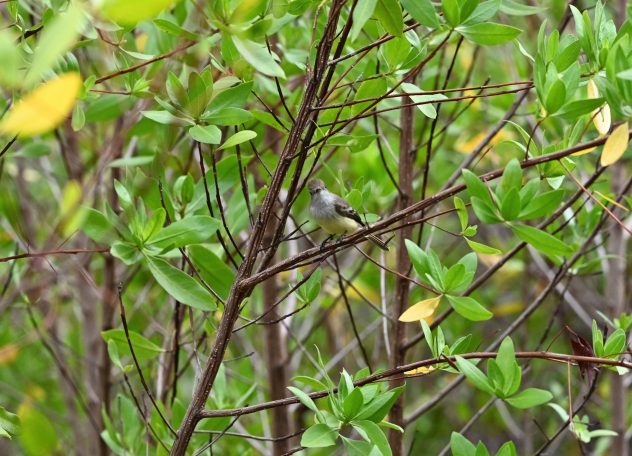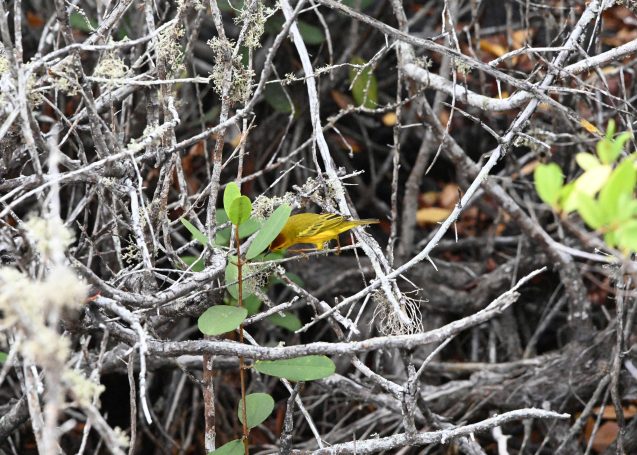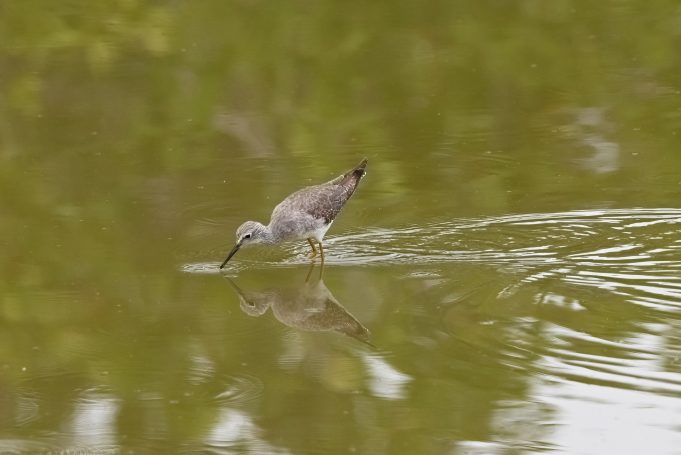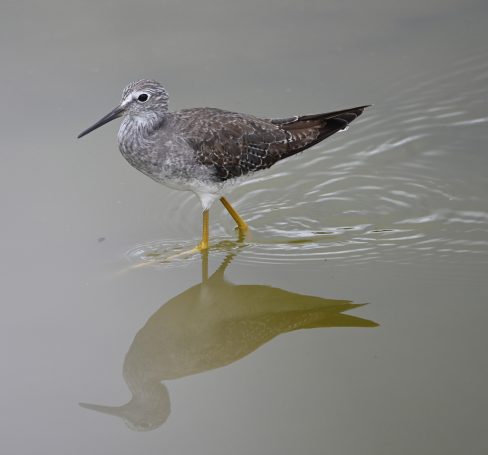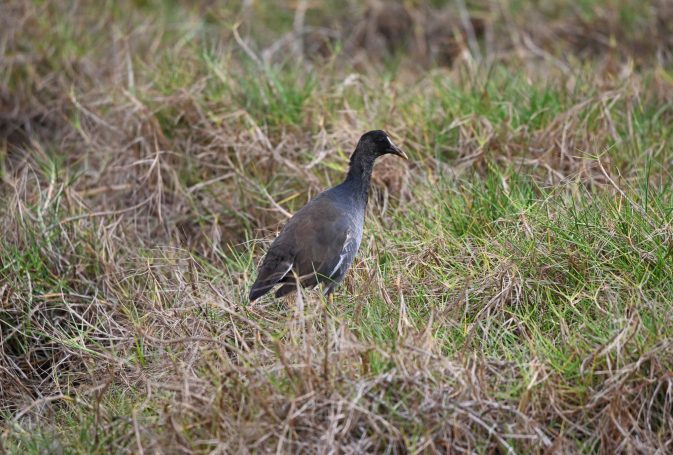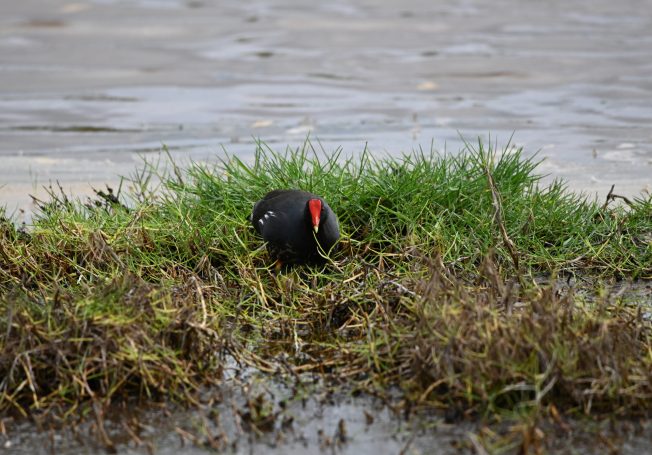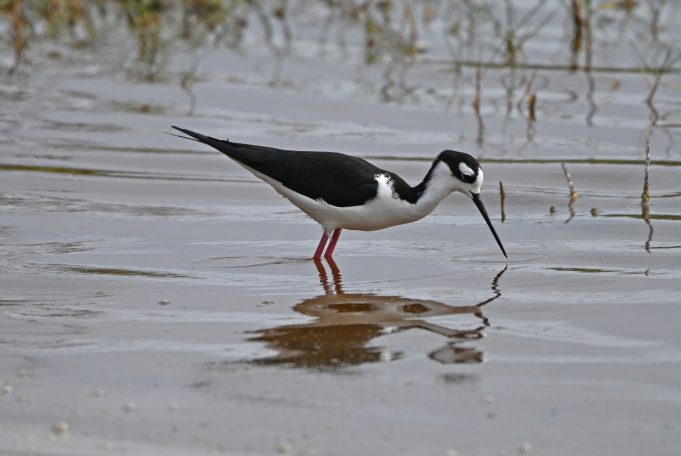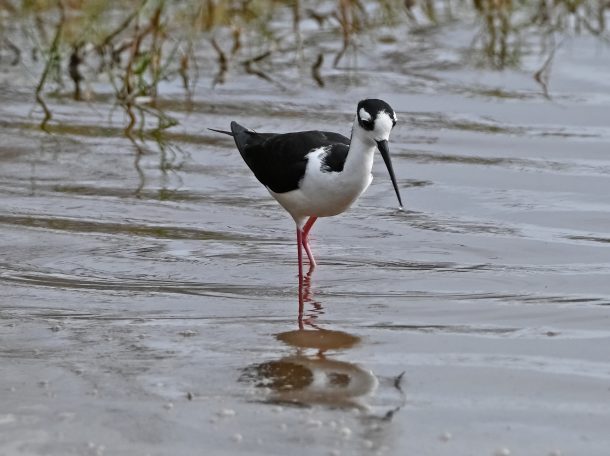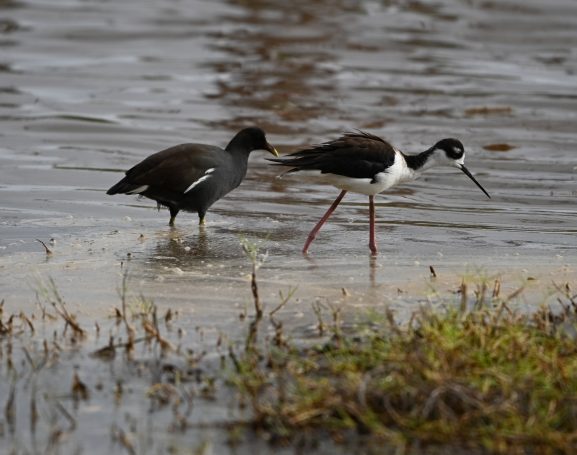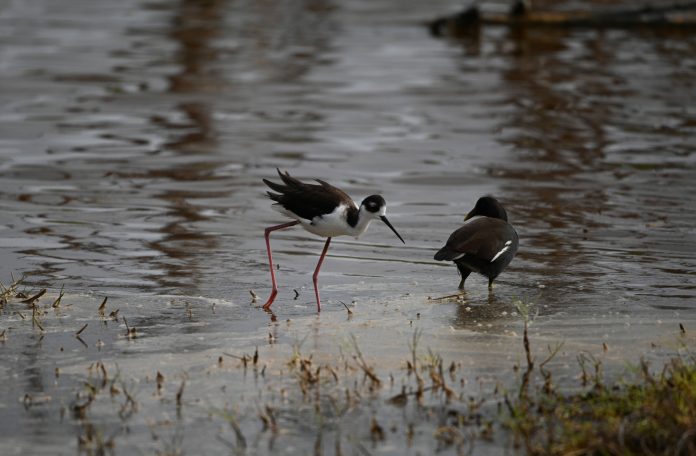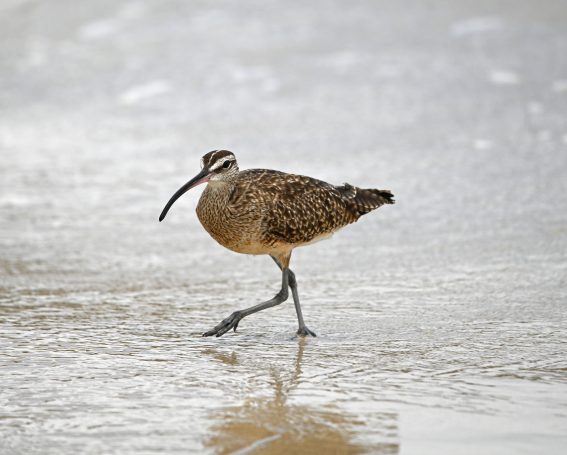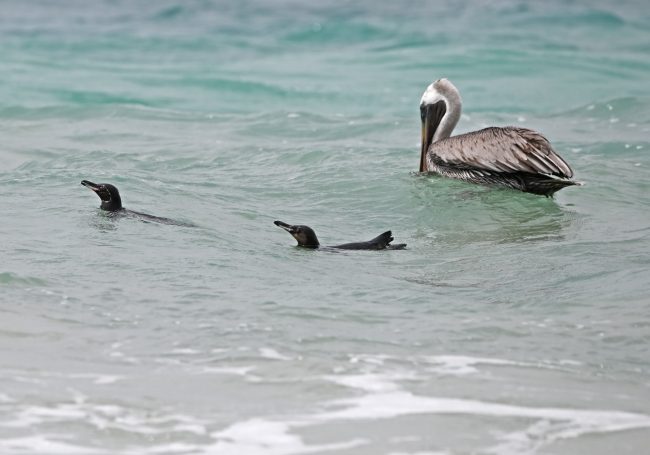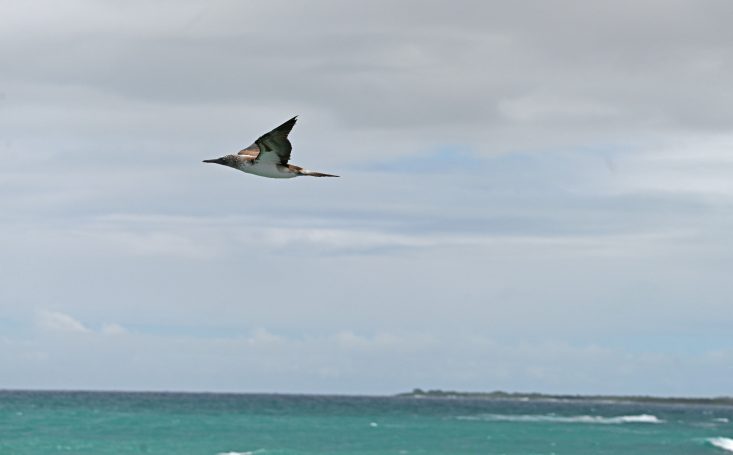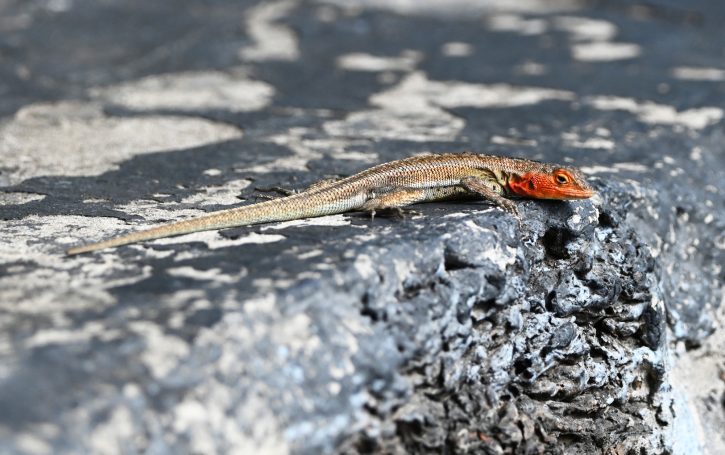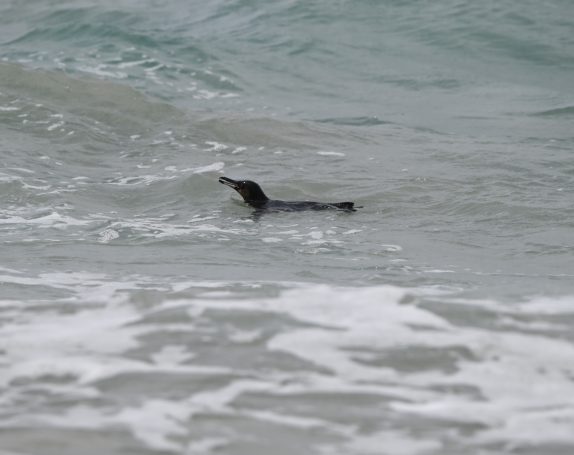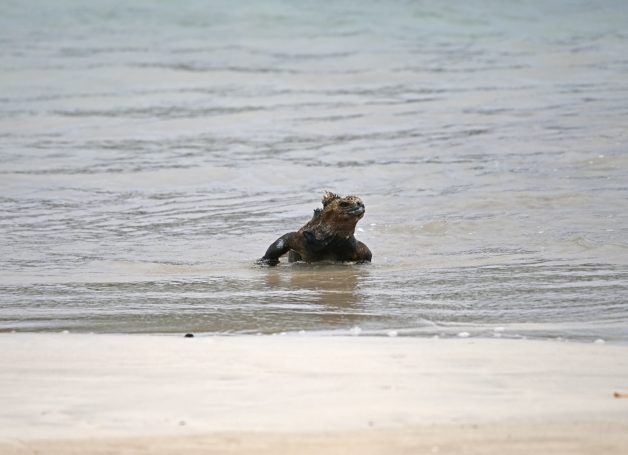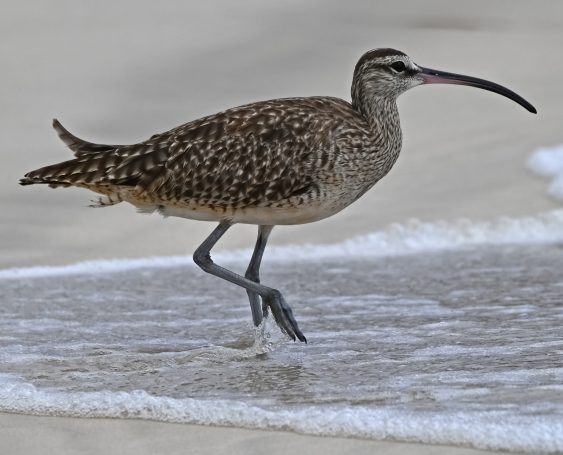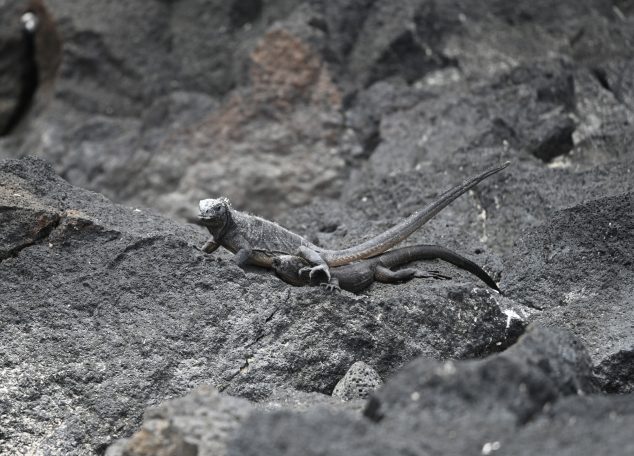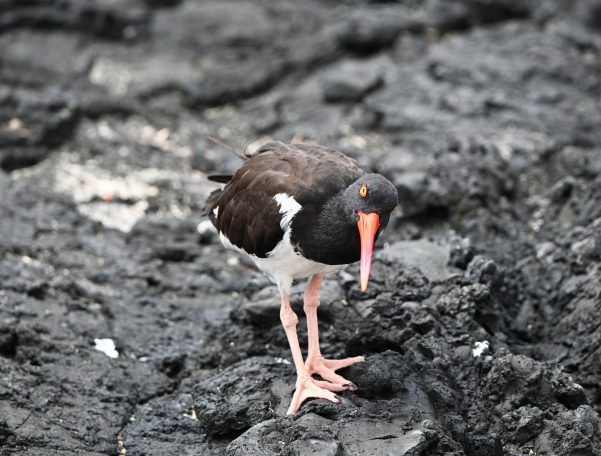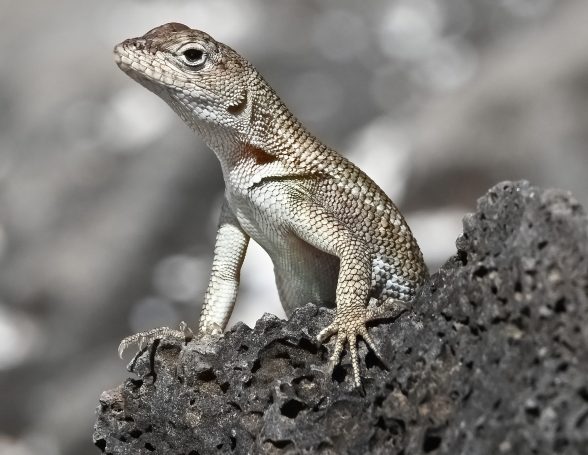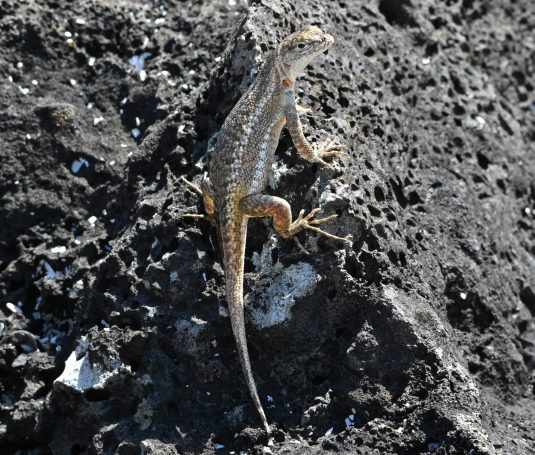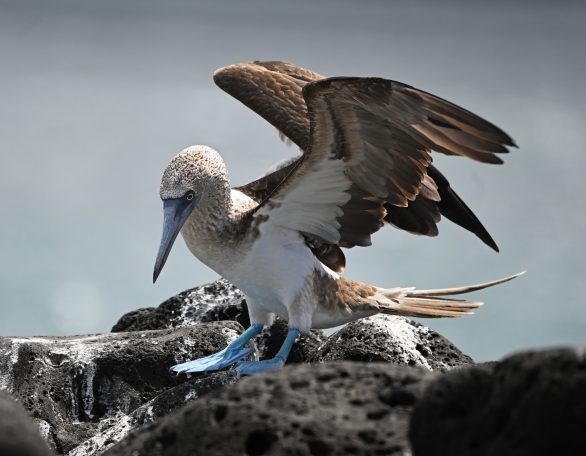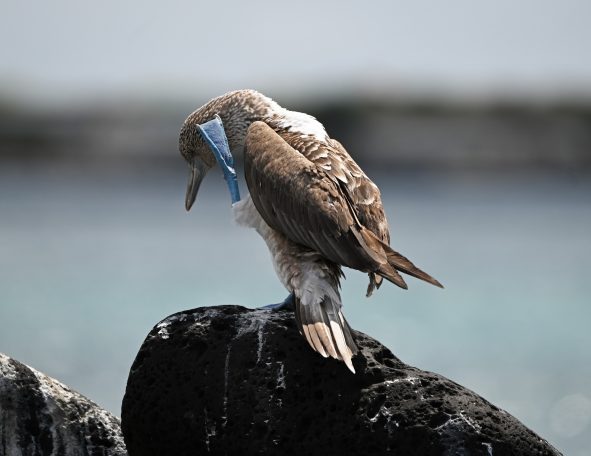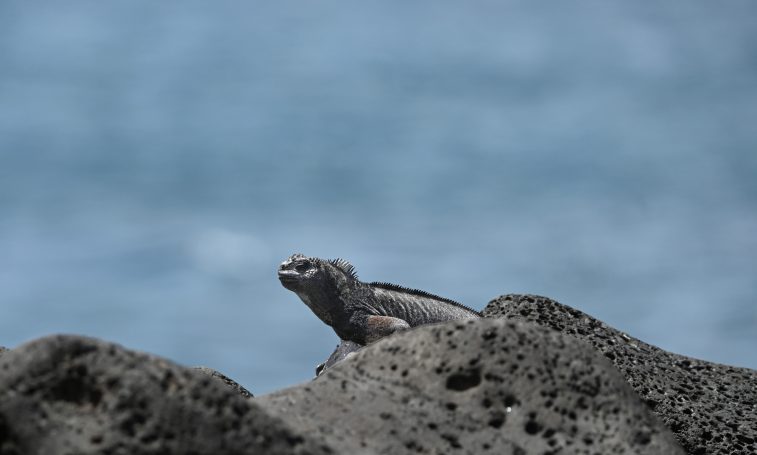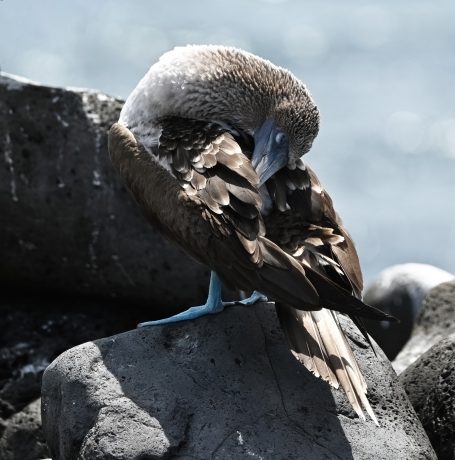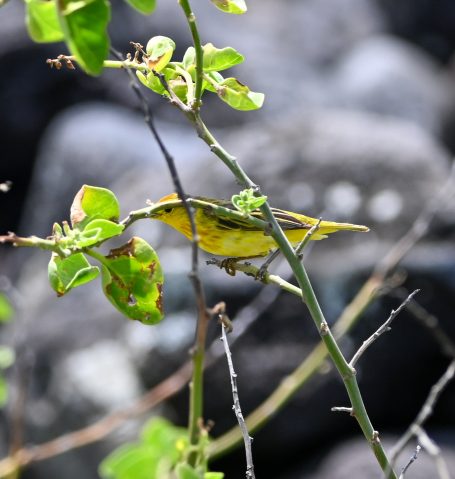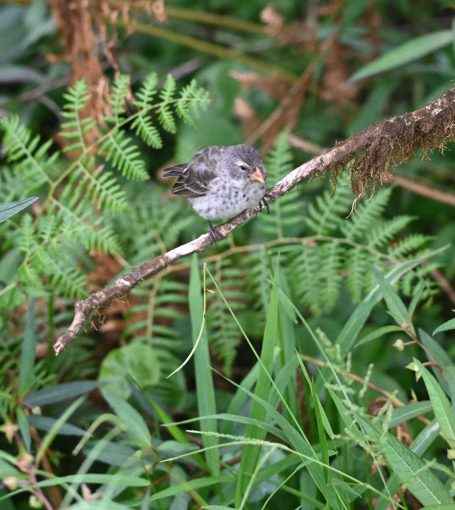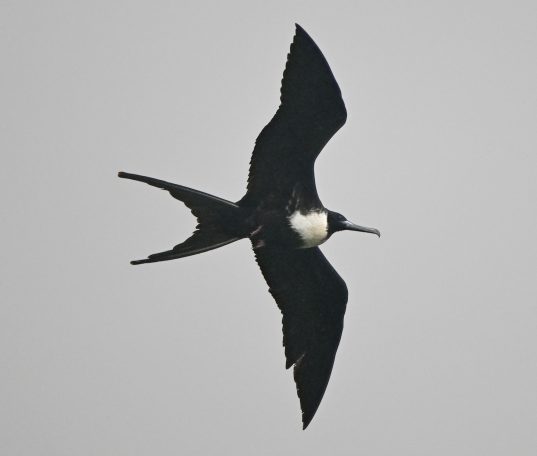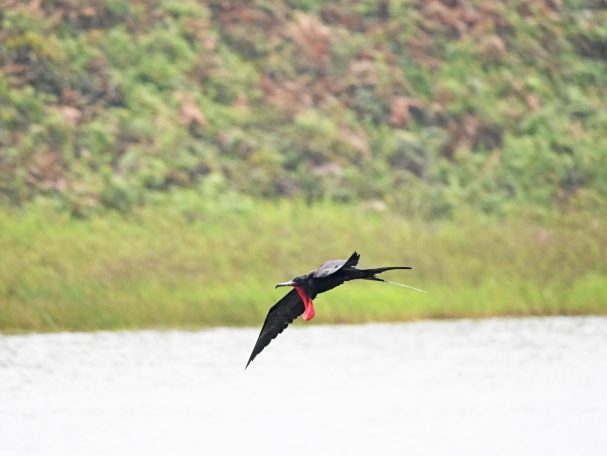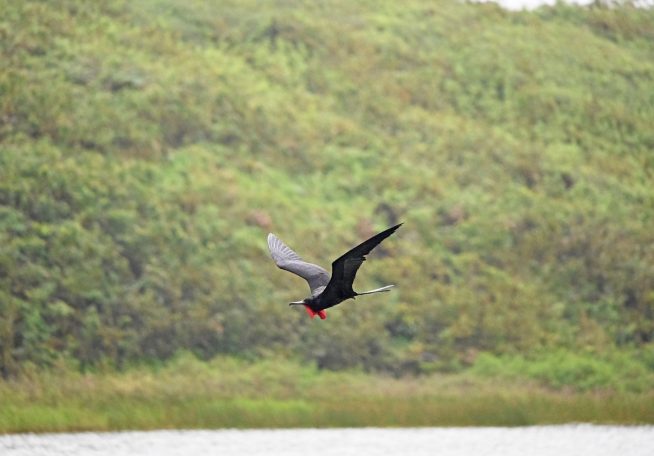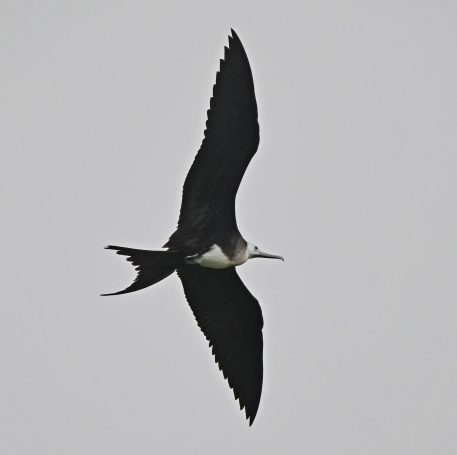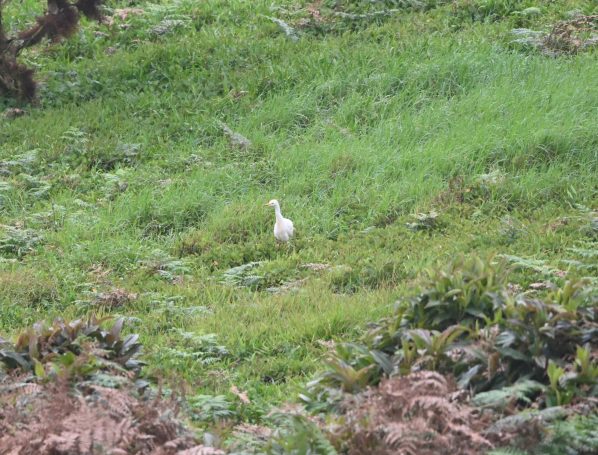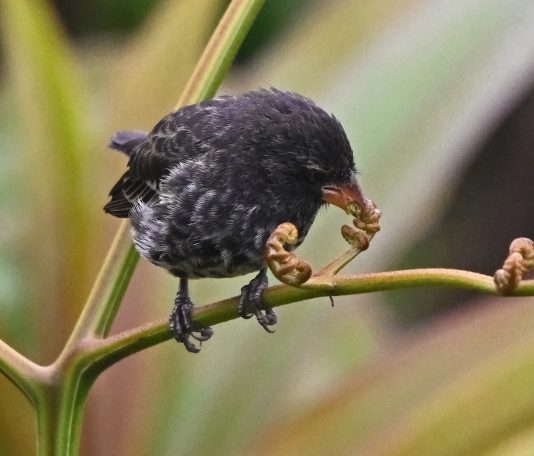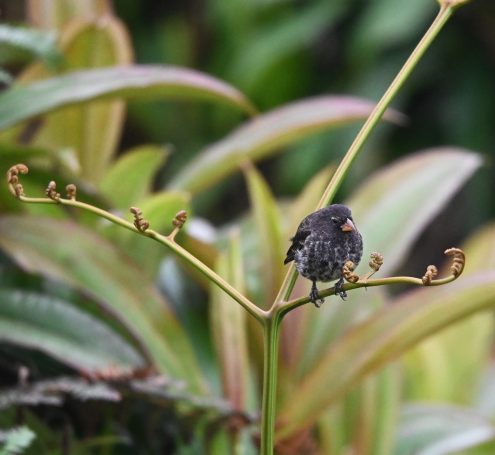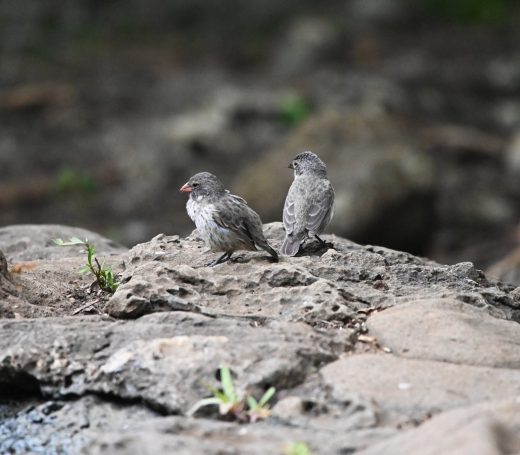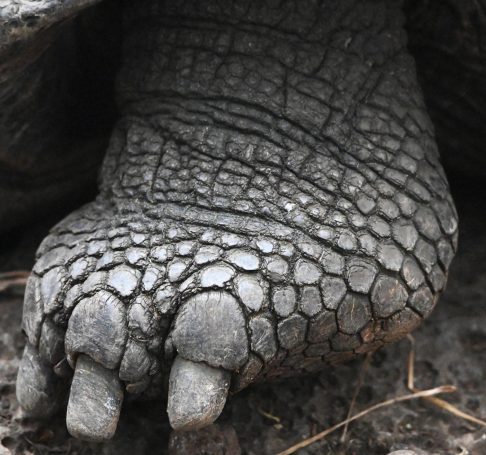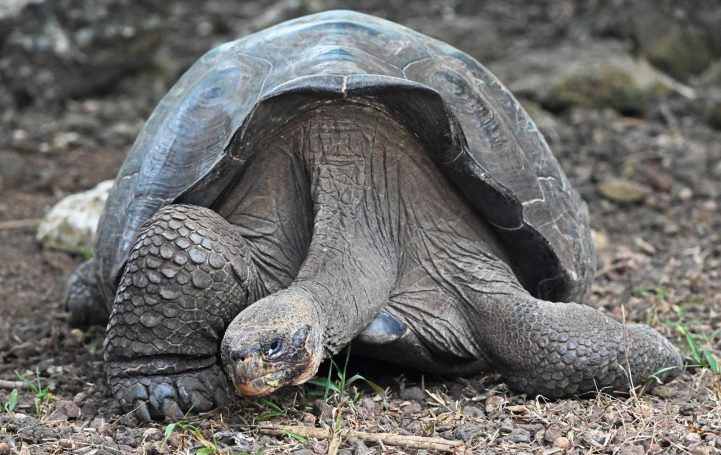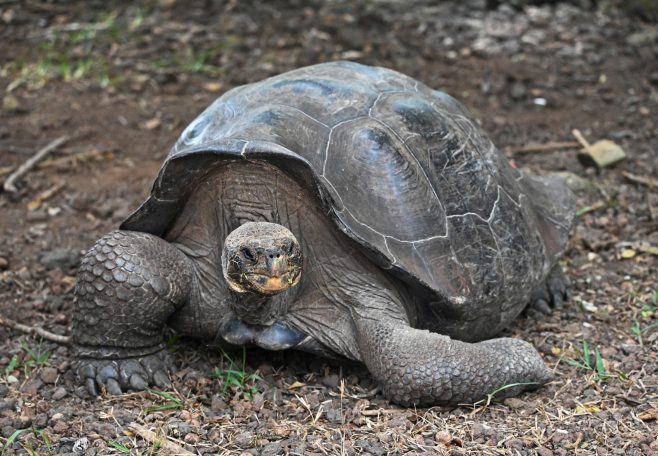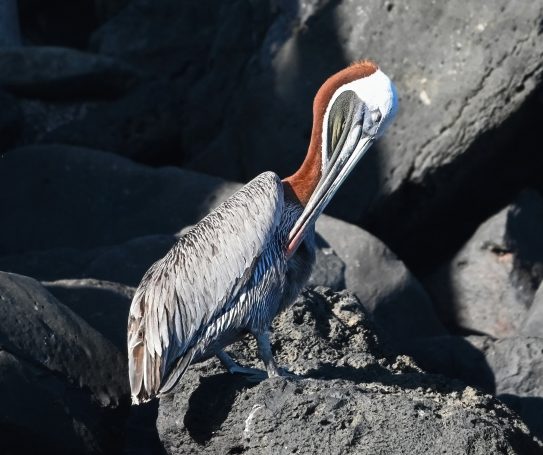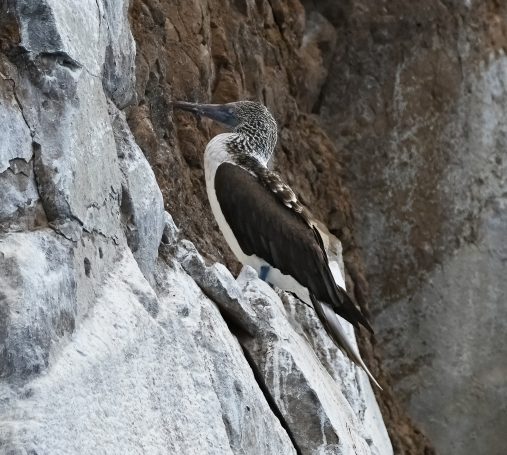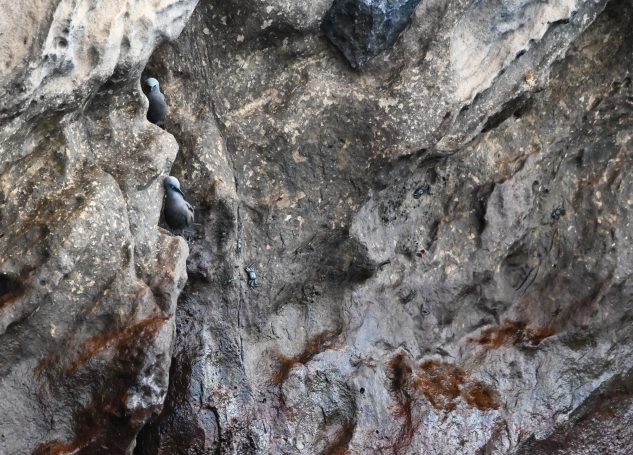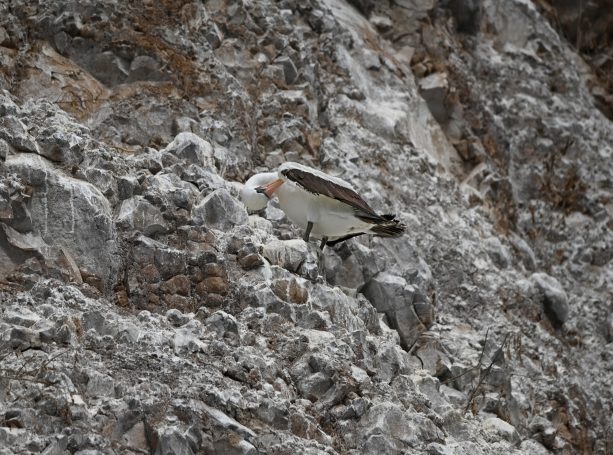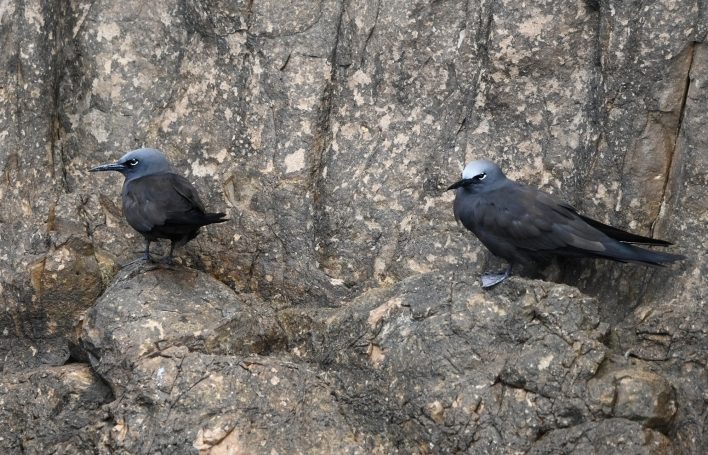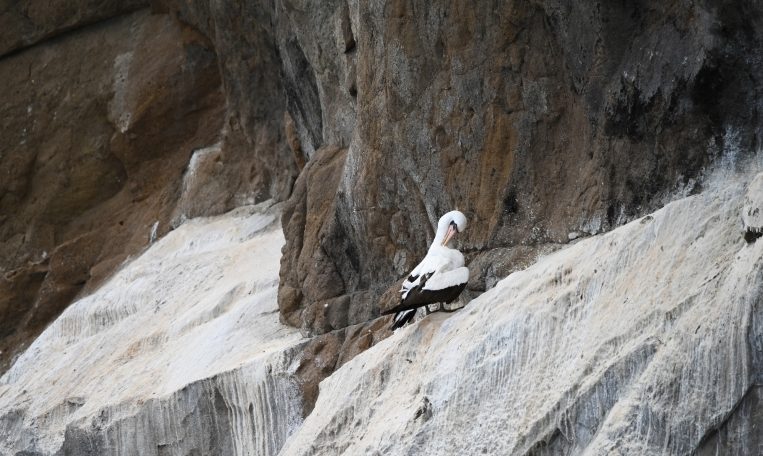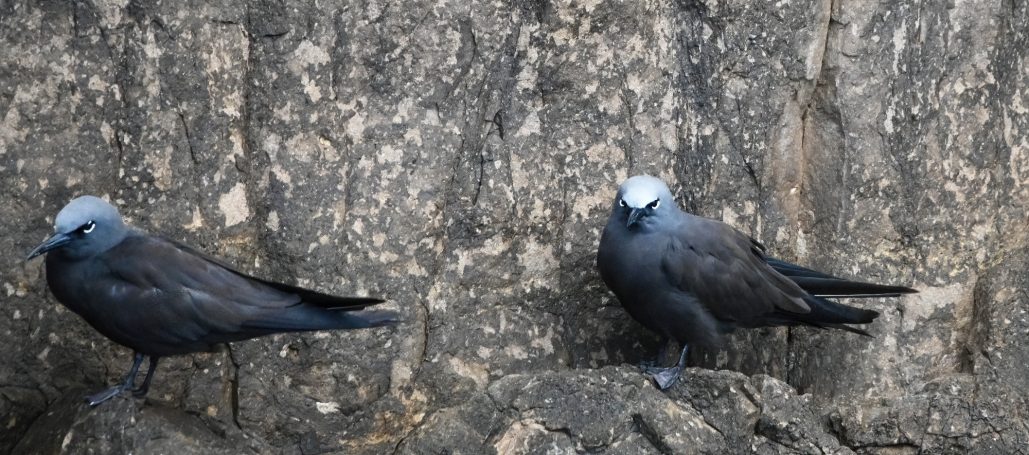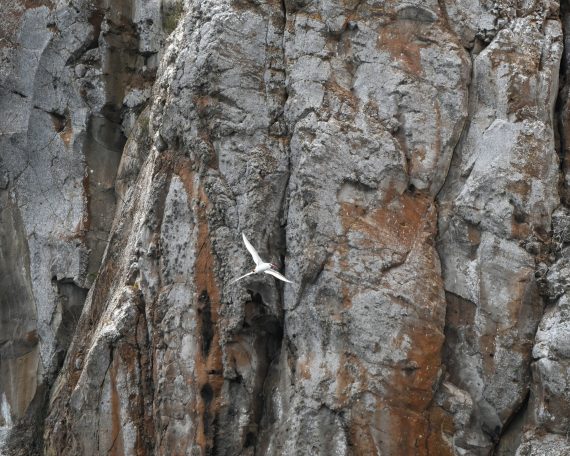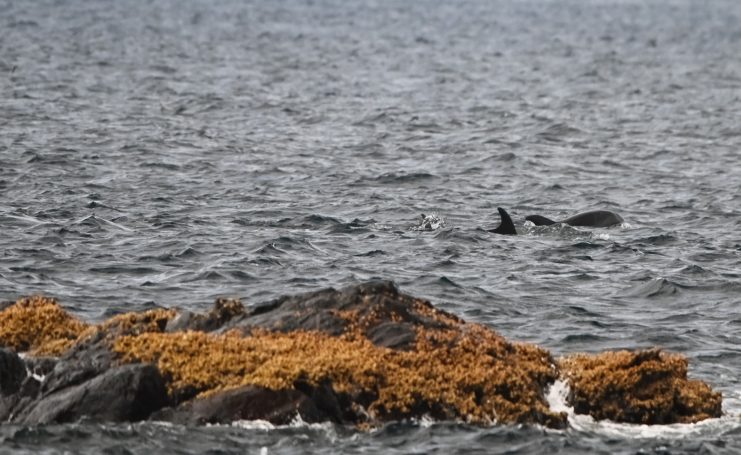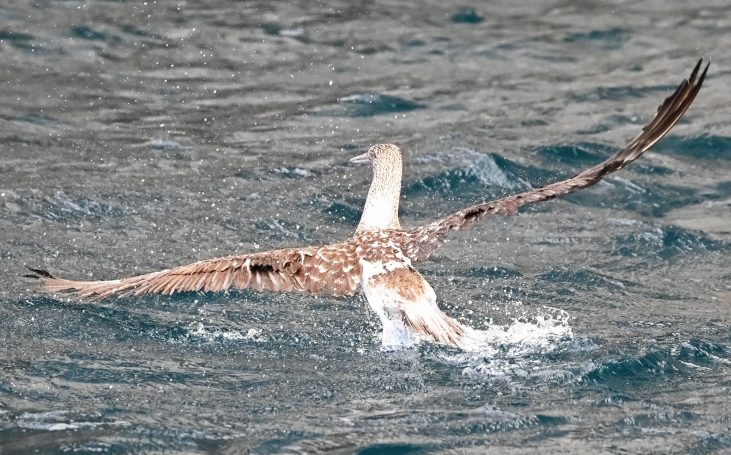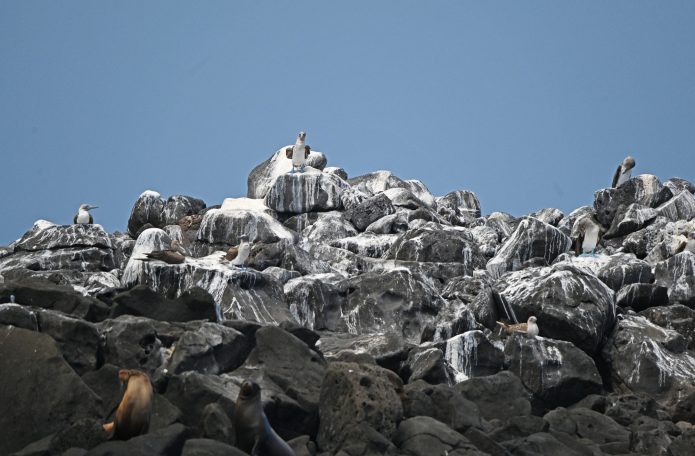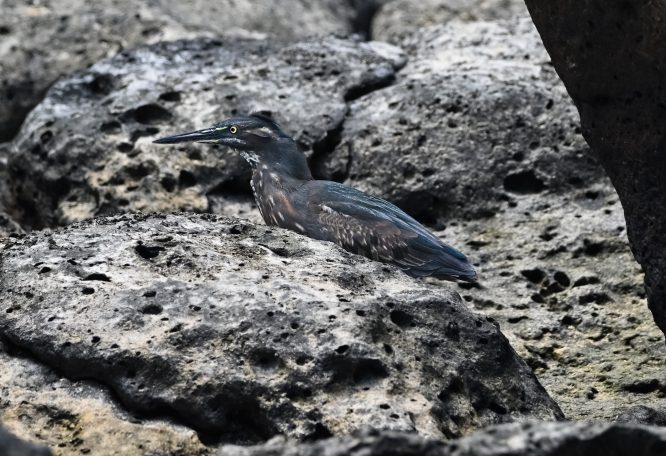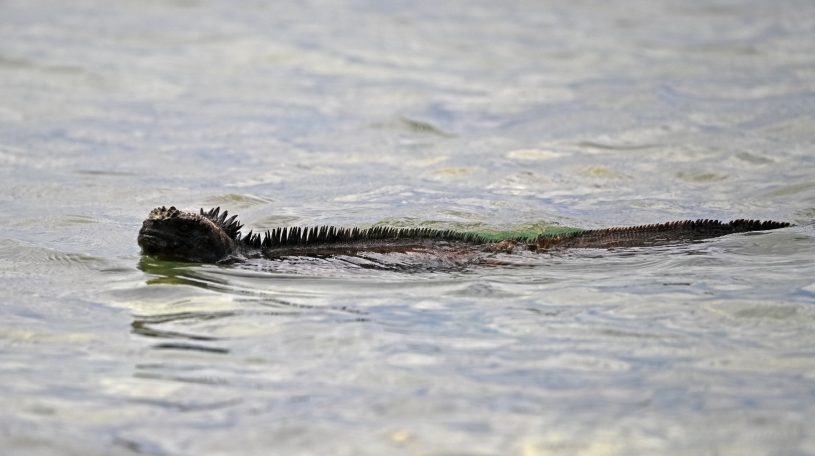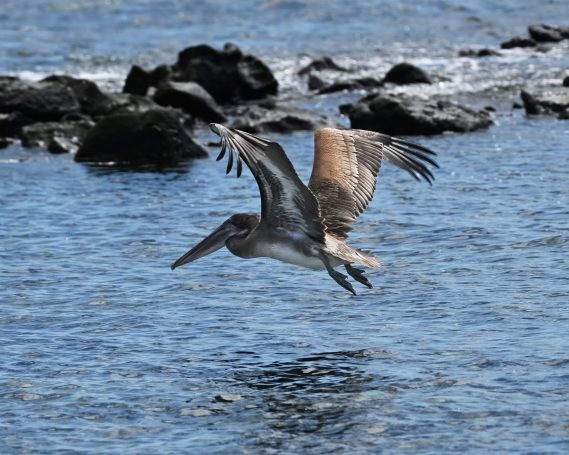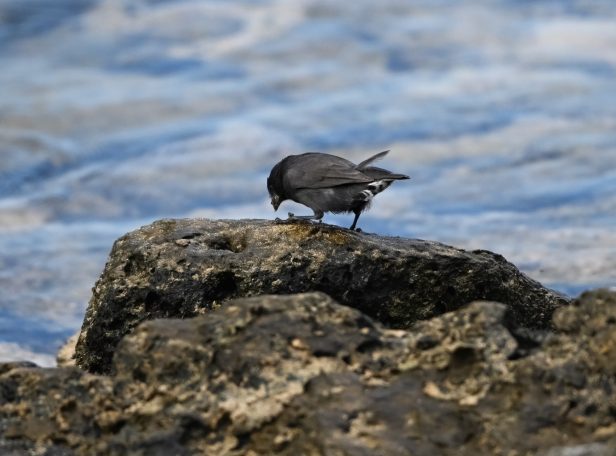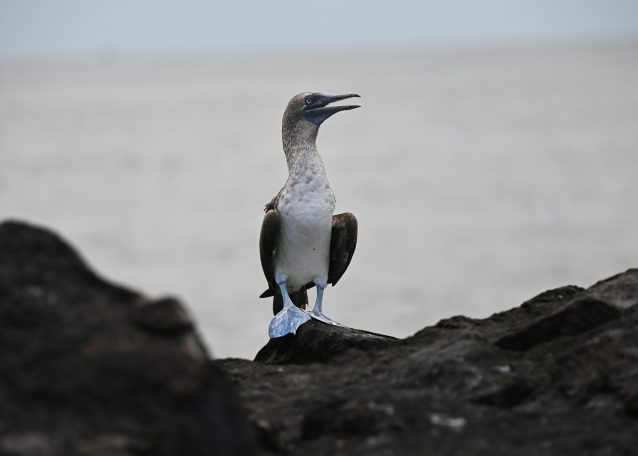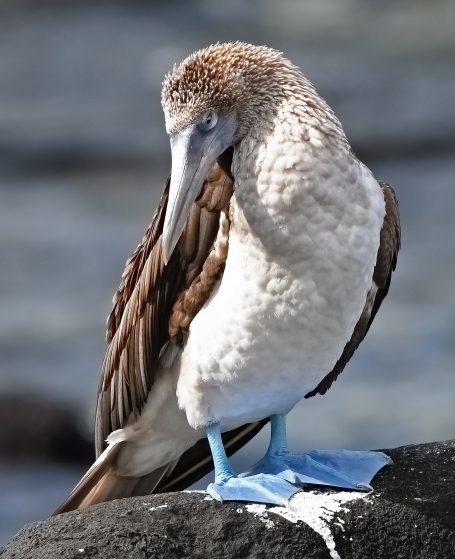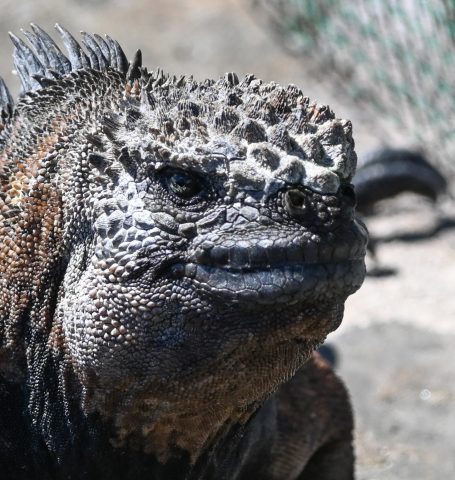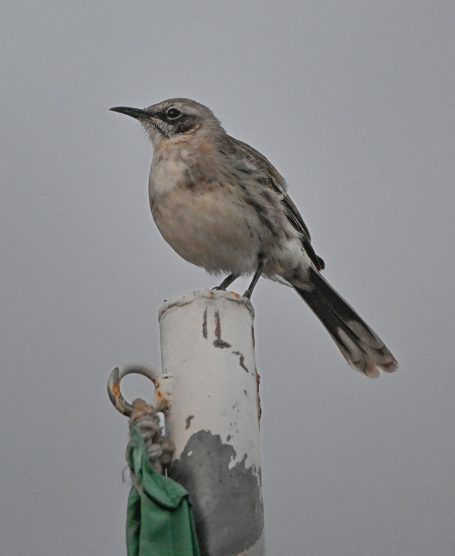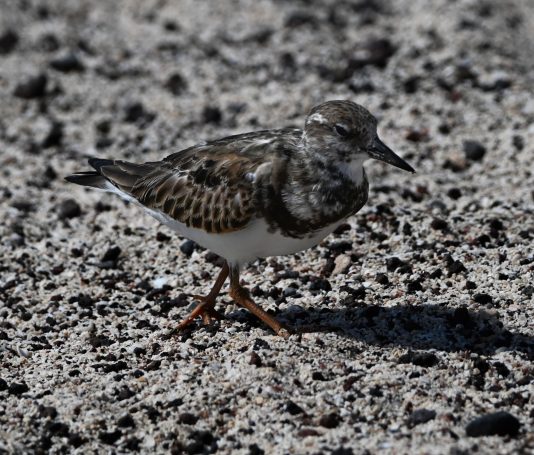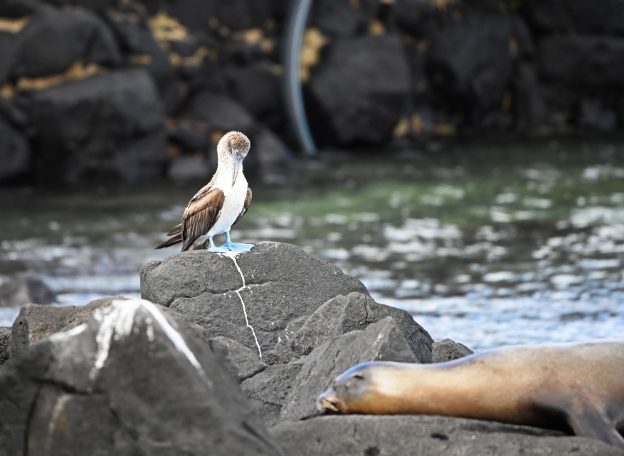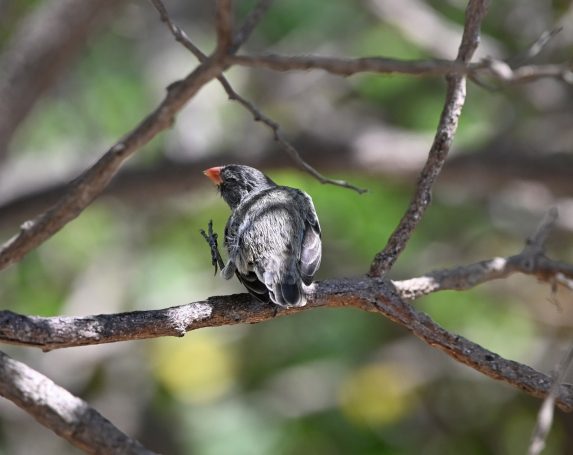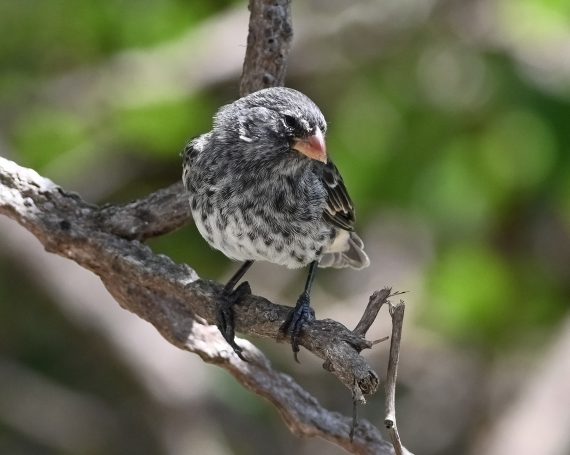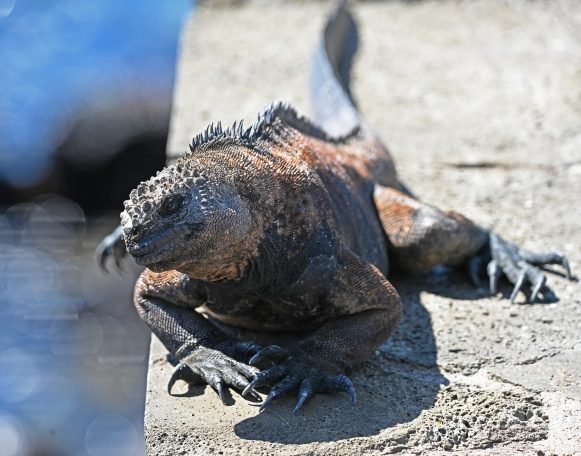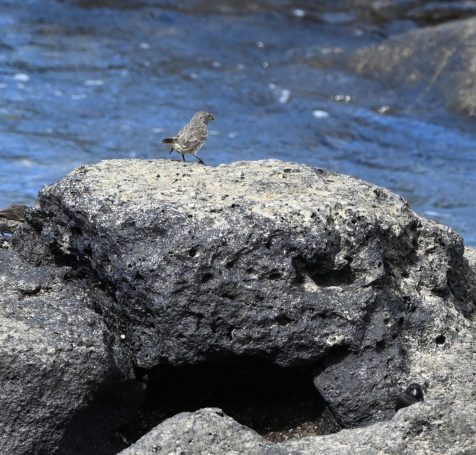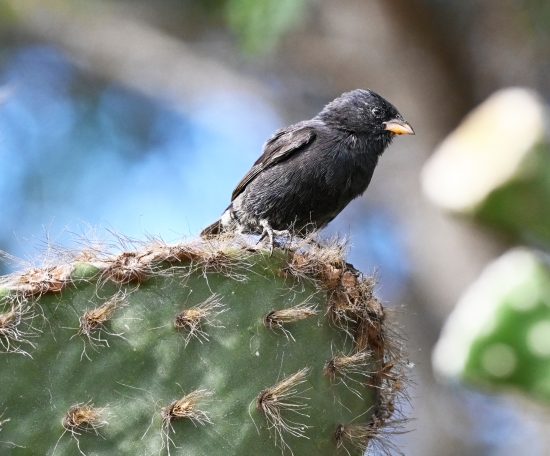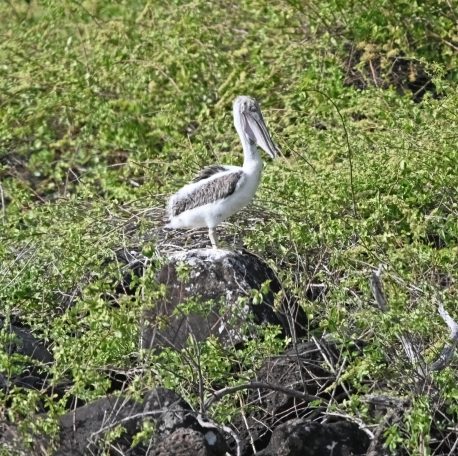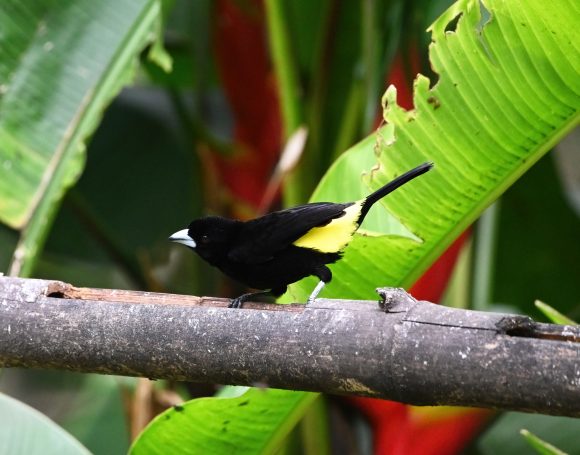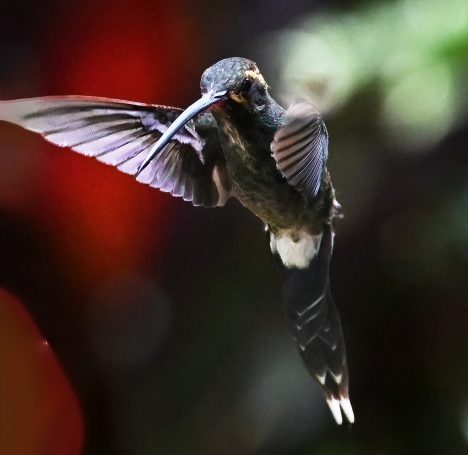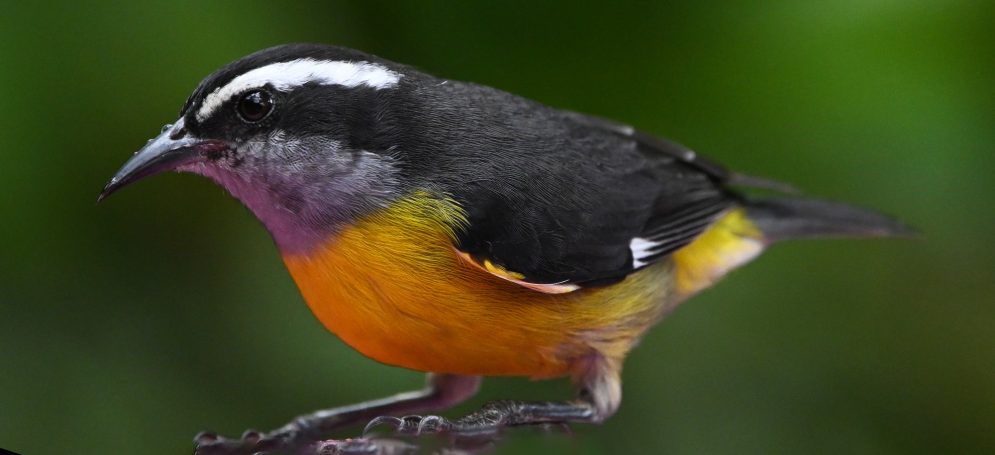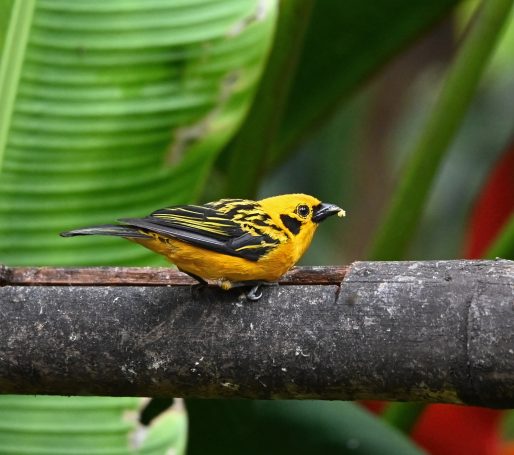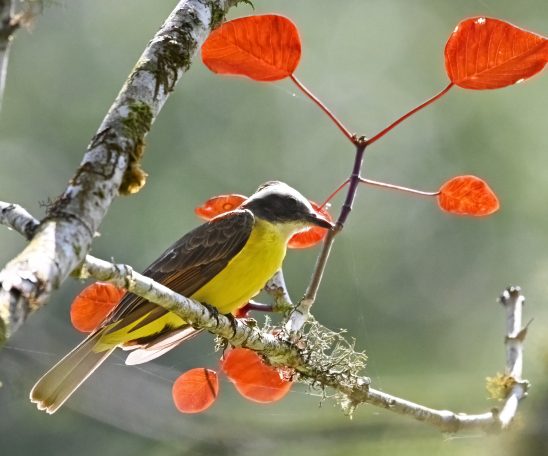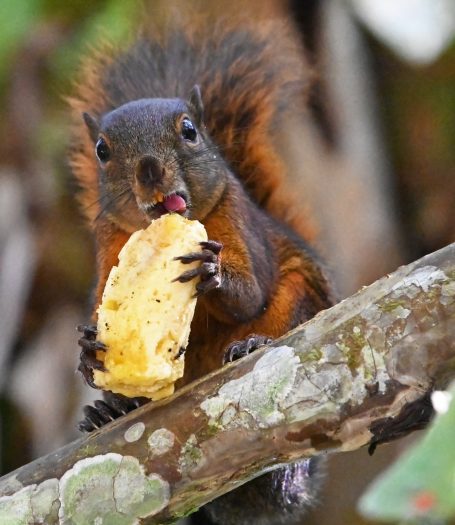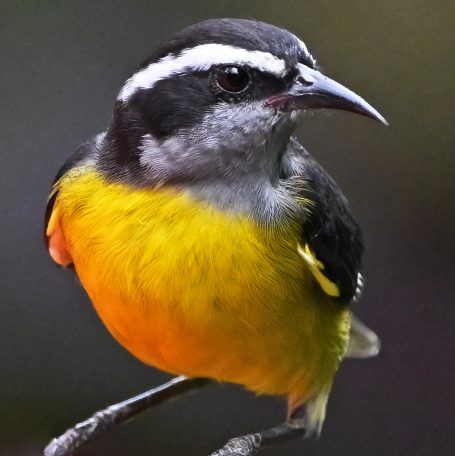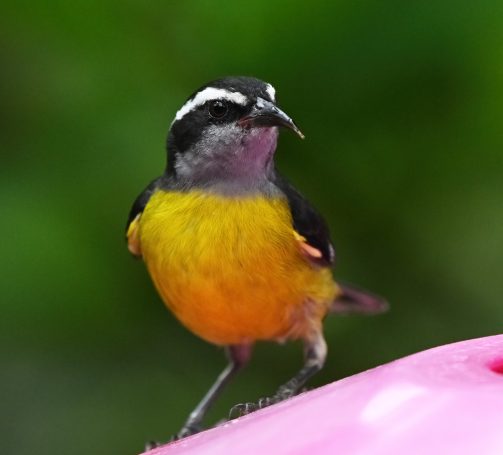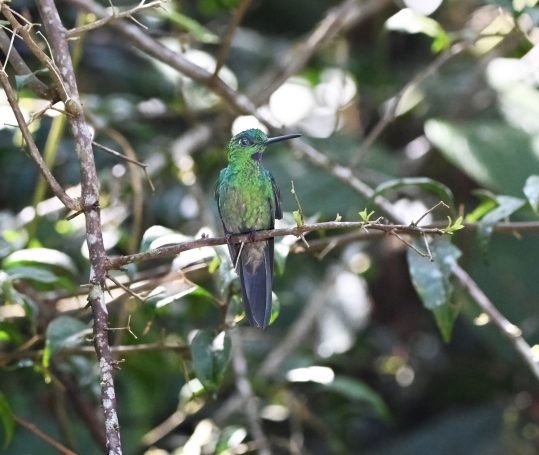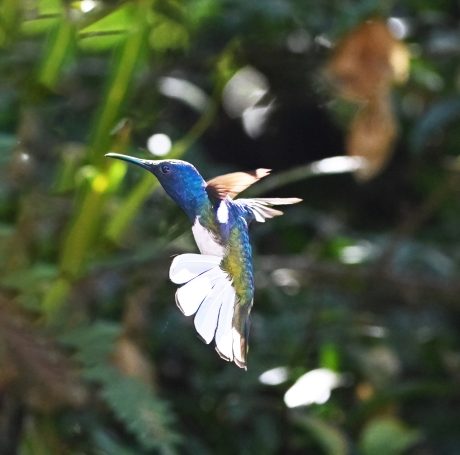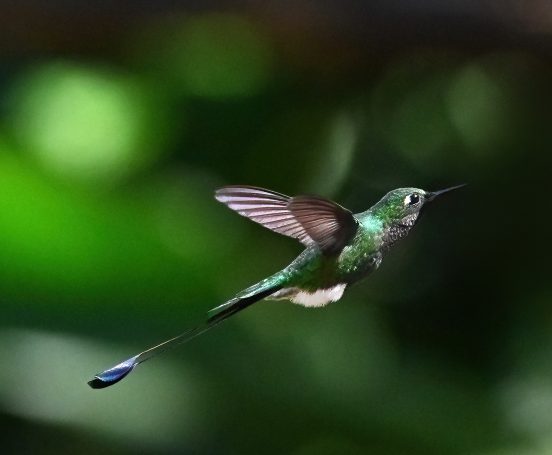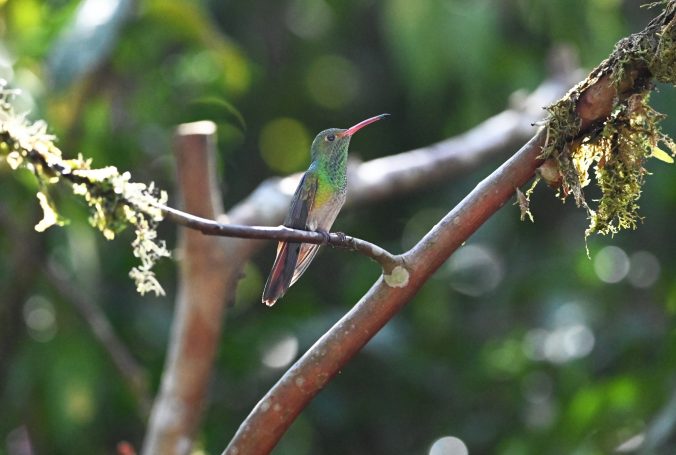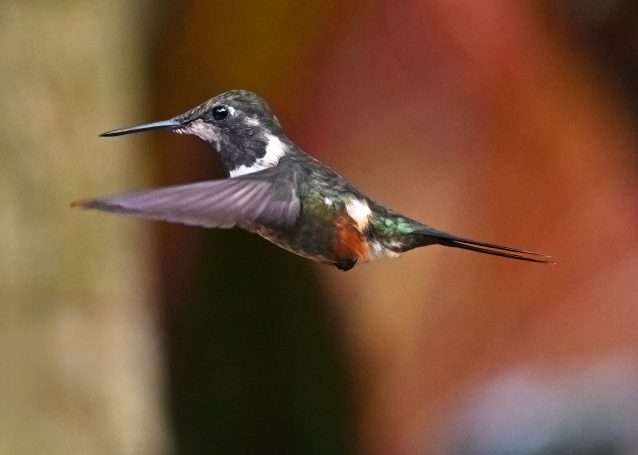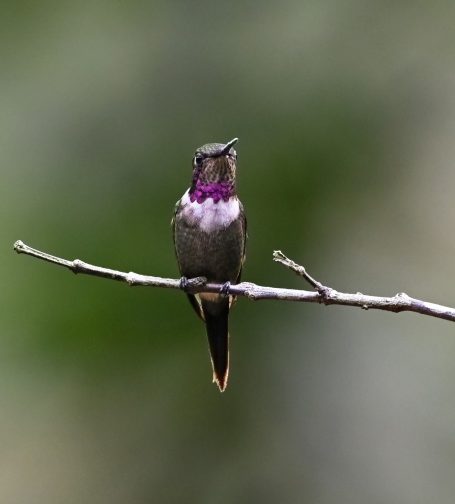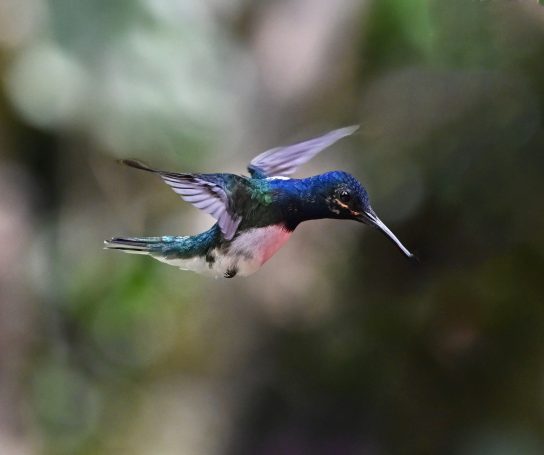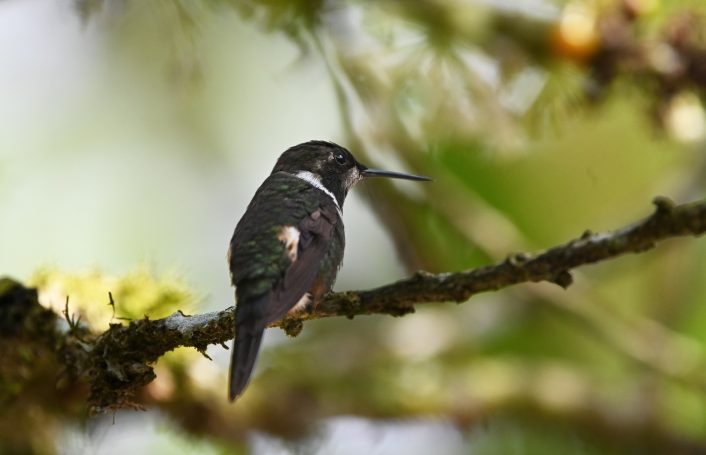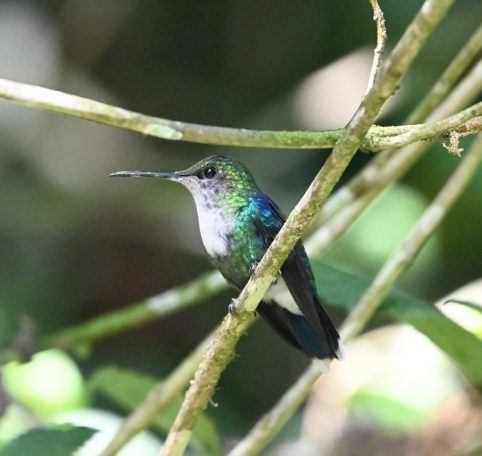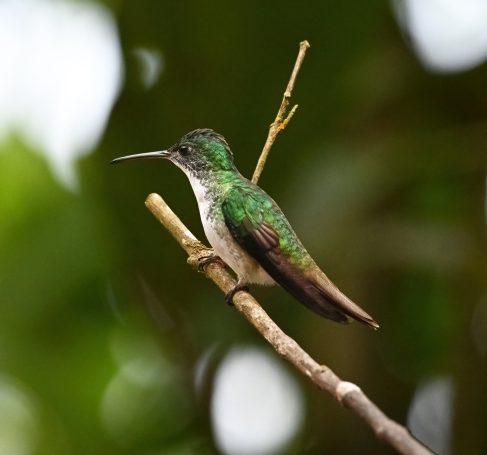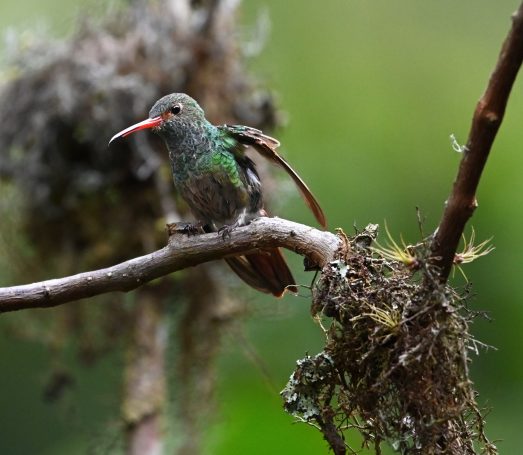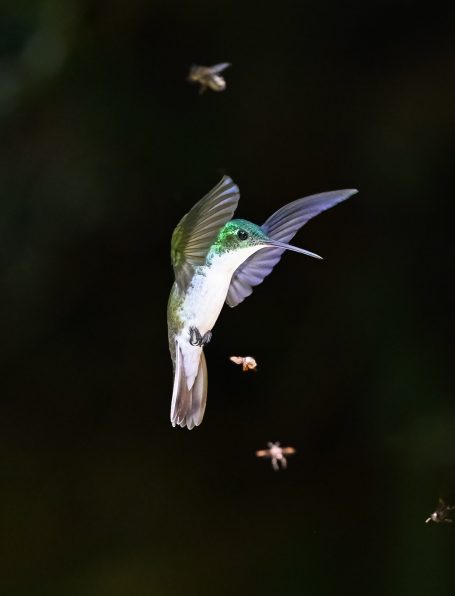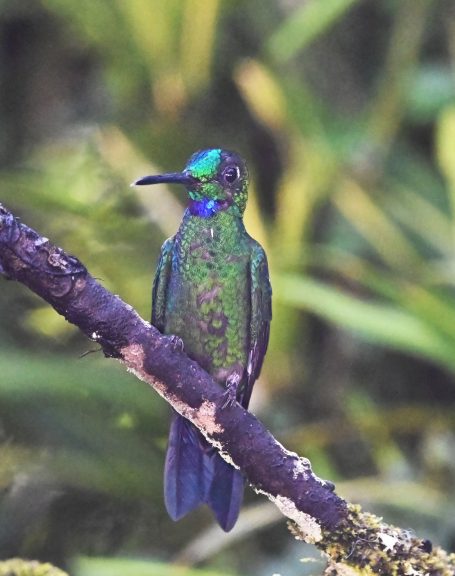December 2023
December 2023 : Walks around Parkside, Cleator Moor, Cumbria
Dec 2023 : This month has been a bit of a poor birding month, due to very bad weather and having just returned from the Galapagos and needing to work I didnt manage to get out very much, the short days and dark evenings didnt help either !
Despite the lack of trips out we did manage to enjoy the Redwings, Fieldfare and Starlings all of which enjoyed the last of the Hawthorn berries in the fields. The pond is starting to get busy again, with two Swans, lots of Greylag Geese, Teal, Mallard and the odd Golden eye.
Fingers crossed Janauary will be a better birding month !
November 2023 : Galapagos - Santa Fe from Santa Cruz
16/11/23 : Day ten on the Islands -Boat trip To Santa Fe island from Finch Bay on Santa Cruz, and the last tick off the list, the Galapagos Hawk
16/11/23 : Day ten on the Islands - Boat trip on Finch Bays boat the "Sea lion" to Santa Fe island
The Last day of excursions in the Galapagos and we cant believe how fast this once in a lifetime trip has gone, but no time to dwell as we are heading to the island of Santa Fe onboard the Sea lion. A quick power boat trip to the yacht and we are underway, this is a long trip taking an hour and half to arrive at the island, and another 30 mins into the bay to moor up before another power boat and a wet landing on the beach.
Leaving the boat we were told to be careful not to tread on any sharks ! There were 5 or 6 White Tipped Sharks swimming just off the beach, luckily they are of no danger to humans but having already accidentally kicked on on Isabela island I was careful to pick my way between them as I headed for the beach.
Santa Fe is a small island and home to a Sea Lion colony, its own species of endemic Land Iguana and most excitedly for me home to the Galapagos Hawk, the only endemic bird of prey ( although there are Barn Owl, but these are not endemic ). The Hawk was the last bird on my wish list I had left to see, there were other bird species which we had not seen due to the time of year and some island closures due to bird flu, but there was a slim chance of see the Hawk on Santa Fe. I had been told not to expect to see one as we were only allowed on the island for an hour due to National Park restrictions and the hawk were not usually seen in this area.
Upon leaving the boat however, I saw something in the distance behaving like a raptor and so ignored the Sharks and Sea Lions and made my way up the beach for a closer look. Just as I raised my camera, our guide rushed up to me shouting Hawk! At first two of them were circling high in the distance, but slowly one of them approach closer and I managed to get a few photos. This made my day, and as I made my way back to the beach and Tracey, we happily set off on a short walk looking for Iguanas.
The island is of course volcanic and the path was rough so we made slow progress through the Cactus trees, before see a few Iguanas basking in the sun to recharge their batteries. Along the path we also spotted Galapagos Mocking birds, Galapagos Doves, Sea lions, Lava Herons and Semipalmated Plovers, before heading back to the boat for our lunch. On the way back we did a quick detour in the power boat to the edge of the bay to watch the Blue Footed Boobies roosting on the rocks, the perfect way to end our time on Santa Fe.
After lunch the rest of those onboard went for a snorkel in the bay to watch the Sea lions, but having done a lot of snorkelling and swimming with Sea Lions we decided to stay on the boat deck, watching surfing Sea Lions and fishing Lava Herons in the distance. A perfect way to end our last trip on the Galapagos Islands, before the long trip back to Finch Bay on roughish seas. We finished the day with a superb meal in the restaurant, and packed our bags ready to leave in the morning.
On the morning of the 17th we headed by water taxi to town, a land taxi to the North of the Island, another water taxi to Baltra, a bus to the airport, a flight to Guaygil, another flight to Amsterdam, and quick flight to Newcastle and a two hour drive to Cumbria and home. A long journey over 24 hours and we arrived somewhat jet lagged but so happy, this may have been a trip of a lifetime but we both said we would return to the Galapagos islands again, it is simply the most perfect wildlife destination in the world.
November 2023 : Galapagos - Santa Cruz to South Plaza island
15/11/23 : Day nine on the Islands - Bus to the North of Santa cruz to board the Sea lion boat to cruise to South Plaza Island
15/11/23 : Day nine on the Islands - Bus to the North of Santa cruz to board the Sea lion boat to cruise to South Plaza Island
An early start, as we had an hours taxi ride across the island to the Baltra port to pick up the boat that would take us on our day trip to South Plaza island. After a short speed boat ride from the port to the boat, we set off on our all day tour which would eventualy take us back to the hotel at Finch Bay.
First stop was a secluded bay on the North of Santa Cruz, at the bottom of some cliffs in clear water, we moored here for an hour while some of the guests on the boat went for a snorkel, having already done a lot of this, we decided to spend the time on the upper deck watching the bird life on the cliffs. Roosting on the waters edge were Brown Pelicans, Frigate birds and Galapagos Petrels, so the time in the sun flew by quickly.
Once everyone was back on board we headed off from Santa Cruz heading toward the Plaza Islands , we were mooring between North and South Plaza, but heading to South Plaza for a trip onland to watch the Swallow-tailed Gulls and the endemic Yellow land Iguanas.
As soon as we landed we were greeted by Sealions bathing on the rocks, and Swallow tailed gulls everywhere. The gulls nest on the ground and were not even remotley bothered by us walking past them closely, we had to watch our feet however, as the eggs and the young chicks would be very easy to squash underfoot.
As we crossed the island it became clear that there was as many Yellow Land Iguanas as there were gulls! the males are brighlty coloured and the females less so , being mainly grey. These large lizards were everywhere , looking for mates in the good weather and 20 minutes soon went by as we watched them. Arriving at the other side of the island, we were greeted with the sight of five Sea turtles, fighting in the water for the right to mate with the lone female, while this was going on above the Red-billed Tropic birds , Frigate birds and Swallow tailed gulls were swooping around the cliff edge. They moved very quickly so it took a lot of photos to try and get them in focus.
You are only allowed to be on the island for one hour, and you have to stick to the paths, here the wildlife is king and we have to fit in around it. An hour is plenty though as the island is teaming with life, and we marveled as we headed back to the boat for a late lunch onboard, before heading back on the long journey back to Finch Bay for our evening meal. We arrived somewhat windswept and tired but happy.
Tommorow would be our last full day on the island with a trip to Sante Fe island and our last chance to see a Galapagos Hawk, a bird which had eluded us so far.
November 2023 : Galapagos - Santa Cruz Puerto Ayora, Darwin Research Centre & Las Grietas lava tunnels
14/11/23 : Day Eight on the Islands - Water taxi to Puerto Ayora , the Darwin Research Centre and then an afternoon trip along the coast to Las Grietas lava tunnels for snorkling and a beach walk
14/11/23 : Water taxi to Puerto Ayora from Finch Bay Hotel to the Darwin Research Centre and then an afternoon trip along the coast to Las Grietas lava tunnels for snorkelling and a beach walk.
We started the day with breakfast looking over the hotel swimming pool, watching the Pintail ducks, Lava Gulls and a Blue Heron relaxing around the pool edges! then it was a ten minute walk to the water taxi and a five minute boat ride to Peurto Ayora. Here we took a taxi to the Darwin Research Centre. The centre does great work on protecting the Galapagos endemic species and righting the wrongs done by past island visitors, who decimated the Tortoise population and brought disease and pests that threaten so many other species like the Vermillion Flycatcher we saw on Isabela island. Its mani work though is breeding and releasing Giant Tortoises.
Its most famous Tortoise was Lonesome George, a single male Pinta Island Giant Tortoise, who when found was the only remaining one of his species, all the rest having been driven to extinction by sailors hunting them for their meat. They spent nearly 40 years looking after George and trying to find him a mate to breed with. Sadly this proved impossible and George died without ever finding a mate, and with him the Pinta Tortoise breed died forever. Such was his story, that on his death his body was taken to the USA to be preserved, and it was then returned to Santa Cruz to serve as a reminder of just how stupid and destructive the human race can be without even thinking about it. We visited George in his climate controlled tomb and it was a very sombre moment, but we also felt honoured to have met him, all be it after his death.
From here we walked back along the harbour front, stopping off at the local fish market where Brown Pelicans, Blue Herons, Lava Gulls and Sea lions all wait to be fed by the fishermen ( see the videos below). This was an amazing place to see so many rare endemic breeds happily coexisting with the humans on the islands.
We then got the water taxi to the hotel before setting off for a boat trip around the coast , finishing at Las Grietas which are lava tunnels, filled with the tide and home to a vast array of fish. Along the way we watched the Red Billed Tropicbirds and Blue footed boobies on the coast line.
A great short island day, with fantastic wildlife and a little rest before a full day boat trip tomorrow to South Plaza island.
November 2023 : Galapagos - Santa Cruz from Isabela via Baltra
13/11/23 : Day seven on the Islands - Isabela Island to Baltra, then boat trip across to Santa Cruz and the trip across the island to our hotel, stopping at a Tortoise sanctuary, Lava tunnels and Collapsed lava chamber on the way.
13/11/23 : Leaving Isabela island and flying to Santa Cruz via Baltra island
We left Isabela early in the morning, traveling to the third of our Islands of Santa Cruz. We flew in a small twin prop plane, seating six people, to the island of Baltra which is an small island just off the coast of Santa Cruz, and the site of an old American airforce base which now serves as the main airport for Santa Cruz. The flight took about 40 minutes and the plane so small Tracey sat in the co pilots seat while I was squeezed into the back! The views were amazing and we landed safely without incident, grabbed our bags, met our guid and headed off for our ferry to Santa Cruz
This is the most populated island on the Galapagos with a population of 18,000 people 90% of which are in the main town of Puerto Ayora. The majority of the island like all of the islands is set to National Park and heavliy restricted, in order to protect the wildlife and environment, we were staying at the Finch Bay hotel which is just outside of Puerto Ayora and reached only by the hotels water taxi from the town. In order to get there however we got a ferry from Baltra to Santa Cruz ( a 5 minute trip) then drove across the island for an hour, but along the way we stopped at Los Gemelos, some lava tube tunnels and a Tortoise sanctuary.
Los Gemelos was out first stop, this is the site of two twin collapsed lava chambers which have left behind enormouse caverns, filled with rain forest and Scalsia trees. The wildlife here was mainly birds, Darwin Finches, Galapagos Doves, Flycatchers and Warblers. The walk took about 40 minutes and was like being in some prehistric landscape.
Leaving here we stopped for lunch at a Tortoise Sanctuary and large estate with grounds were the Tortoises roamed free, the road into the centre was a few miles long and everywhere you look these enormouse creatures were roaming free, we stopped counting a 100 but the was easily double that. Cattle Egrets were roaming with the Tortoises, along with the Warblers, Darwin Finches, Mocking birds and flycatchers.
After lunch we headed off to the hotel, but we stopped briefly to explore some lava tunnels hoping to see the Barn Owls that lived in them, sadly they were not to be found , so we left for Puerto Ayora counting more Tortoises as we went !
Once at the town, it had a different fel to the other islands we had been too, although only a small town in real terms it felt more commercial and busier than the others, but once we got our water taxi to the hotel the normal Galapagos returned and the walk to the hotel was through volcnic mangroves, with Marine Iguanas, Lava lizards and Lava Herons alnog the way. Great White Egrets were flying overhead and by the pool were six Lava Gulls ( one of the rarest birds on Earth).
The hotels is right on the beach and in true Galapagos style was teaming in wildlife which was welcomed. The pool had Lava Gulls, Pintails and Herons in it and an American Oyster catcher sat by the bar next to a few Lava lizards. We settled into the total luxury that the hotel provided, had a superb meal and went to bed early to be ready for our expedition the next day which was to be a trip to the Darwin Reseach Centre followed by a trip around the coast, finishing with a snorkle trip in the Lava tunnels.
November 2023 : Galapagos - Isabela island
12/11/23 : Day six on the Islands - Isabela Island
Morning trek up the Sierria Negra Volcano and afternoon exploring Las Tintoreras Islet
12/11/23 Sierra Negra Volcano in the morning and Las Tintoreras islets in the afternoon
Today started wet and muggy but with a forecast to clear, so we headed off with our guide to the Sierra Negra volcano. I was looking forward to this excursion but not only is it a live volcano which last erupted in 2017/18 but it is also home to one of the rarest species of birds on the planet the Vermillion Warbler.
Starting off from the National Park registration centre we headed off up a gentle gravel track through green brush land, we had only got 10 mins into the trek to the volcano crater when we spotted a little yellow bird, upon closer inspection though we found it was a juvenile Vermillion male Flycatcher , this was going to be a good day ! Further up we were delighted to spot both adult male and female Vermilion, and over the course of the walk we saw 16 individual birds. This is an amazing number when you consider there to be only 200 know in the wild. The Vermillion Flycatcher suffers from a parasite grub of a wasp which infects the young in the nest and eventually kills the birds, this has caused the numbers to plummet and it is in serious danger of extinction. Thankfully, there is a lot of work being done by the Darwin research centre and with luck this will help the amazing little bird to recover.
Further along the track we spotted Darwin finches, Smooth billed Anis and Galapagos Warblers, but the star was the flycatchers. As we approached the top we could see the rim of the volcano and in no time our guide had taken us to the very top of the rim looking down into the volcanos crater.
This is an active volcano and in the distance across the basin there is steam rising from a vent, but at 6km across this was hard to spot. The whole of the basin is a sea of lava rock, so rough that it would be impossible to walk across, so we were happy just to stand and marvel at the sight, the last eruption was 2017/18 and so there is another one due in a year or two, strange to think this whole area could become active again soon.
Photos taken we headed back down the track, past more Flycatchers to our taxi and a quick trip back to the lodge for a well earned lunch before heading off on another adventure this afternoon!
Once fed and watered we again met our taxi and headed off to town to pick up our snorkels and fins, then onto a boat for a tour around Las Tintoreras islets, a series of volcanic rock islands and tunnels close to town, and a haven for wildlife. We toured the bay looking at Blue Footed Boobies, Sea Lions and Penguins before landing on the isle and exploring the lava fields which are now a breeding site for the Marine Iguanas, this island also gives you a great view in to the lava tube channels and the sea life within. We spent a good hour watching the sharks, puffer fish and turtles in the water and Sally Lightfoot crab, Lava Herons and Galapagos warblers before getting back onto the boat to take a short ride to where we could get in to snorkel along the lava tubes and between the lava reefs.
Once in the water, we were immediately of interest to the Sea Lions who came over to play, and we spotted a huge range of fish, Turtles, Reef sharks and even Puffer fish along the way. An hour later we headed back to the mainland for one last night on Isabela, before heading off to Santa Cruz in the morning. A long but perfect day and despite a damp tent and very loud rooster crowing, we had a well earned good nights sleep.
November 2023 : Galapagos - Isabela island
11/11/23 : Day six on the Islands - Isabela Island
Walk along the beach, through the mangroves to the Wall of tears, then in the afternoon a snorkeling trip
11/11/23 : Isabela Island, The Galapagos - Walk to the Wall of Tears and Snorkelling in the afternoon
We were picked up from our tented lodge at 8am after a sleepless night, a Rooster was crowing every hour from 1am and it rained so the tent was somewhat noisy ! We were leaving early as we had a longish walk up to an old Prisoner of war camp, known as the wall of tears. The prisoners were forced to build a wall in the wilderness, the wall served no purpose other than to punish the prisoners and many died and were entombed within the wall. This is a part of the Galapagos history that was particularly brutal and although a sombre place, the walk to it through the mangroves was set to be a good one.
We set off before it got too hot, and in the mangroves it was cool, we left the mangrove and onto a beach which was alive with birds. Blue footed Boobies, Frigate birds and Brown Pelicans were all diving for fish on the incoming tide. We could have stayed here for hours just watching the spectacle, but after a few photos we left as we wanted to get the majority of the walk done before it got too hot in the midday sun.
The track through the mangroves and cactus forests was a gravel one, slowly creeping upwards, we passed a view point on a hill which we were going to return to on our way back. All along the track we were looking out for Tortoises in the wild, many of these would have been released from the breeding centre we visited yesterday, and some had been here for years. Clearly the breeding and release scheme was working as we passed well over a dozen on our walk.
We reached the end of the trail at a desolate place with a sombre feel to it, and approaching down stone steps we were faced with a huge wall, 6 or 7 meters wide and as tall as a house. It was sad to think this structure was built with the suffering of men, forced to build it in the heat with no tools and for no purpose. This is a protected monument now, honouring the men who died and so we didn't linger. It was well worth the walk to visit it and have a moment of silent contemplation, but not a place I would choose to return to in a hurry.
Leaving we headed up to a view point on top of a hill above the track, no easy task in the midday sun but the vista from the top was worth it. We looked out along the coast at the volcanic islands off Isabela and then the other way to the Volcano Sierra Negra, which we would be climbing tomorrow.
We set off back to our taxi, wanting to get out of the sun before we ran out of water, but we did stop along the way to look at the Volcanic Tunnels caused by lava hitting the sea, sitting inside the tube you got a real feeling of just how far from the rest of the world we were.
Thankfully the taxi came and brought with it ice cold water which was very much appreciated, our guide Erika had thought of everything :)
After a lunch back at the lodge, we headed back into town and met with Erika to collect our snorkels and fins and we headed off to the coast to snorkel in a bay surrounded by mangroves. I trip was briefly paused while we tried to persuade a Sea lion to move off our path, which eventually it did so reluctantly.
Once in the water we were treated to Sea Stars, Sea lions, a vast amount of fish, and Turtles. Such an amazing place to visit and made even more exciting when I realised we were also swimming with White Tipped Reef Sharks, I only spotted them after accidentally kicking one with my fin! It didnt seem to mind and we got to watch it swim away happily.
November 2023 : Galapagos - Isabela island
10/11/23 : Day five on the Islands - Isabela Island
Flight from San Cristobel to Isabela and a day in the wild. Airport to beach, beach to Wetlands and Tortoise breeding center, then back to the beach and the lodge in the highlands.
10/11/23 : San Cristobel to Isabela island, then hitting the ground running and touring the beach and the wetlands with our guide Erika
We left our hotel in San Cristobel early and caught a 6 seater plane to Isabela Island. The plane was small and the inflight meal was a granola bar handed out before we took off by the ground staff ! The plane was too small to eat the bar however without digging your neighbour in the ribs, so it stayed in my rucksack!
The flight took about 40 mins and was loud so we wore ear protectors all the way, chatting was not an option. As we approached Isabela it became clear that this island was very different to San Cristobel. In geological terms Isabela is a much younger island, and is still volcanically active with five volcanos, because of this the whole feel to the island was different. As you approach the island from the air you can see vast lava fields around the edge of the island, they look as if they were flowing yesterday but are in fact 3000 years old. Cactus and other scrub is growing among the lava now but much less than in San Cristobel, however when you glimpse the highland you see that by contrast this area is full on rain forest. We were arriving at 9am and the mist was clearing around the coast but still present in the highlands.
Isabela is the largest of the the Galapagos islands, but only a very small proportion is open to the tourist and there is only one town of Puerto Villamil, We were staying in the highlands on the edge of the Sierra Negra volcano, 15 mins away by car from the town. This volcano is still active, last erupting in 2017 and thankfully not predicted to be live again anytime soon.
The whole island is covered by the National Park, and so as in all the islands you need a guide, we were meeting ours at the airport, and she would guide us for the next three days. Despite having only 5% of the island open to us there was a lot to see and explore and we hit the ground running. We landed and were taken to our our accommodation by taxi with Erika pointing out everything we could see, we were staying at a tented lodge in a Banana plantation / rain forest. The tents were on a large raised decking area and were wooden floored with a double bed and a shower room, this was glamping Galapagos style.
We had been warned that we might be sharing with large banana spiders but not to worry about them, Tracey didn't look convinced! We didn't however have much time to explore the accommodation as we quickly deposited our bags and headed off for the first half of todays tour.
We headed off with Erika for the coast and a walk around the wetland lagoons and beach. We hadn't arrived at the beach when Erika stopped the car at an old gravel quarry because she had seen something earlier she thought we might like. Looking over the edge into the quarry we were greeted by the wonderful sight of two American Flamingos and one Juvenile, this was another species to tick of the list and they were great to watch, we even got a glimpse of a few White Cheeked Pintails on the lake as well.
The road into the town quickly changed from tarmac to sand and we entered what I can only describe as the perfect beach town. Sandy roads, small shops, cafes , bars and bakeries on each side and directly behind the main road was the most perfect white sanded beach. This is a small town and there was hardly anyone around, those that were we all on the beach, but even with that we felt like we had the area pretty much to ourself.
From the beach we watched the Brown pelicans diving for fish, and then noticed the Galapagos Penguins swimming and diving with them. Blue Footed Boobies & Frigate Birds were flying overhead, Whimbrels on the beach and Franklins Gulls everywhere. We had to watch our feet as we explored further as the Marine Iguanas were everywhere, on the rocks, in the sea and even on the steps to the pier and viewing platform.
We wandered around for a couple of hours, stopped at the bakery and ate our pastries as we watched the wildlife do its thing on the beach, what a place this was! All too soon our taxi arrived and we headed off to the lodge for lunch, then another quick turnaround and out again for the afternoon.
This afternoon we visited a Galapagos Tortoise breeding centre, a large operation that was breeding hundreds of the Giant Tortoises, that would be helicoptered all around the island for release. Like the other islands, Isabela had a population of endemic Tortoises that had been hunted to near extinction of the years by sailors using them as an easy source of meat. The centre was doing a superb job and the islands numbers are well on the way to returning to good levels, but its a long term endless job to achieve this and one the locals take very seriously.
After the Tortoise centre we walked along duck boarding through the inland wetlands towards the beach. The wetlands are a series of brackish ponds and salt marsh, refilled at high tide and they are the home to a good selection of birdlife. We were lucky enough to see plenty of Darwins Finches, Galapagos Warblers, Galapagos Flycatchers ( another tick off the list ) , Smooth billed Anis, White Cheeked Pintails and a Blue Heron. Just as we were about to leave the wetlands we spotted two more endemic birds the Lesser Yellowlegs and the Black Necked Stilts, I was going to have to get a bigger tick list at this rate.
Back onto the beach once more to sit and watch the sunset while eating Empanadas from a beach side cafe hut, what a perfect way to finish the day, before heading back to the lodge for a night in our rainforest tent !
November 2023 : Galapagos - San Cristobel
09/11/23 : Day four on the Islands - San Cristobel, Darwins Bay & Playa Punta Carola Beach
Snorkeling, Boobies and Marine Iguanas : diary write up after the photos and videos below
09/11/23 : Day four San Cristobel : San Cristobel town in rain, Darwins Bay & Playa Punta Carola Beach
The day dawned with a hot and humid feel, and as soon as I ventured out to see what early morning wildlfe was about (06.00) the heavens opened and it chucked it down, the video shows this as I hid on the harbour front under a shop doorway. This was however just a passing shower and as the day progressed the clouds went away and the sun came out.
Today our guide Marco, was starting the day by taking us for a walk up to the headland over looking Darwins bay. We left the hotel in a taxi for 5 mins and started the walk up to the viewing platform, breaking the walk by a visit to the National Park information center , which was packed with information about the island and Darwins visit. A short climb after this and we arrived , looking down into the blue waters of a natural bay, this was the place where Charles Darwin moored his ship the Beagle, and ventured onto the island to explore, and a statue above it stands proudly at the viewing platform.
We carried on, descending to the bay itself and a platform where we got ready to go for a a swim and a snorkle. In the water it was packed with dozens of differant types of fish, Turtles, Sea lions and White tipped reef Sharks. See videos below.
After a quick change, we headed off continuing our walk to a beach just outside the town, called Corala Beach. This headland is gaurded by a reef and a light house warning ships approaching the harbour. The beach is popular with the locals and wildlife, and we soon left our bags on the white sand and went exploring.
Everywhere you looked an animal or a bird showed its face, the lava rocks near the lighthouse was teaming with Blue footed Boobies and Brown Pelicans. The rocks hid Lava Lizards, Marine Iguanas, Sealions, Darwins Finches and Galapagos Warblers, while Sally Lightfoot crabs scuttled about.
We could have spent all day here, but our time was coming to an end and so we headed back with our guide to the hotel and another great dinner. Tommorow we would leave San Cristobel and fly to the island of Isabella.
November 2023 : Galapagos, San Cristobel
08/11/23 : Day three San Cristobel : El Junco Lake , Cerro Colorado Tortoise rescue center and Puerto Chino Beach
Frigate Birds, Tortoises and Sea Lions on an inland tour of San Cristobel : write up diary after the photos and videos below
08/11/23 : Day three San Cristobel : El Junco Lake , Cerro Colorado Tortoise rescue centre and Puerto Chino Beach
After a day at sea yesterday we had a day exploring the islands booked today, the weather was a little grey and cloudy but very warm so we packed our water proofs and headed off. The taxi and our National Park Guide Marco picked us up from our hotel in the middle of a torrential downpour and announced that we were not to worry it would clear up as the day went on !
Our first stop was to visit El Junco, this the only freshwater lake on the island and was at the highest point in the basin of an old extinct volcano. We parked at the bottom and walked up a well made, if a little muddy track, along the way we passed too many Darwin Finches and Galapagos Warblers to count and headed up into the cloud.
At the top we stopped at a viewing platform before walking around the rim of the old volcano above the lake. The lake was famous for its Great Frigate birds which seem to gather here to either breed or drink, no ones know exactly why. Whatever the reason, they were here in good numbers today, they skimmed the surface of the water, scooping up a little to drink before soaring back into the sky. Despite being mainly a marine bird, the Frigates are not waterproof, lacking the oil gland that most seabirds have, because of this they can not dive into the water to hunt, instead they can only get wet for a very short time otherwise they wont be able to get airborne again and would drown. This means they have to be quick, at the coast they are known as the pirates of the sky because they will steal another birds catch either in the air, or as they emerge from the sea.
As we walked around the lake we spotted a male with it's semi inflated red pouch hanging at his neck, along with some Cattle Egrets in the distance and some White cheeked Pintail ducks on the water itself. The cloud was lifting a little so we headed off to the beach, but on the way we stopped at a Tortoise breeding centre.
Cerro Colorado Tortoise centre was set up to help breed the endangered Tortoises by allowing them to breed in the wild and the young are then transported to the release sites. This means that they are many different species of Giant Tortoises here, rather than the one species native to San Cristobel. The Tortoises are allowed to roam free in a very large area of enclosed land, with plenty of their favourite food, the poison apple tree.
Each island in the Galapagos once had its own different type of giant Tortoise, so it was interesting to see many different types here in one place roaming freely.
After an hour or so our guide told us it was time to move on as we would be seeing many more Tortoises in the rest our trip, and we left for our final area to visit of the day, a beach known for its good surfing and snorkelling. We had had a whole day in the water yesterday, so today we chose to wander around the beach, looking at the cactus forest, Sea lions, and Blue footed Boobies. The highlight of the day was watching a group of Lava Gulls on the beach, these look a little plain at first glance, a dark grey and black gull. They are however one of the rarest birds on the planet, they have a breeding population of only 400, and you can only find them on the Galapagos islands.
Happy and tired after a lot of walking we headed back to the hotel for our meal and maybe a walk along the harbour front in San Cristobel. Tomorrow we would be staying close tot he hotel on a walk to the islands visitor centre, followed by Snorkelling in Darwins bay.
November 2023 : Galapagos
07/11/23 : Day two San Cristobel : Boat trip to Kicker Rock
Day Two in San Cristobel we took a boat on the two hour trip to Kicker Rock off the coast of the island and stopped at a secluded mainland beach on the way back
07/11/23 : Kicker Rock and Puerto Grande beach, San Cristobal, The Galapagos islands
This was our first full day on the island and today we had a boat excursion and Snorkelling trip booked to take us to Kicker Rock. This is a volcanic rock formation which rises out of the ocean off the coast of the island, rising to 600 meters high above the water and going down the same depth below. The sea here is home to Hammer Head sharks, Orcas, Dolphins, Sea Turtles, and a huge range of fish, some of which we hoped to see today, but most exciting was the range of sea birds that roost on the rock, in-particular the Nazca Boobie, Brown Noddy Tern and the Red billed Tropic birds.
The trip out took about 1.5 hours and the boat was followed all the way by Galapagos Shearwaters and Band Rumped Storm Petrel, all of which were far to far away to photo against the reflected water, but was a great sight to see. As we approached the rock the sheer size of it started to become clear, as was the amount of life it contained. Great and Magnificent Frigate birds were all in the air and roosting on the sides we could see Nazca Boobies, Blue Footed Boobies, Brown Noddy Terns, Sooty Terns and Brown Pelicans. Close to the rock cliffs we also managed to see the Red Billed Tropic birds swooping close to the rock.
We took the boat on a circuit of the rock before stopping by the arch and jumping in! Once in the water we were away of dark shadows below us, these were the Hammer Head Sharks we had heard about that gather here in the deep water. Honestly, if I wasn't informed by our National Park Guide who was swimming with us that they were Hammer heads I would never have guessed as the were a long way down. What wasn't a long way away was the Sea Lions that took great delight in swimming under and around us, playing with the strange new people in the water. Sea Turtles were also swimming about with us, and we were told that the day before a family of Orcas ( Killer Whales) were in this location hunting the turtles and all the swimmers had to be taken out of the water for safety.
After an hour in the water watching all the wildlife and just amazing at the fact that we were here in such a wonderful place we got back on the boat for lunch and then headed to Puerto Grande beach which is on the mainland opposite the rock. The trip was about 30 mins and just as we left we were greeted by a pod of Dolphins just off the rock. Arriving at the beach we stopped in the bay, and some people jumped in the tender to be taken to the beach, but I chose to snorkel and see what I could find on the way. The water was again full of life, fish of all sizes and colours, a Ray and lots of Turtles.
The Beach itself is very protected and you are only allowed to spend one hour here, and must take nothing with you when you leave. The beach was a mixture of fine white sand and rough sand made up of Shells and Coral. Behind the beach was a rough Lava landscape covered in cactus and scrub. As I we were all barefoot we couldn't go too far as the rough beach was painful to walk on if you left the waters edge ( this was intentional to stop tourists going into protected areas). Some of the boats guests chose to sunbath here, but we were too excited as we had not come all this way to lie in the sun !
A short walk along the shore and were watched Marine Iguanas, endemic to the islands and made famous by Darwin. They swam through the sea stopping to eat weed off the rocks. Hopping through the rocks were the Darwins finches, the one here were the Lava Finch variety and joining them were the Lava Herons. Theses Herons started off as a Striated Heron many years ago, but evolved their plumage to better fit their volcanic environment and are now a sub species only found in the Galapagos.
Our time being up I swam back to the boat, passed a colony of Blue footed Boobies on the lava rocks and we enjoyed a sunny if windy trip back to San Cristobel on thew front of the boat, watching out for any new wildlife.
November 2023 : Galapagos
06/11/23 : We arrive at San Christobel island, The Galapagos
This section is the wildlife we saw on our first afternoon / evening on the island having flown in from Quito
06/11/23 : We arrive from Quito at San Christobel Island, The Galapagos
Today we left Quito, the airport is about an hours drive from the city, and you need to get your bags checked for organics that are not allowed on the islands, pick up your pass and board the plane. The plane we were on flew first to Guayquil airport where most of the passengers disembarked, we stayed on the plane and after 40 mins we were refueled and on our way to the Galapagos. The flight was just over an hour and we landed on the smallest airstrip we have ever seen and entered the Galapagos proper.
We were picked up and taken to our hotel on the harbour front, there is only one town on the island and its 2 mins from the airstrip so as soon as we had checked in and unpacked, said hello to the Galapagos Warbler perched on our balconey, we decided to have a walk along the harbour front before we had our tea.
What we couldnt expect was the sheer numbers of wildlife that was right there, straight away as we walked along. The beach in front of the hotel was full of Sealions, young and old swimming, sleeping and playing. Among the Sealions were Rudy Turnstones, Frigate birds flying over head, Pelicans perched on the on the fences and Marine Iguanas all over the rocks and piers.
Further along the Blue Footed Boobies were flying high up before diving directly down into the sea and emerging with a fish, exactly the same as Gannets do in the UK.
Further along there were Sea Turtles everywhere, Darwins Finches, Galapagos Mocking birds, Sally Lightfoot crabs and Lava Gulls ( one of the rareest birds on the planet)
All of these birds and animals had zero interest in us , and both ignored us and refused to move as we walked along. Here you have to keep six feet distance between you and an animal, and its down to you, they wont budge ! So we often had to detour to avoid standing on a Sea Lion or a bird.
Amazed and shocked we returned to the hotel , changed and went for our evening meal, along the way a Lava Heron ( a Striated Heron offshoot) just jumped on to the fence rail to get a look at us, we both just stood with our mouths open. Tommorow we were being guided on a walk up to the volcanic crater and fresh water lake in the middle of the island and literally couldnt wait, we fell asleep to the sounds of the Sealions playing outside our hotel and we were smiling from ear to ear, this was going †o be an amazing trip.
November 2023 Ecuador
02/11/23 to 05/11/23 : Ecuador & Galapagos trip, Binor rain forest Ecuador Updated 22/11/23
Section two of this day trip added 22/11/23
1/11/23 - 3/11/23 : Updated on 22/11/23
The Hummingbirds were everywhere at the lodge and it was easy to be distracted from the other birds and wildlife hiding around them. The most obviouse one was a Guayquil Squirrel, a sort of grey / red hybrid endemic to the area, this looks very much like our UK squirrels but this one tend to favour fruit and ours today was munching on bananas picked direct from the trees.
The other birds were small and exotic and with few exceptions very colourful, which I guess fits the rain forest environment. The final treat before we headed back to Quito was an Andean Vulture flying overhead , hard to see in the bright sun but it was overhead for a long time before we lost sight of it.
We left Mindor excited, if a day trip could be so full of wildlife what would we find at the Galapagos
November 2023
01/11/23 to 03/11/23 : Ecuador & Galapagos trip, Binor rain forest Ecuador Updated 20/11/23
Work in progress as I collate more images, check back for updates soon
1/11/23 - 3/11/23 : We arrived in Quito which at such high alltitude meant that the first day was taken up with eating and failing to sleep! The second day we embarked on a cultural tour of the capital city in the old colonial quarter and then on the third day, we were begining to get used to the hieght and so we set off to the rain forest by taxi in search of Humming birds and other native species.
We were told to go to a small lodge where the family had been putting out feeders for the humming birds for 2 generations. Two hours later our taxi pulled up to an old single story lodge where the owner was busy filling the feeders with sugar syrup, and the air was litteraly buzzing with flying creatures, at first we thought from a distance it was bees, but as we got closer it was clear they were Hummingbirds, dozens of them.
more to follow very soon........
© Copyright. All rights reserved.
We need your consent to load the translations
We use a third-party service to translate the website content that may collect data about your activity. Please review the details in the privacy policy and accept the service to view the translations.

